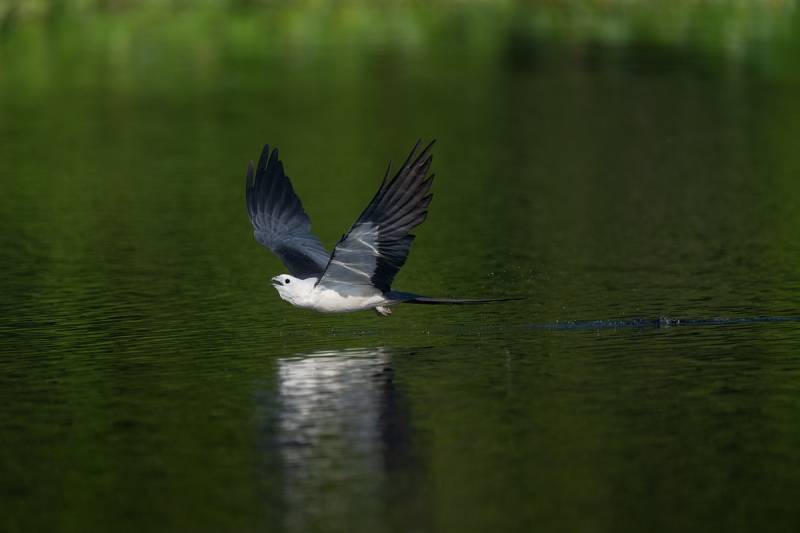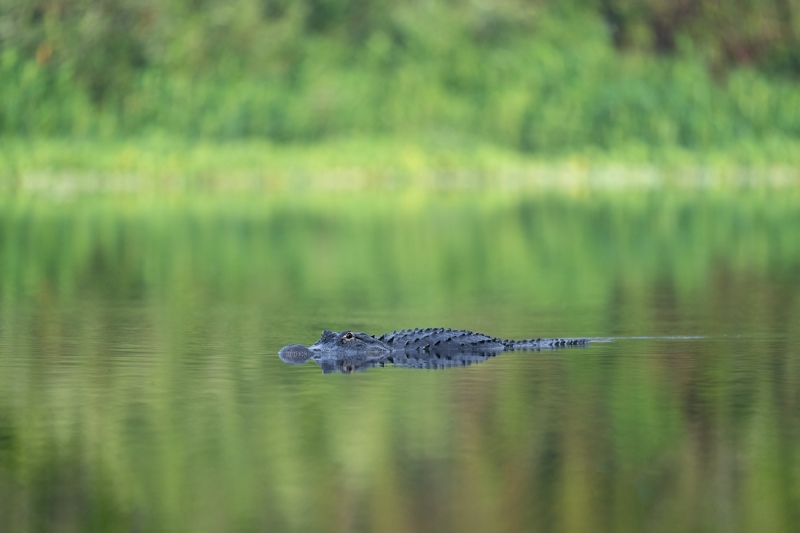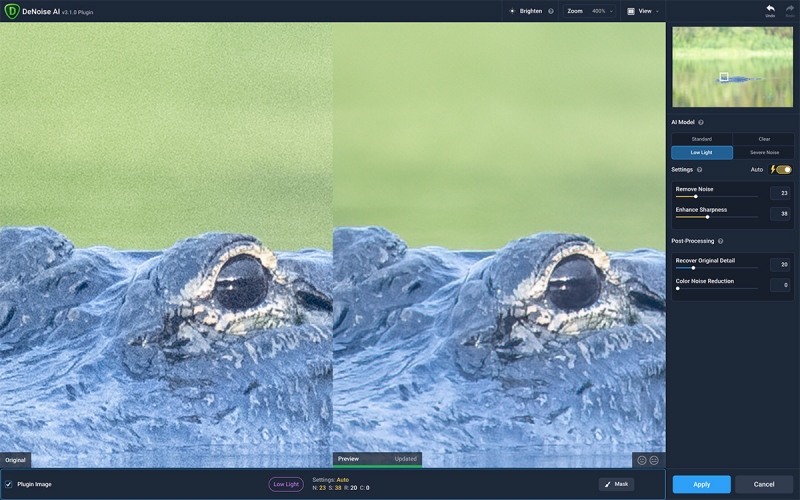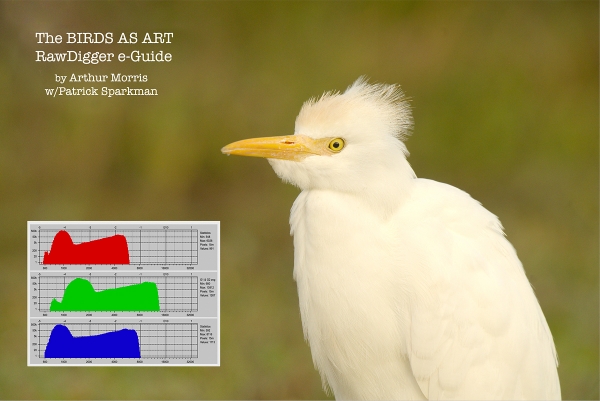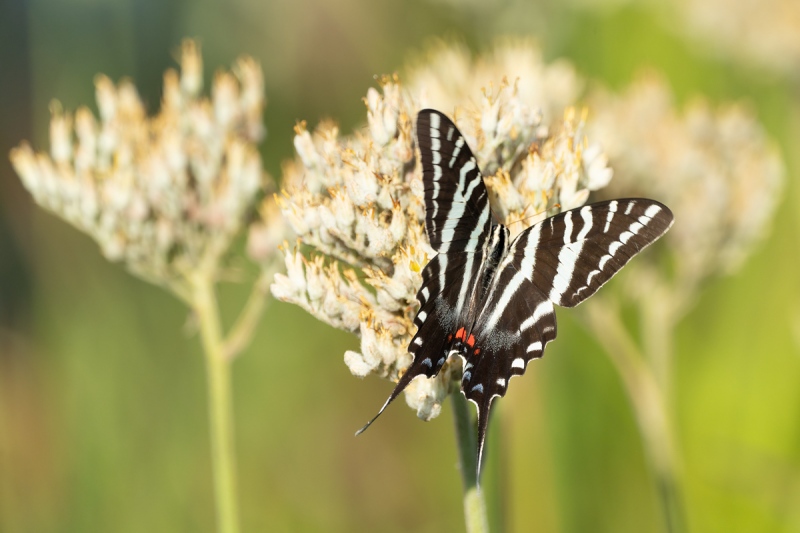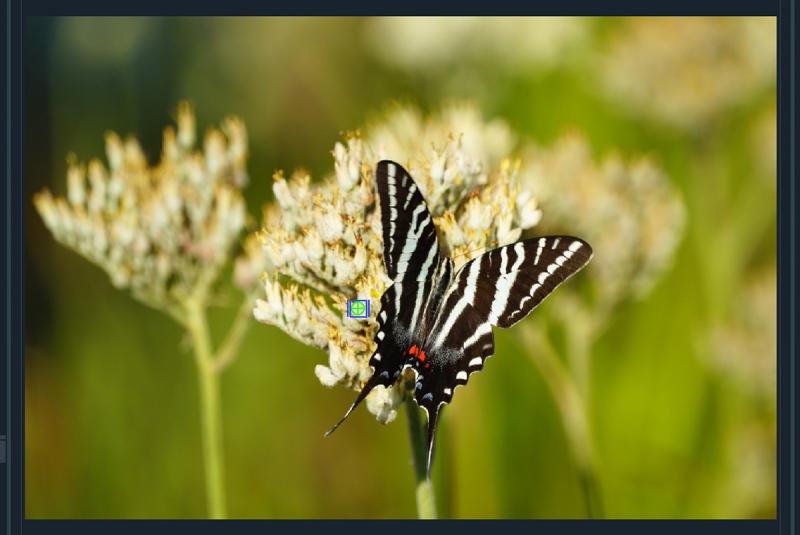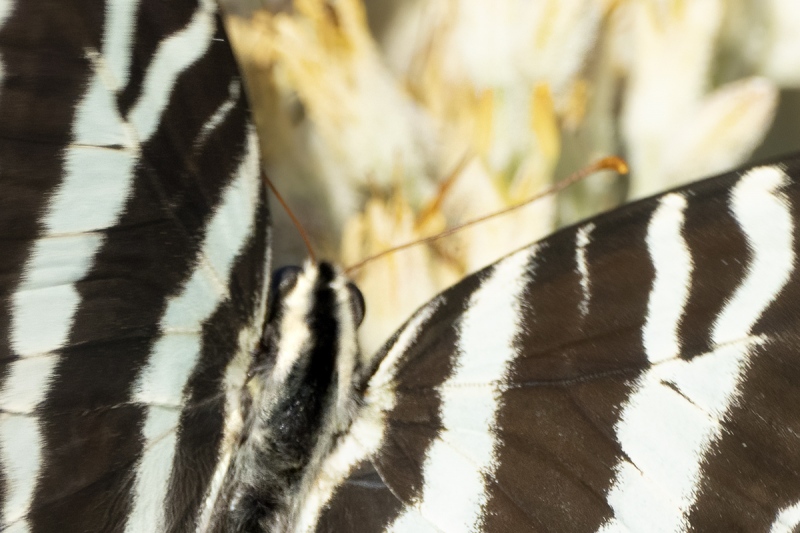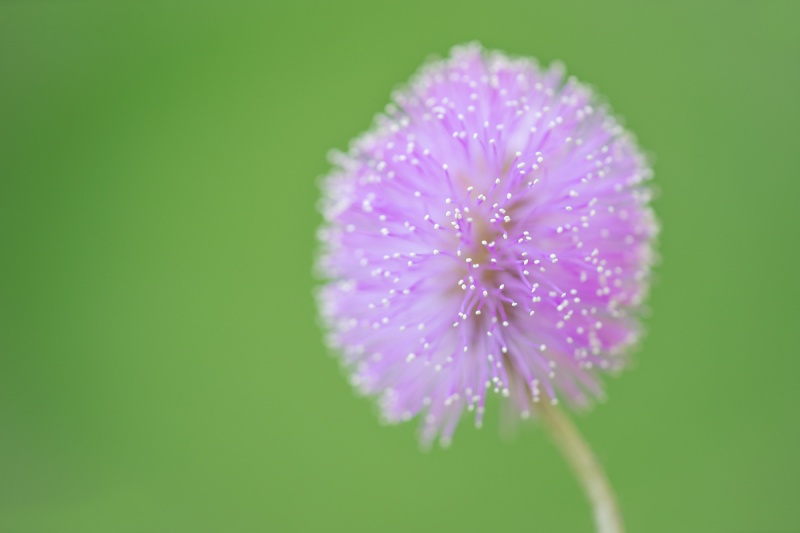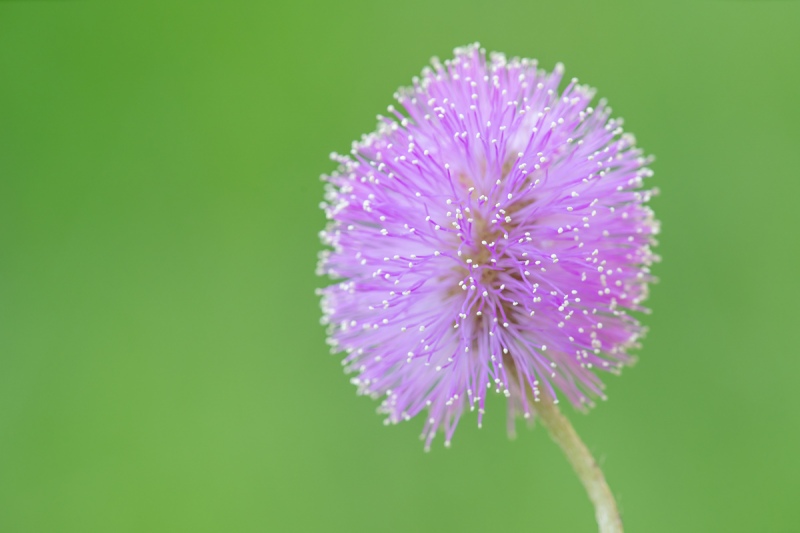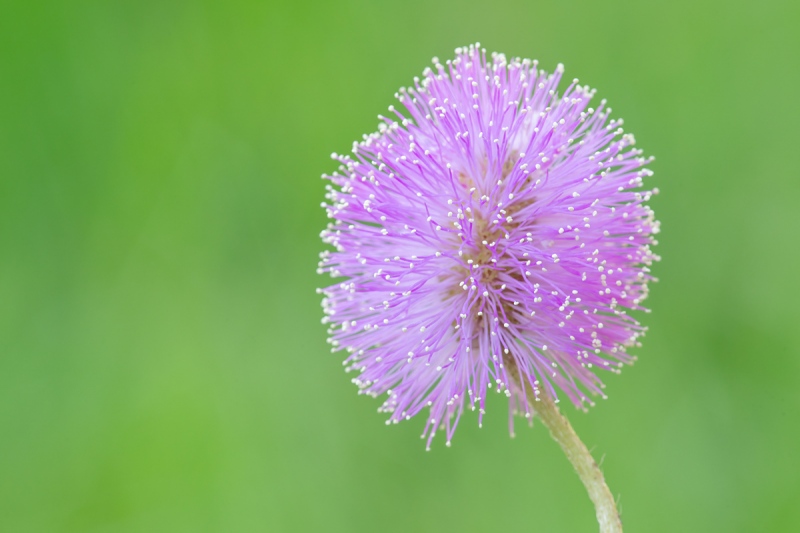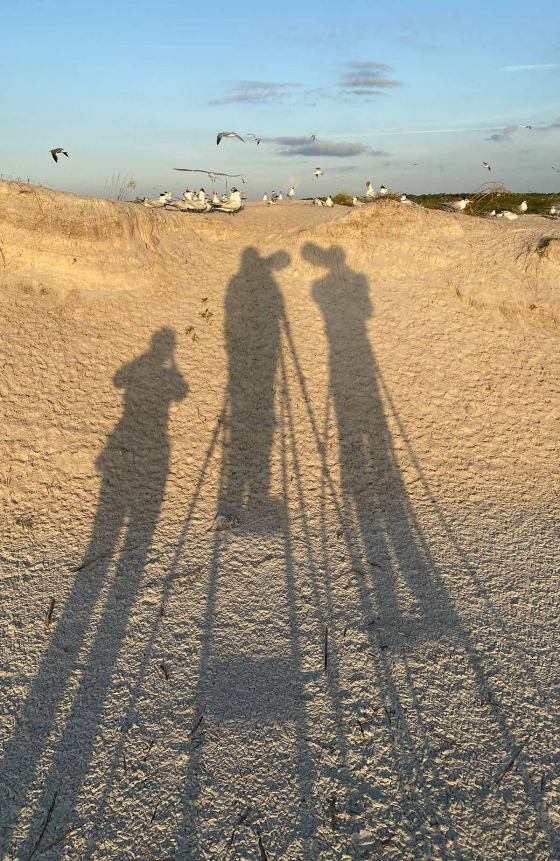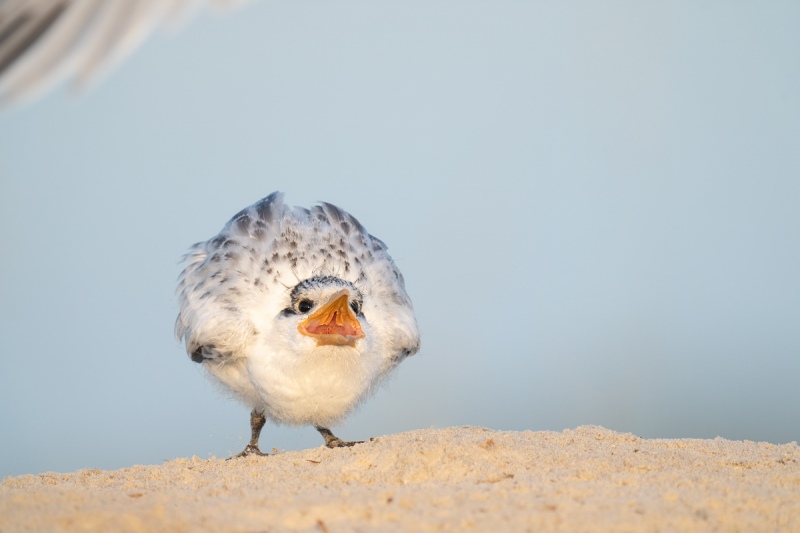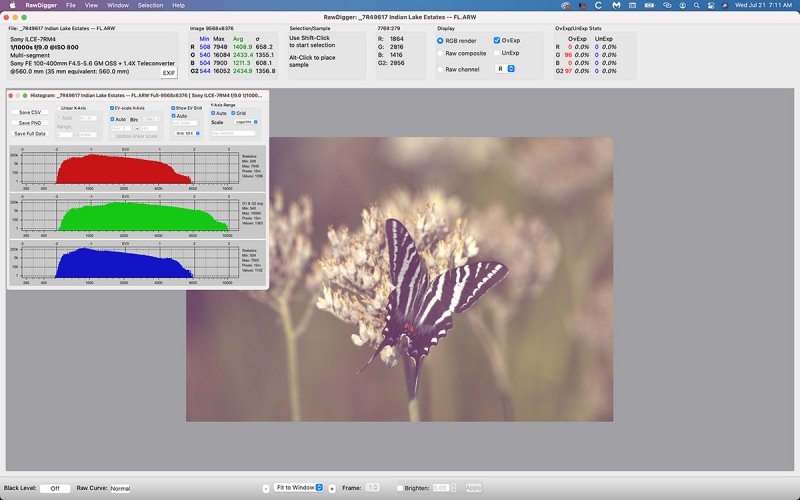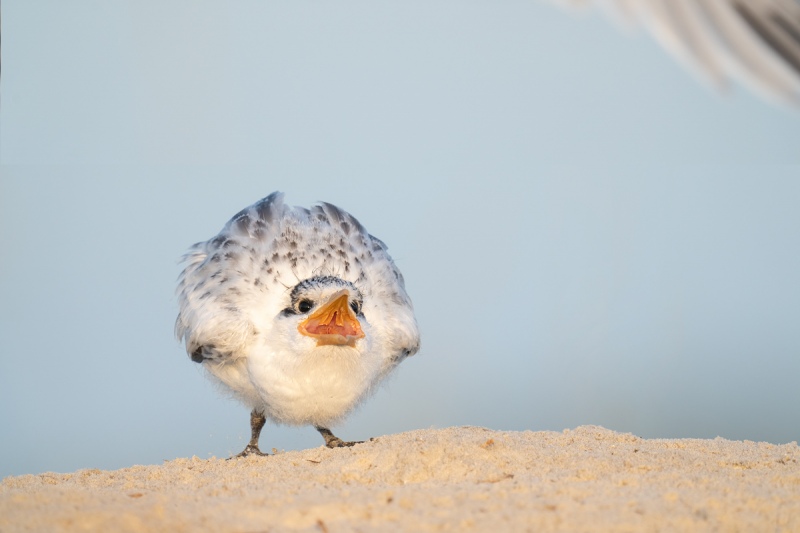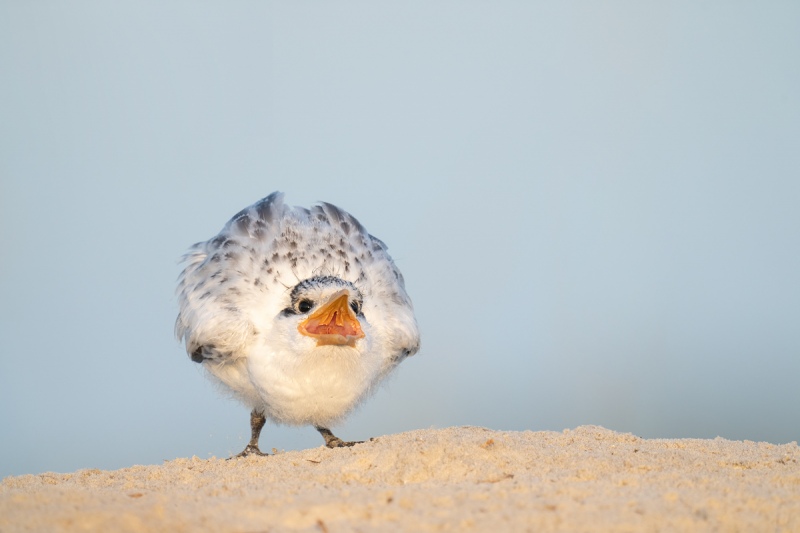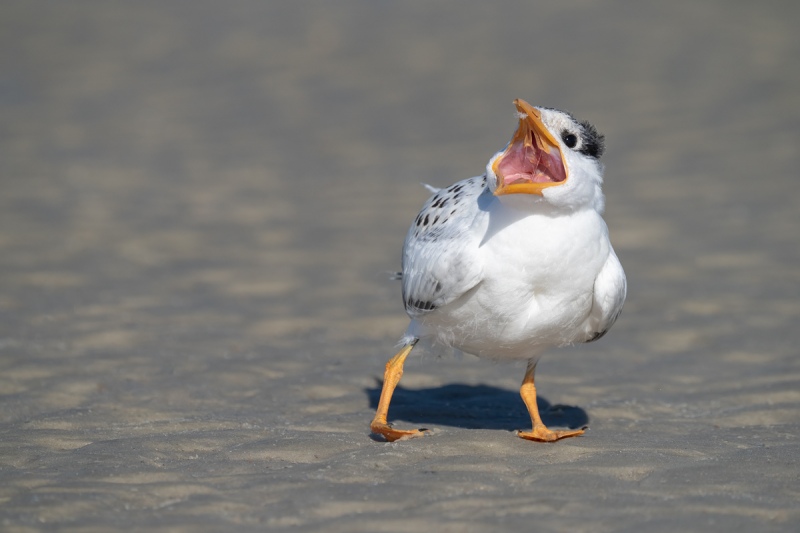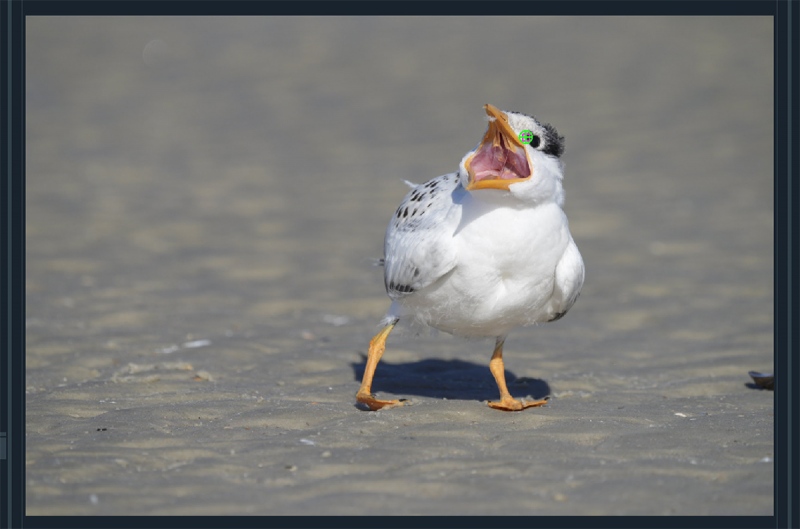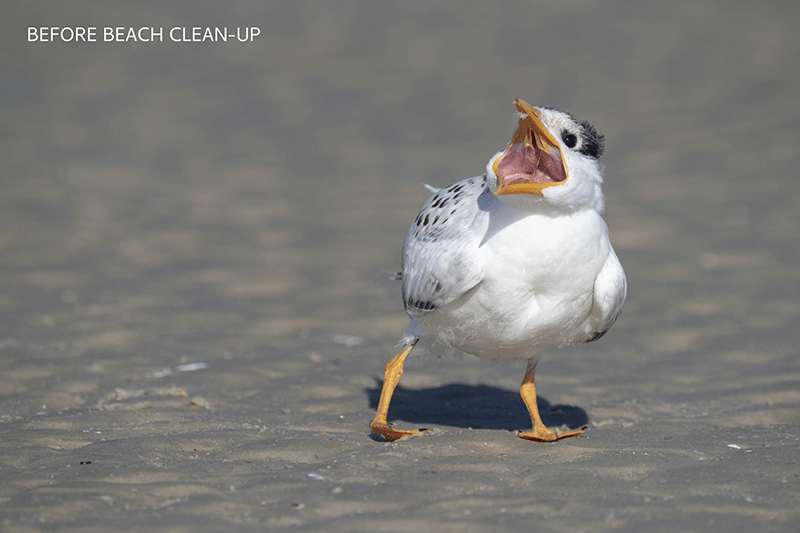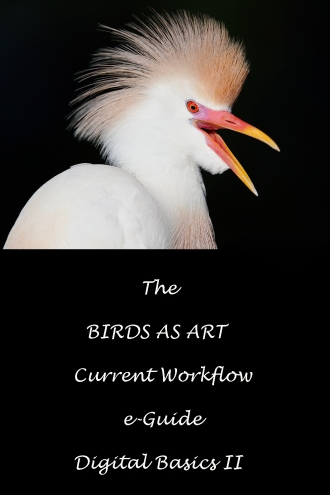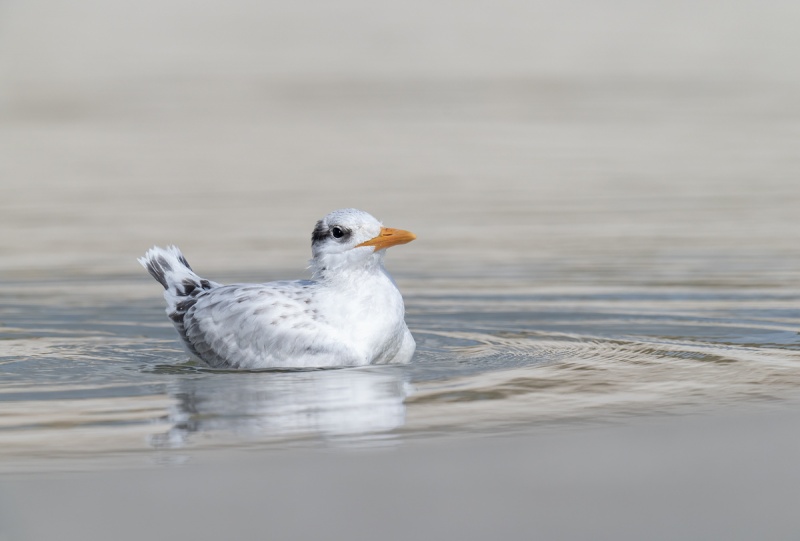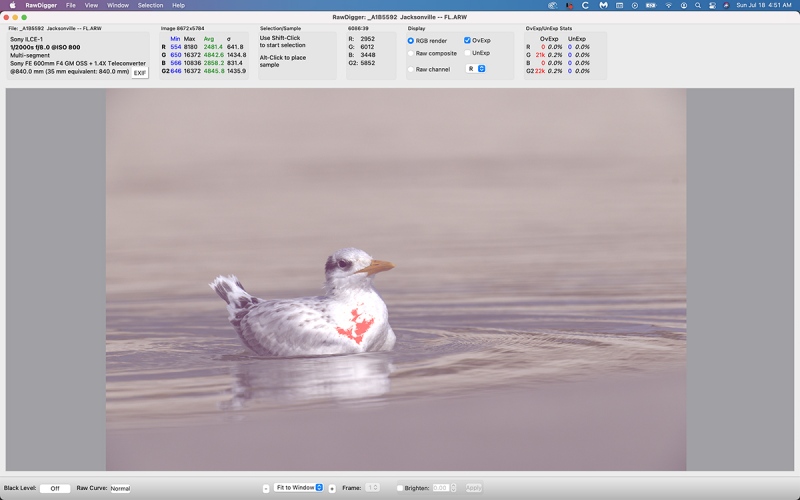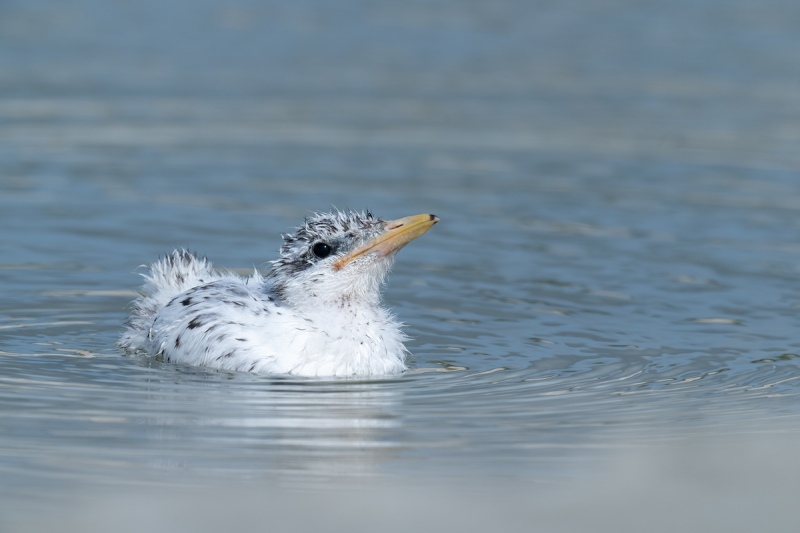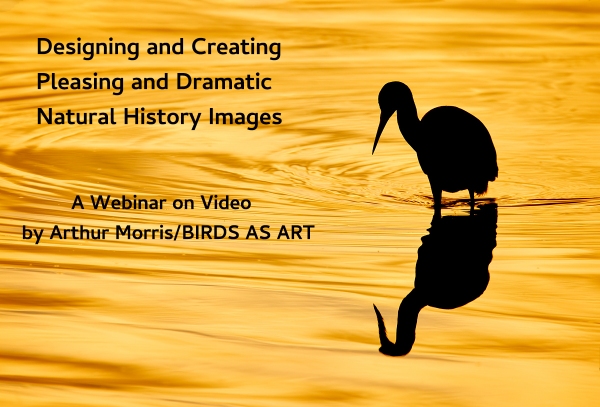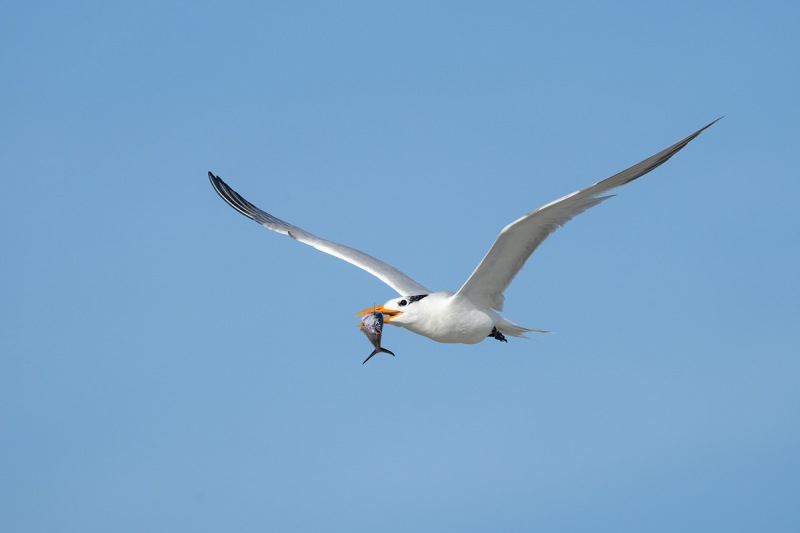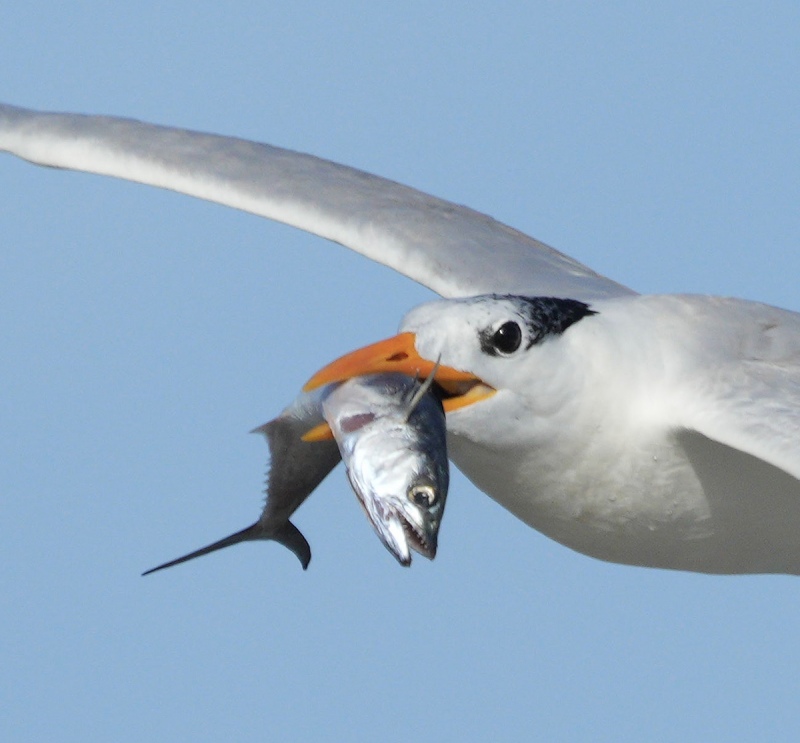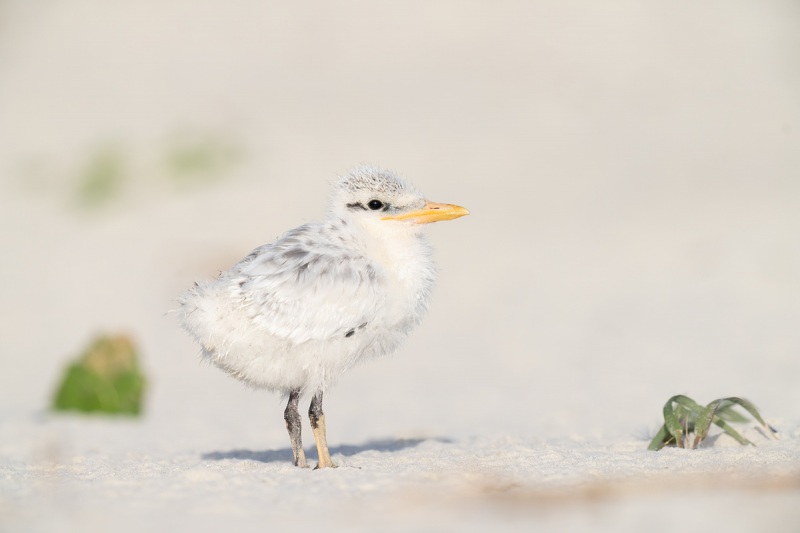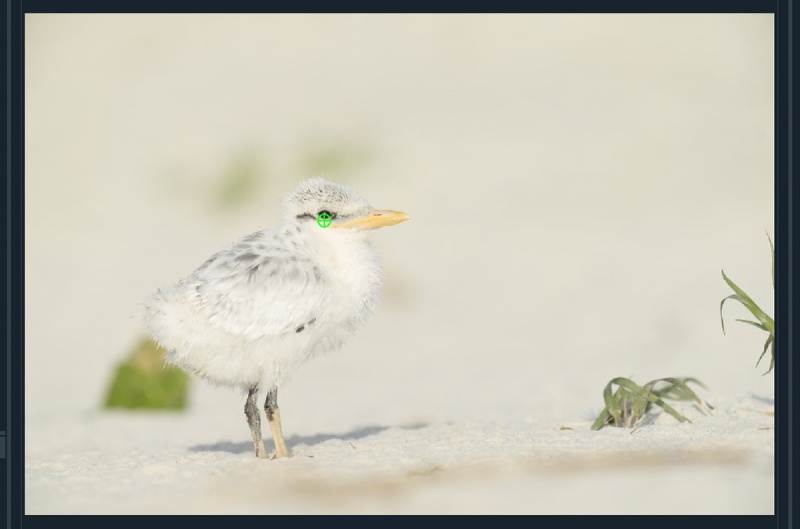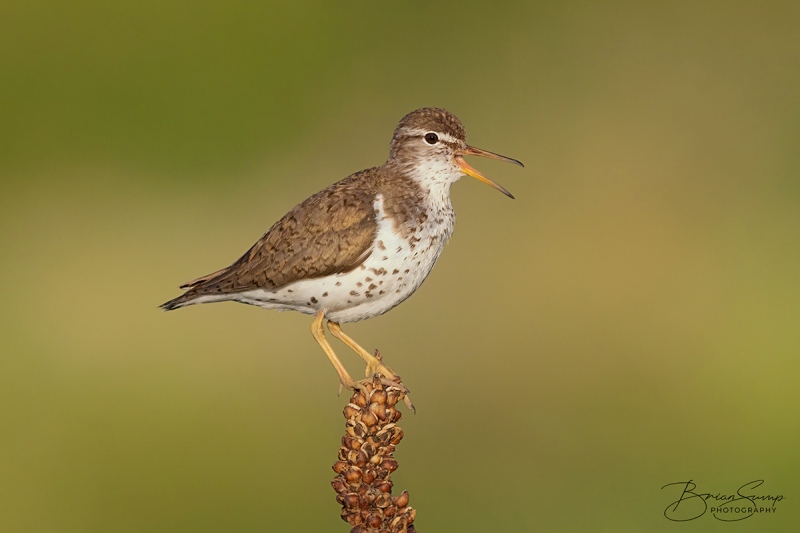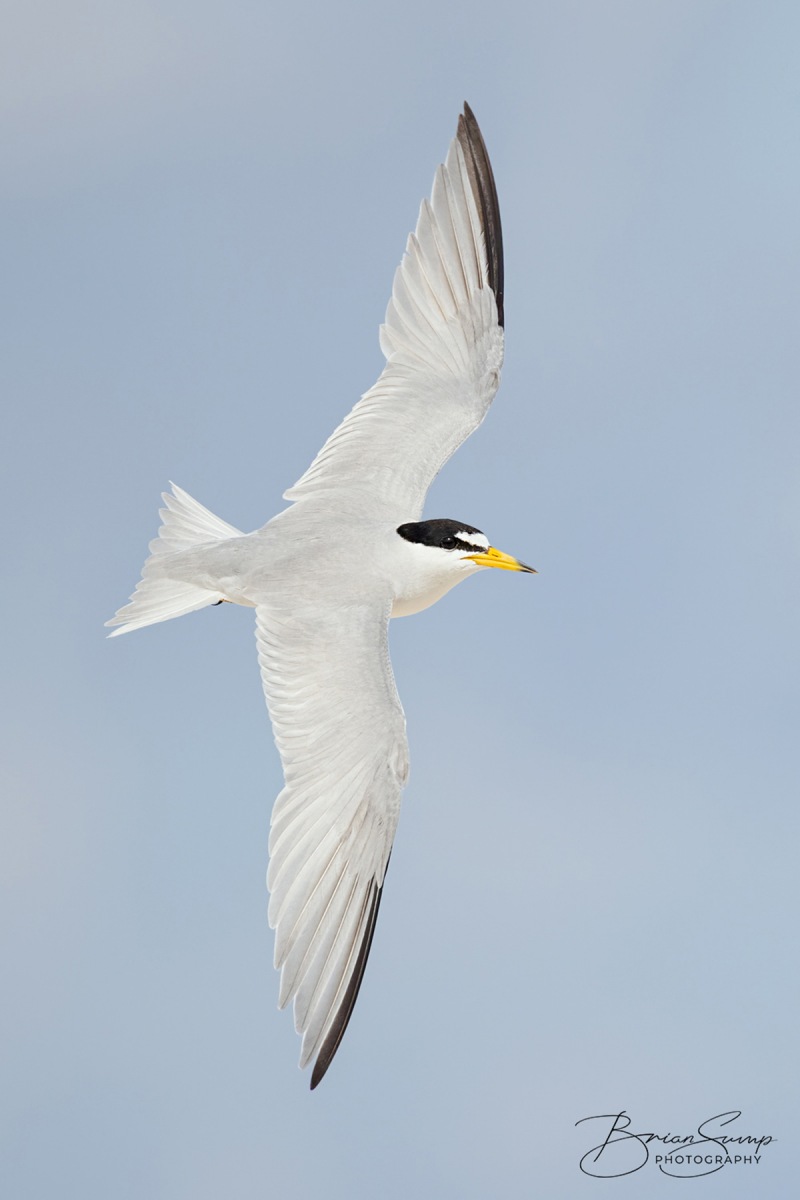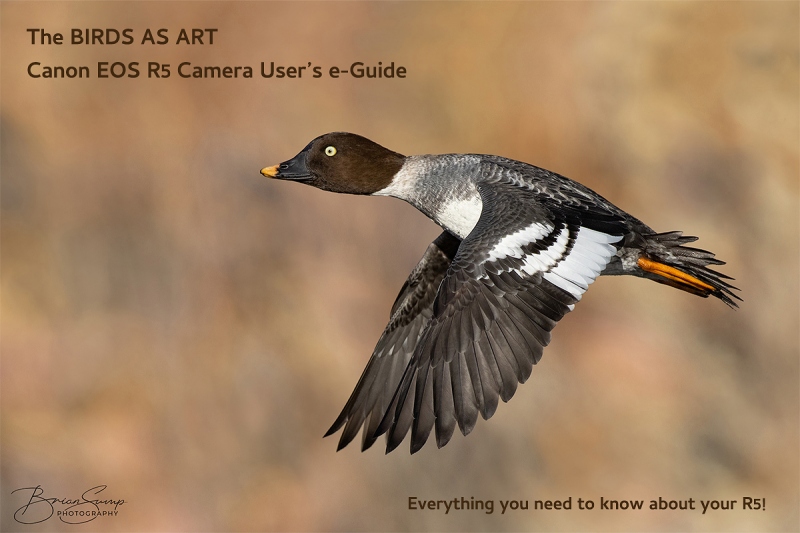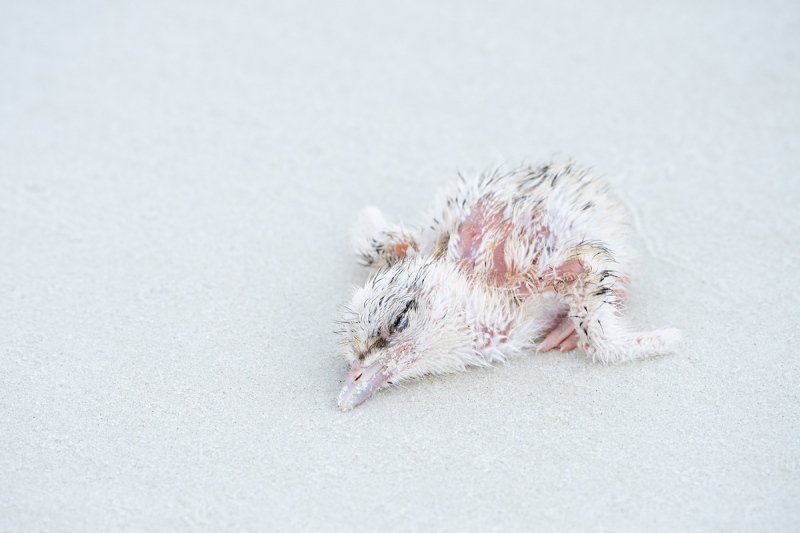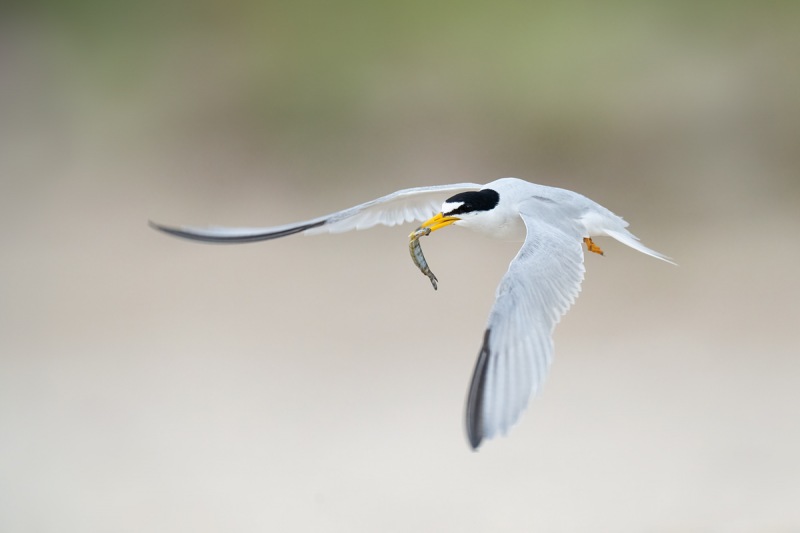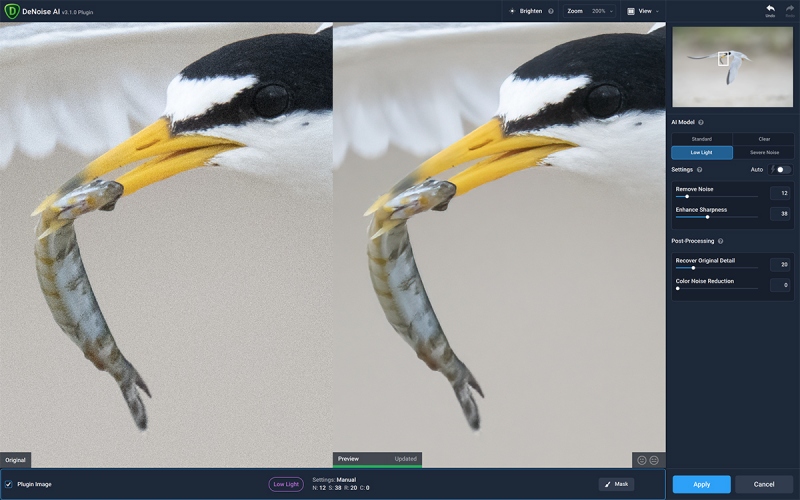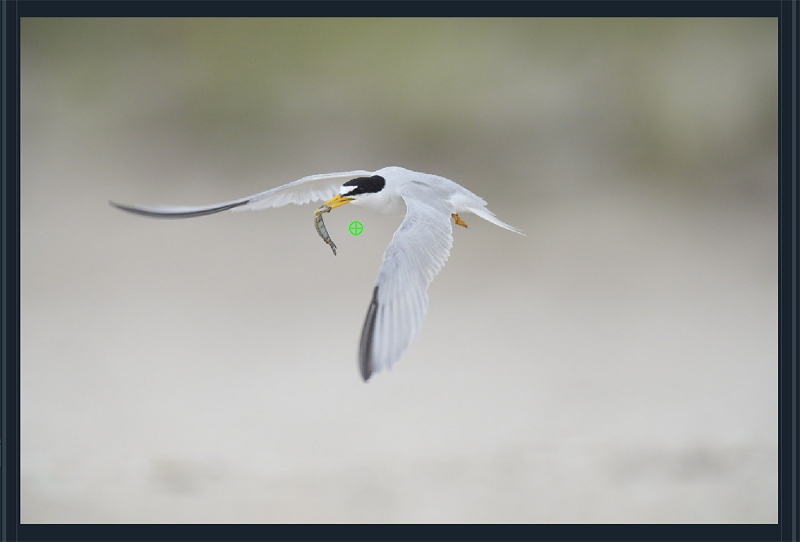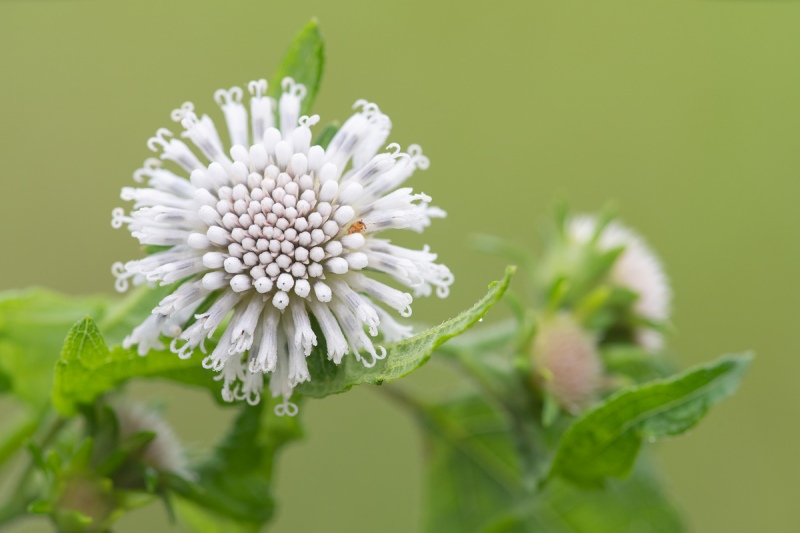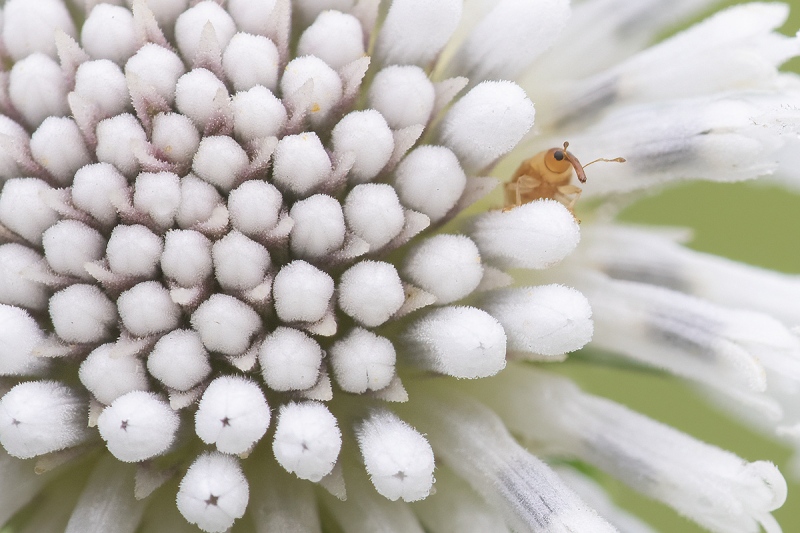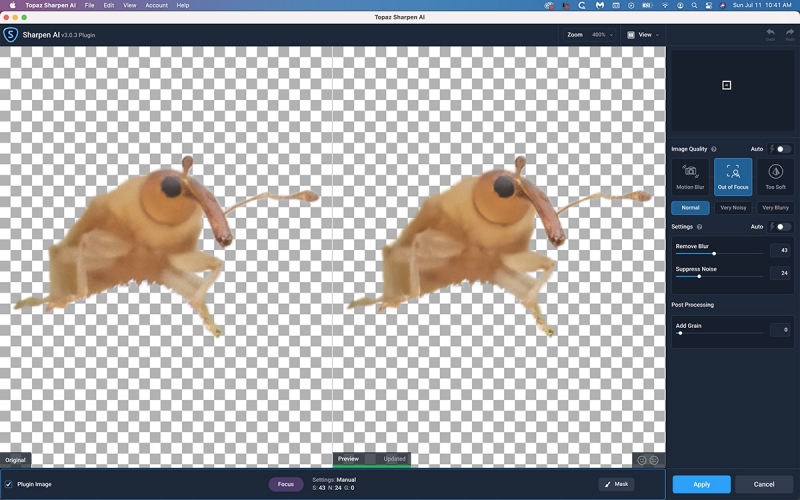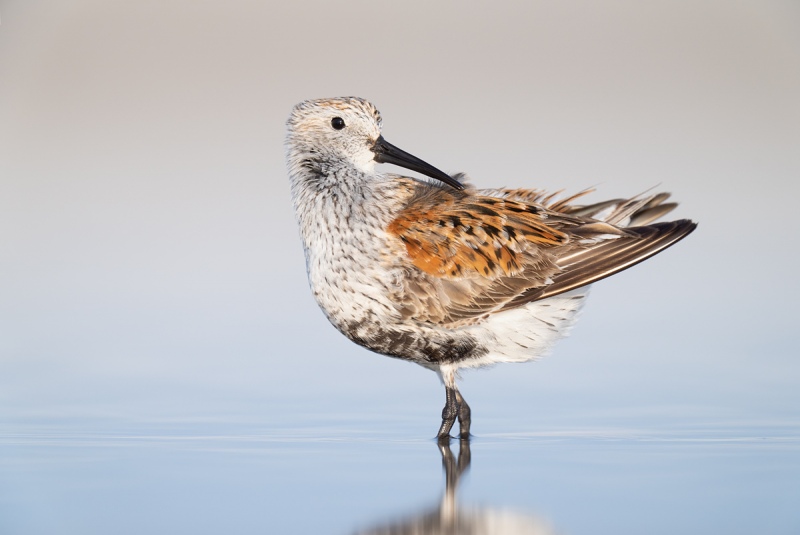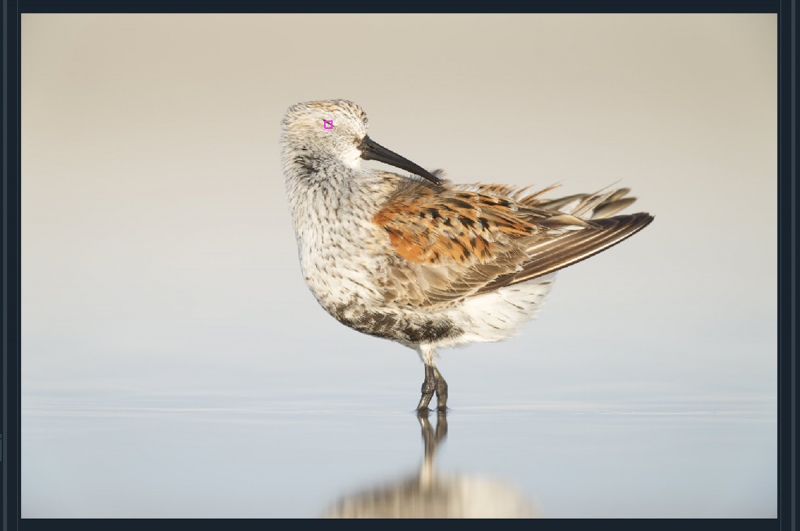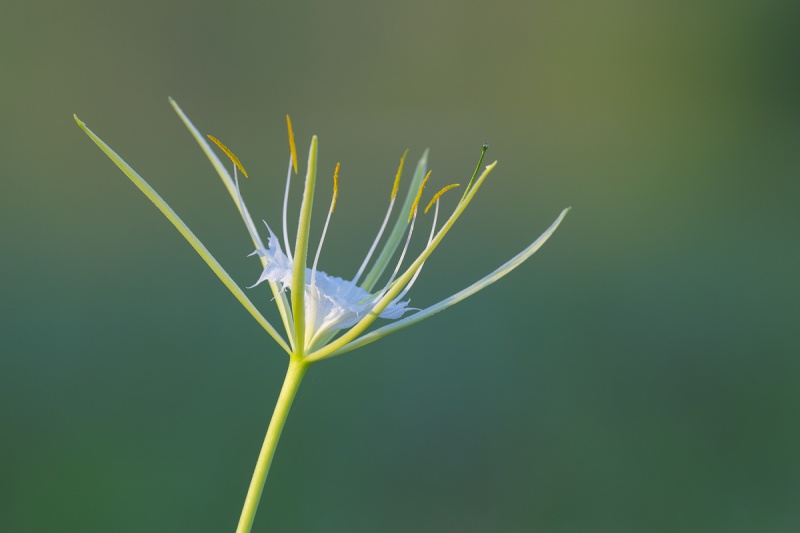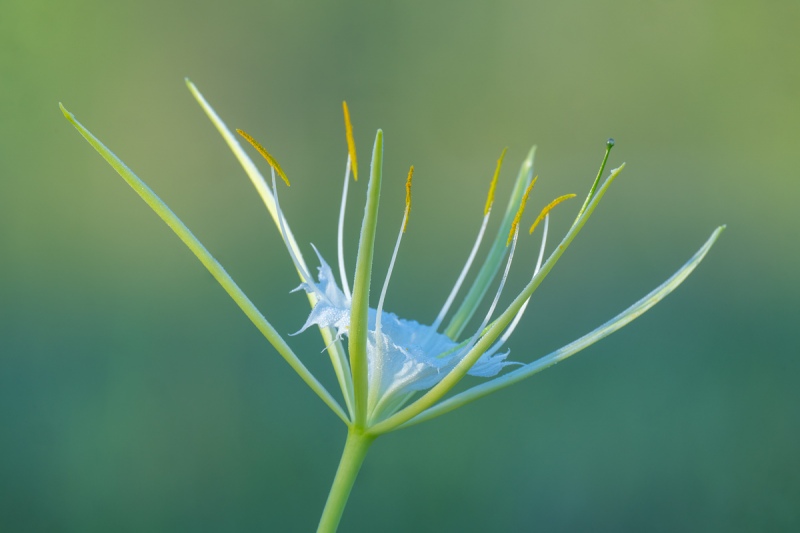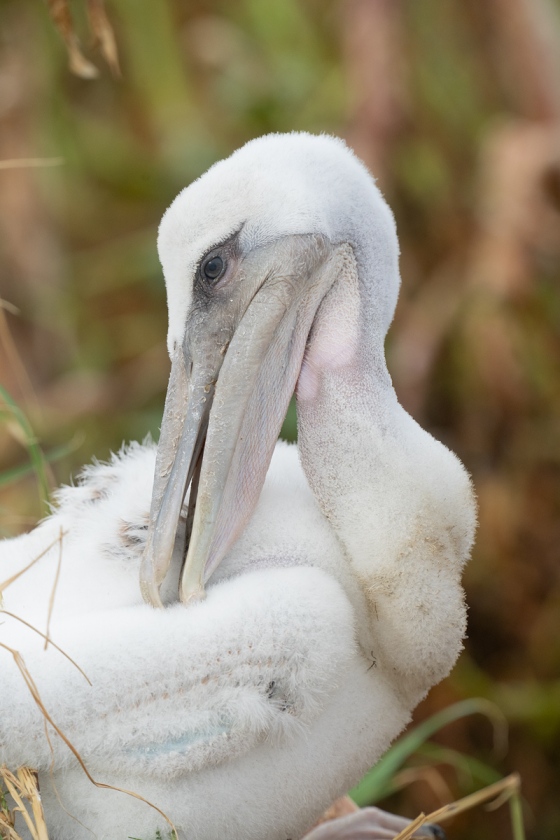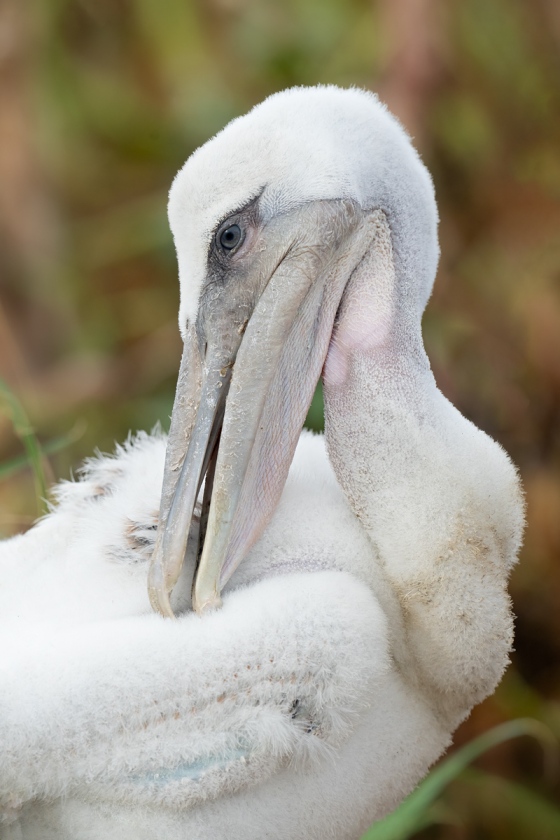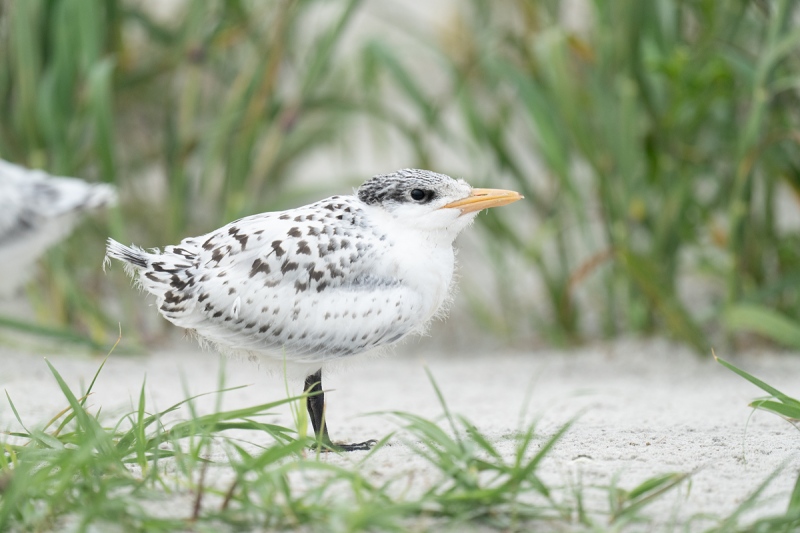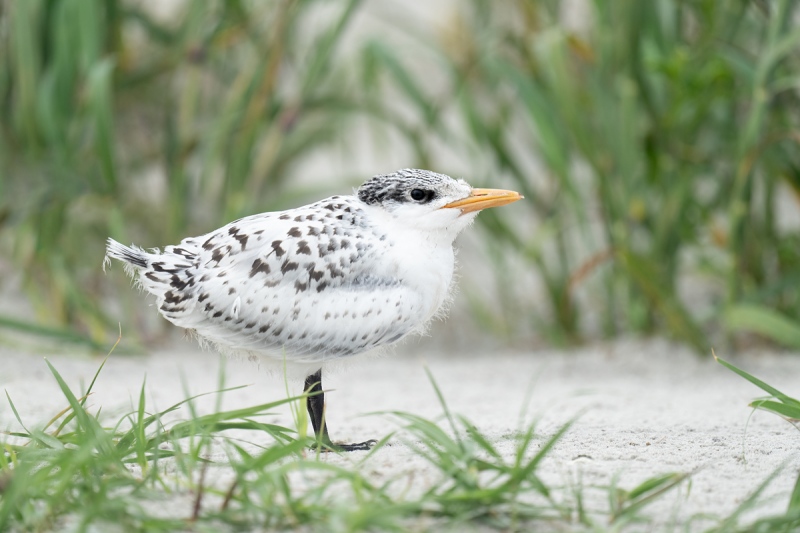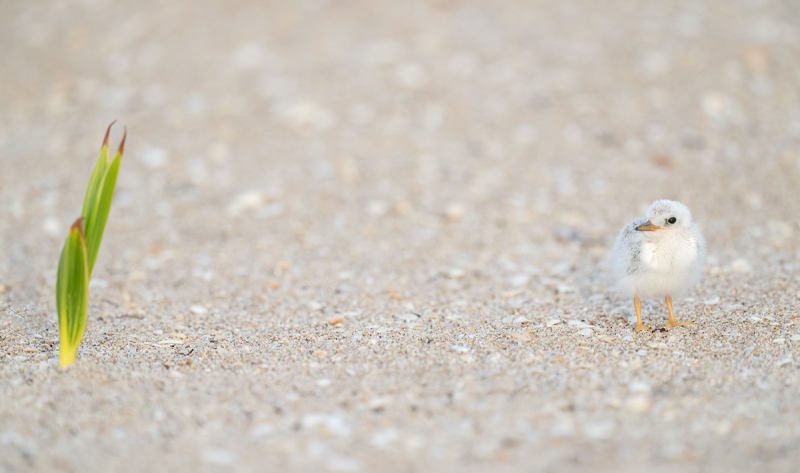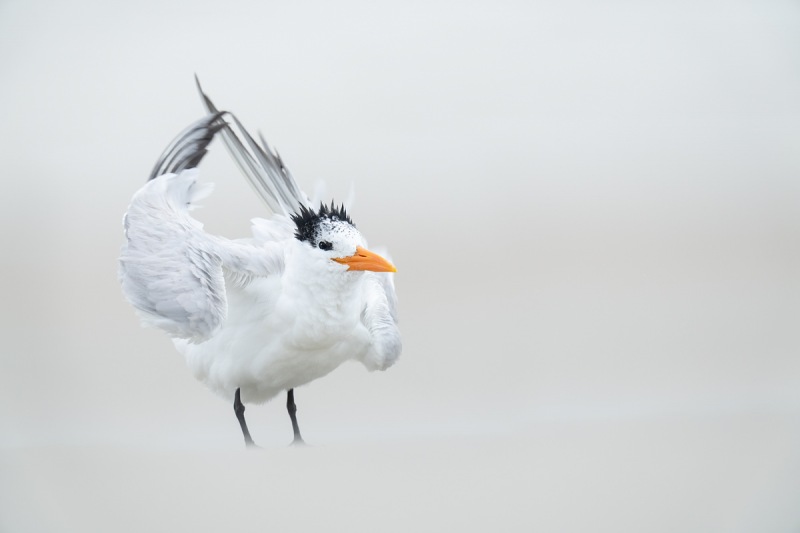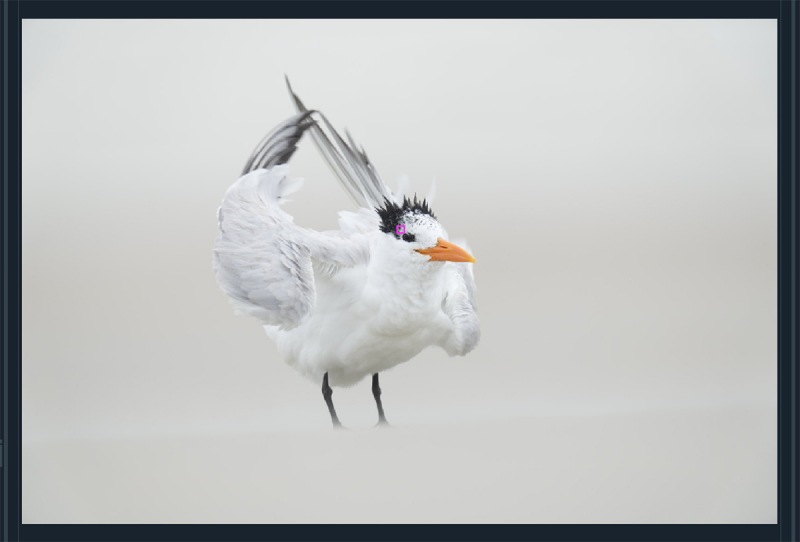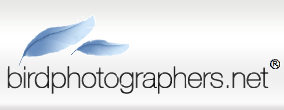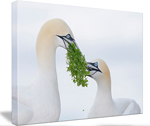July 26th, 2021 The East Pond
Homer Bald Eagles Winter 2021
Yes, this is an expensive (but competitively priced) trip. The price of the boat and the price of the fish have risen astronomically since my last visit in 2020. But the photography is beyond amazing. Flight photography with any lens till you cannot raise your arms, creative set-ups, lots of snow, we hope (earlier in the season is best for that), and lots of opportunities for point-blank head portraits and talon shots. If you are seriously interested in joining me for the world’s best Homer/Katchemak Bay Bald Eagle trip(s) — mid-FEB thru early MARCH 2022, please contact me immediately via e-mail for dates and details.
What’s Up?
One IPT veteran has signed up for Homer and several other folks are interested. Today, Monday 26 July 2021, I will be doing preliminary packing (and laundry) for my trip to Long Island. I will be on the Amtrak Auto Train with my X5 on Wednesday afternoon. I will be spending lots of time at Nickerson Beach and hopefully, if the water levels are low (for the first time in many years), at the East Pond at Jamaica Bay Wildlife Refuge in Queens, NY. The latter is back where my amazing life’s journey began. Wherever you are, and whatever you are doing, we hope that you too have a great day.
Kudos to Great Britain’s Men’s 100M Breaststroker Adam Peaty who won his second straight Olympic Gold medal last night. He is undefeated in this event for eight years and holds the 16 fastest times in history. Talk about total domination!
Remember that you can find some great photo accessories (and necessities!) on Amazon by clicking on the Stuff tab on the orange/yellow menu bar above. On a related note, it would be extremely helpful if blog-folks like me, who spend too much money on Amazon, would get in the habit of clicking on the Amazon logo link on the right side of each blog post. As you might expect, doing so will not cost you a single penny, but would be appreciated tremendously by yours truly. And it works seamlessly with your Amazon Prime account.
This blog post took about 90 minutes to prepare and makes 210 consecutive days with a new one. Please remember that if an item — a Delkin flash card, or a tripod head — for example, that is available from B&H and/or Bedfords, and is also available in the BAA Online Store, it would be great, and greatly appreciated if you would opt to purchase from us. We will match any price. Please remember also to use my B&H affiliate links or to save 3% at Bedfords by using the BIRDSASART discount code at checkout. Doing either often earns you free guides and/or discounts. And doing so always earns my great appreciation.
Selling Your Used Photo Gear Through BIRDS AS ART
Selling your used (or like-new) photo gear through the BAA Blog is a great idea. We charge only a 5% commission. One of the more popular used gear for sale sites charged a minimum of 20%. Plus assorted fees! Yikes. They went out of business. And e-Bay fees are now up to 13%. The minimum item price here is $500 (or less for a $25 fee). If you are interested please scroll down here or shoot us an e-mail with the words Items for Sale Info Request cut and pasted into the Subject line :). Stuff that is priced fairly — I offer pricing advice to those who agree to the terms — usually sells in no time flat. Over the past year, we have sold many dozens of items. Do know that prices on some items like the EOS-1D Mark IV, the old Canon 100-400, the old 500mm, the EOS-7D and 7D Mark II and the original 400mm DO lens have been dropping steadily. Most recently the price of used Canon 600mm f/L IS II lenses have been dropping like a rock with the introduction of the 600 III. You can always see the current listings by clicking here or on the Used Photo Gear tab on the orange-yellow menu bar near the top of each blog post page.
As used gear sales have slowed just a bit in recent months — especially with dSLR bodies, there are lots of great buys right now both below and on the Used Gear Page.
New Listings
Canon EOS-1DX Mark II Professional dSLR
IPT veteran Sheldon Goldstein is offering a Canon EOS-1DX Mark II camera body in like-new condition for $2,199.00. It was recently cleaned and checked by Canon Professional Services. The sale includes one extra battery, the dual battery charger, the front cap, the, DC Coupler, and insured ground shipping via major courier to lower-48 US addresses only. Your item will not ship until your check clears unless other arrangements are made.
Please contact Sheldon via e-mail or by phone at 646-423-0392 (Eastern time zone).
The 1DX Mark II is a rugged, fast Canon professional digital camera body. It features an excellent AF system and high quality image files with great dynamic range. When he used Canon, it was the first choice of Arash Hazeghi, the world’s premier photographer of birds in flight. This body is still in production and currently sells new for $4,499.00. Save a very sweet $2300.00 by grabbing Sheldon’s dSLR body ASAP. artie
Canon EF 100-400m f/4.5-5.6L IS II USM Zoom Lens
IPT veteran Sheldon Goldstein is offering a Canon EF 100-400m f/4.5-5.6L IS II USM zoom lens in excellent condition for $1499.00. The lens was recently cleaned and checked by Canon Professional Services. The sale includes a Wimberley P-20 lens plate (a $52.00 value), the rear lens cap, the front lens cap, the lens case and strap, and insured ground shipping via major courier to lower-48 US addresses only. Your item will not ship until your check clears unless other arrangements are made.
Please contact Sheldon via e-mail or by phone at 646-423-0392 (Eastern time zone).
This incredibly versatile zoom lens — with its amazing .98 meter close focus — was my favorite Canon telephoto zoom lens ever. By far. It is easy to hand hold, great for tight portraits, birds in flight, quasi-macro stuff, and lots more. For flight, it is even better with an R5! The lens sells new for $2399.00 so you can save some hard cash by grabbing Sheldon’s zoom lens now. artie
Please Remember
With income from IPTs now close to zero, please, if you enjoy and learn from the blog, remember to use one of my two affiliate programs when purchasing new gear. Doing so just might make it possible for me to avoid having to try to get a job as a Walmart greeter and will not cost you a single penny more. And if you use Bedfords and remember to enter the BIRDSASART code at checkout, you will save 3% on every order and enjoy free second-day air shipping. In these crazy times — I am out at least forty to sixty thousand dollars so far due to COVID 19 (with lots more to come) — remembering to use my B&H link or to shop at Bedfords will help me out a ton and be greatly appreciated. Overseas folks who cannot order from the US because of import fees, duties, and taxes, are invited to help out by clicking here to leave a blog thank you gift if they see fit.
New and Better Bedfords Discount Policy!
You can now save 3% on all of your Bedfords photo gear purchases by entering the BIRDSASART coupon code at checkout. Your discount will be applied to your pre-tax total. In addition, by using the code you will get 2nd day air shipping via Fed Ex.
Grab a Nikon AF-S Teleconverter TC-14E III and save $14.99. Purchase a Canon EOS R5 and your discount will be $116.97. Purchase a Sony FE 600mm f/4 GM OSS lens and save a remarkable $389.94! Your Bedford’s purchase no longer needs to be greater than $1,000.00 for you to receive a discount. The more you spend, the more you save.
Money Saving Reminder
Many have learned that if you need a hot photo item that is out of stock at B&H and would enjoy free second-day air shipping, your best bet is to click here, place an order with Bedfords, and enter the coupon code BIRDSASART at checkout. If an item is out of stock, contact Steve Elkins via e-mail or on his cell phone at (479) 381-2592 (Central time). Be sure to mention the BIRDSASART coupon code and use it for your online order to save 3% and enjoy free 2nd-day air shipping. Steve has been great at getting folks the hot items that are out of stock at B&H and everywhere else. The wait lists at the big stores can be a year or longer for the hard to get items. Steve will surely get you your gear long before that. For the past year, he has been helping BAA Blog folks get their hands on items like the SONY a9 ii, the SONY 200-600 G OSS lens, the Canon EOS R5, the Canon RF 100-500mm lens, and the Nikon 500mm PF. Steve is personable, helpful, and eager to please.


Gear Questions and Advice
Too many folks attending BAA IPTs (remember those?) and dozens of photographers whom I see in the field and on BPN, are–out of ignorance–using the wrong gear, especially when it comes to tripods and more especially, tripod heads… Please know that I am always glad to answer your gear questions via e-mail.
|
|
|
This image was created on Thursday, 23 July 2021 late while sitting on a deck chair on Clemens Van Der Werf’s flats boat. I used the hand held Sony FE 600mm f/4 GM OSS lens with the Sony FE 1.4x Teleconverter and The One, the Sony Alpha 1 Mirrorless digital camera. ISO 800. Exposure determined via Zebras with ISO on the Thumb Wheel: 1/4000 sec. at f/5.6 (wide open) in Manual mode. AWB at 9:04am on a sunny morning.
Center Zone AF-C with Bird-Eye/Face Detection grabbed the kites near-flank, fortunately, right on the same plane as the bird’s eye.
Swallow-tailed Kite right after taking a sip
|
Will the Real Swallow-tailed Kite Please Swoop Down For a Sip?
I did manage to come away with one decent drinking kite image on Thursday morning …
Mega-challenging Bird Photography …
Why so difficult? With the birds at a distance, you needed to be at 840 or 1200mm. Using a tripod while standing in a floating boat trying to photograph rapidly moving subjects is totally out of the question. That means that you need to hand hold a 600mm f/4 lens with a teleconverter. Why not the SONY 200-600? While this versatile, easily hand holdable lens does well with the 1.4X TC with slow-moving and static subjects at close range, it would struggle greatly with fast birds flying erratically.
When the kites are swooping down for a drink, they present mostly as a dark birds. When they are flying against a background of dark trees and semi-tropical vegetation, it is difficult to even see them. My SONY rig did well when I could keep the subject relatively centered in the frame. But hand holding at 840mm is not my forté. If I found the subject in the frame and kept the bird centered, the AF system tracked beautifully. But, as I state here often, that is very difficult for me to do. I just opened an e-mail from Clemens with 17 very fine JPEGs. Ten of the images were of drinking Swallow-tailed Kites.
The Realities of Hand Holding Super-telephotos Lenses …
As I write often when critiquing Arash Hazeghi’s amazing flight shots — many made hand held at 1200mm — in the Avian Gallery on BPN, Stronger (sometimes younger) folks who have fast reflexes, stamina, superb fine motor skills and hand-eye coordination, are in the best position to take advantage of the amazing AF systems in today’s best mirrorless camera bodies.
Clemens was using the Canon R5 with the 1.4X III TC and the EF 600mm f/4L IS III lens. I have no doubt that a1 AF system is more consistently accurate than the R5 AF system with any gear, and I am pretty sure that Clemens agrees. So why did he get so many more satisfactory drinking kite images? Because he is younger, stronger, has faster reflexes, more stamina, and far better fine motor skills and hand-eye coordination than me. In short, he is far better able to keep the birds in the middle of the frame when hand holding at 840mm than I am.
Typos
With all blog posts, feel free to e-mail or to leave a comment regarding any typos or errors.
July 25th, 2021 A Focus Stacking Question …
As far as I know, none of the SONY bodies feature auto focus-stacking. If I focus bracket manually — Focus Peaking would make that relatively easy, is there a program that will auto-assemble the focus-bracketed series? If yes, which one is easiest to use?
Homer Bald Eagles Winter 2021
This is an expensive trip. The price of the boat and the price of the fish have risen astronomically since my last visit in 2020. But the photography is beyond amazing. Flight photography with any lens till you cannot raise your arms, creative set-ups, lots of snow, we hope (earlier in the season is best for that), and lots of opportunities for point-blank head portraits and talon shots. If you are seriously interested in joining me for the world’s best Homer/Katchemak Bay Bald Eagle trip(s) — mid-FEB thru early MARCH 2022, please contact me immediately via e-mail for dates and details.
What’s Up?
As noted yesterday, we did not do too well with the Swallow-tailed Kites on Friday morning. Saturday was worse. Lots worse … It dawned totally foggy with a northwest wind. The sun broke through at about 8:30am and the wind dropped a bit. But with wind against sun conditions, every kite was flying away from us and from the light. The few birds that came down for a drink were flying directly away from us. So you would figure, not so bad, enjoying a peaceful morning in a beautiful canal lined with tropical vegetation and tall trees, many of which are topped by 20-50 roosting Swallow-tailed Kites. If but that had been true. As it was a weekend and there were about eight photo boats. The problem was that on the boats that were closest to us, there were several folks who would not shut up, jabbering away as loud as possible, mostly preaching ridiculous photography tenets. I did some cell phone videos of the kites circling upwards but good photo chances were close to zero … We did learn that Thursday had been the best day for photography in twenty years. 🙂 N.A.T.U.R.E photography: Not Always The Ultimate Recreational Experience …
Congrats to American Olympic swimmers Chase Kalisz (Gold) and Jay Litherland (Silver) for sweeping the Men’s 400 Meter Individual Medley in Tokyo last night (with GOAT Michael Phelps in the booth).
Today is Sunday 25 July 2021. I took my walk early to beat the heat and the afternoon thunderstorms. Wherever you are, and whatever you are doing, we hope that you too have a great day.
Remember that you can find some great photo accessories (and necessities!) on Amazon by clicking on the Stuff tab on the orange/yellow menu bar above. On a related note, it would be extremely helpful if blog-folks like me, who spend too much money on Amazon, would get in the habit of clicking on the Amazon logo link on the right side of each blog post. As you might expect, doing so will not cost you a single penny, but would be appreciated tremendously by yours truly. And it works seamlessly with your Amazon Prime account.
This blog post took about two hours to prepare and makes 209 consecutive days with a new one. Please remember that if an item — a Delkin flash card, or a tripod head — for example, that is available from B&H and/or Bedfords, and is also available in the BAA Online Store, it would be great, and greatly appreciated if you would opt to purchase from us. We will match any price. Please remember also to use my B&H affiliate links or to save 3% at Bedfords by using the BIRDSASART discount code at checkout. Doing either often earns you free guides and/or discounts. And doing so always earns my great appreciation.
Please Remember
With income from IPTs now close to zero, please, if you enjoy and learn from the blog, remember to use one of my two affiliate programs when purchasing new gear. Doing so just might make it possible for me to avoid having to try to get a job as a Walmart greeter and will not cost you a single penny more. And if you use Bedfords and remember to enter the BIRDSASART code at checkout, you will save 3% on every order and enjoy free second-day air shipping. In these crazy times — I am out at least forty to sixty thousand dollars so far due to COVID 19 (with lots more to come) — remembering to use my B&H link or to shop at Bedfords will help me out a ton and be greatly appreciated. Overseas folks who cannot order from the US because of import fees, duties, and taxes, are invited to help out by clicking here to leave a blog thank you gift if they see fit.
New and Better Bedfords Discount Policy!
You can now save 3% on all of your Bedfords photo gear purchases by entering the BIRDSASART coupon code at checkout. Your discount will be applied to your pre-tax total. In addition, by using the code you will get 2nd day air shipping via Fed Ex.
Grab a Nikon AF-S Teleconverter TC-14E III and save $14.99. Purchase a Canon EOS R5 and your discount will be $116.97. Purchase a Sony FE 600mm f/4 GM OSS lens and save a remarkable $389.94! Your Bedford’s purchase no longer needs to be greater than $1,000.00 for you to receive a discount. The more you spend, the more you save.
Money Saving Reminder
Many have learned that if you need a hot photo item that is out of stock at B&H and would enjoy free second-day air shipping, your best bet is to click here, place an order with Bedfords, and enter the coupon code BIRDSASART at checkout. If an item is out of stock, contact Steve Elkins via e-mail or on his cell phone at (479) 381-2592 (Central time). Be sure to mention the BIRDSASART coupon code and use it for your online order to save 3% and enjoy free 2nd-day air shipping. Steve has been great at getting folks the hot items that are out of stock at B&H and everywhere else. The wait lists at the big stores can be a year or longer for the hard to get items. Steve will surely get you your gear long before that. For the past year, he has been helping BAA Blog folks get their hands on items like the SONY a9 ii, the SONY 200-600 G OSS lens, the Canon EOS R5, the Canon RF 100-500mm lens, and the Nikon 500mm PF. Steve is personable, helpful, and eager to please.


Gear Questions and Advice
Too many folks attending BAA IPTs (remember those?) and dozens of photographers whom I see in the field and on BPN, are–out of ignorance–using the wrong gear, especially when it comes to tripods and more especially, tripod heads… Please know that I am always glad to answer your gear questions via e-mail
|
|
|
This image was created on 23 July 2021 aboard Clemens Van der Werf’s flats boat on Lake Woodruff in Deland, FL. While seated on a deck chair, I used the hand held Sony FE 600mm f/4 GM OSS lens and The One, the Sony Alpha 1 Mirrorless digital camera. ISO 2000. Exposure determined (poorly) via Zebras with ISO on the rear dial: 1/1000 sec. at f/4 (wide open). AWB at 7:40am on a still, then cloudy morning.
Tracking: Flexible Spot AF-C performed perfectly by nailing the gator’s eye.
Image #1: American Alligator floating on calm morning
|
The Swallow-tailed Kite Photo Story
From what I understand — and saw for two mornings, hundreds of Swallow-tailed Kites roost in the tall trees lining one very popular canal adjoining Lake Woodruff. At about 8 or 8:30am, they take flight in number. Many circle overhead on thermals as things warm up. A few swoop down to the water to drink. A wind from the southeast would be perfect. Despite a southwest wind on Friday morning, we had a very few chances to photograph the drinking kites. With early fog and a northwest wind, we had zero chances on Saturday morning.
In any case, today’s featured image was my favorite from our two morning adventure.
|
|
|
This image was created on 23 July 2021 aboard Clemens Van der Werf’s flats boat on Lake Woodruff in Deland, FL. I used the hand held Sony FE 600mm f/4 GM OSS lens and The One, the Sony Alpha 1 Mirrorless digital camera. ISO 2000. Exposure determined (poorly) via Zebras with ISO on the rear dial: 1/1000 sec. at f/4 (wide open). AWB at 7:40am on a still, then cloudy morning.
Tracking: Flexible Spot AF-C performed perfectly by nailing the gator’s eye.
Image #1A: Topaz DeNoise on the American Alligator floating on calm morning image
|
Under-Exposures Yield More Noise
Click on the image to enlarge it and see the unusually high levels of noise for an ISO 2000 a1 original. RawDigger showed that in the very low light levels, the raw file was almost one stop too dark. Now note the after image on our right and see how beautifully Topaz DeNoise Low Light on Auto cleaned up the noise without any destructive posterization and without effecting the edges while actually improving the sharpness.
Topaz DeNoise
Be sure to click on the screen capture to see the complete elimination of noise in the after image on our right. And note that if anything, the fine details are sharper than in the original.
As regular readers know, I run DeNoise on virtually every image that I process immediately after executing the crop with the Delete Cropped Pixels box checked. For images made in sunny conditions, I used Standard. For images made in low light, I use Low Light. You can check all four methods by using the Comparison View but I rarely do that any more as I am confident as noted above.
Great Topaz News!
Folks who use the BAA Topaz link to purchase Sharpen AI, DeNoise AI, or the Utility Bundle (or any other Topaz plug-ins), will receive a 15% discount by entering the ARTHUR15 code at checkout. If the stuff is on sale (as it usually is), you save 15% off of the sale price! To get the discount you must use my link and you must enter the discount code. Be sure to start with this link.
Those who purchase Sharpen AI, DeNoise AI, or any other Topaz plug-ins using my link and then entering the ARTHUR15 code at checkout can e-mail to request a short Getting Started with Topaz e-Guide. Please include a copy of your Topaz receipt that shows the discount. Aside from the basics, the guide explains how to install the plug-ins so that they appear in the Photoshop Filter Menu.
RawDigger e-Mail Conversation with Saul Furstein
am: Hi Saul,
Re:
SF: I have read your The RawDigger E-Guide and have watched the two accompanying videos. I understand the value of getting the correct exposure in camera.
am: Or not 🙂
SF: I am confused. There was no mention of adjusting exposure in post-proocessing using software. Is there a reason that adjusting exposure with software is to be avoided?
am: Not at all. Exposing properly to the right gives you files with minimal noise and the most information. Doing so also yields cleaner, more natural color. I am pretty sure that it mentions that your raw files will often and usually should look washed out. So yes, we adjust the tonality of the image during post processing. Setting the Black (and white) points brings the images to life. And the Highlight Slider can be used to restore detail in the whites and highlights in properly exposed images.
Please LMK if you have any more questions.
Thanks with love, artie
RawDigger — not for the faint of heart …
Nothing has ever helped me learn to create perfect exposures to the degree that RawDigger has. I think that many folks are reluctant to learn that most of their images are underexposed by one or more full stops and that highlight warnings in Photoshop, Lightroom, Capture One, and your in-camera histogram are completely bogus as they are based on the embedded JPEGs. Only your raw files tell the truth all the time. Heck, I resisted RawDigger for several years … Once you get over that feeling, RawDigger can become your very best exposure friend no matter what system you are using. On the recent IPTs and In-the-Field sessions, we have demonstrated that fact. Convincingly.
The RawDigger (pink) Adapted Histogram
In the RawDigger e-Guide, you will learn exactly how to set up the Adapted “pink” RawDigger Histogram and how to use it to quickly and easily evaluate the exposure or raw file brightness of images from all digital cameras currently in use. RawDigger was especially helpful to me when I struggled with R5 exposures and when learned my new camera body, the Sony Alpha a1.
|
|
RawDigger e-Guide with Two Videos
|
The RawDigger e-Guide with Two Videos
by Arthur Morris with Patrick Sparkman
The RawDigger e-Guide was created only for serious photographers who wish to get the absolute most out of their raw files.
Patrick and I began work on the guide in July 2020. At first we struggled. We asked questions. We learned about Max-G values. We could not figure out why the Max G values varied by camera system. IPT veteran Bart Deamer asked lots of questions that we could not answer. We got help from RawDigger creator Iliah Borg. We learned. In December, Patrick came up with an Adapted Histogram that allows us to evaluate the exposures and raw file brightness for all images created with all digital camera bodies from the last two decades. What we learned each time prompted three complete beginning to end re-writes.
The point of the guide is to teach you to truly expose to the mega-Expose-to-the-Right so that you will minimize noise, maximize image quality, best utilize your camera’s dynamic range, and attain the highest possible level of shadow detail in your RAW files in every situation. In addition, your properly exposed RAW files will contain more tonal information and feature the smoothest possible transitions between tones. And your optimized images will feature rich, accurate color.
We teach you why the GREEN channel is almost always the first to over-expose. We save you money by advising you which version of RawDigger you need. We teach you how to interpret the Max G values for your Canon, Nikon, and SONY camera bodies. It is very likely that the Shock-your-World section will shock you. And lastly — thanks to the technical and practical brilliance of Patrick Sparkman — we teach you a simple way to quickly and easily evaluate your exposures and raw file brightness using an Adapted RawDigger histogram.
The flower video takes you through a session where artie edits a folder of images in Capture One while checking the exposures and Max-G values in RawDigger. The Adapted Histogram video examines a series of recent images with the pink histograms and covers lots of fine points including and especially how to deal with specular highlights. The directions for setting up the Adapted Histogram are in the text.
If we priced this guide based on how much effort we put into it, it would sell it for $999.00. But as this guide will be purchased only by a limited number of serious photographers, we have priced it at $51.00. You can order yours here in the BAA Online Store.
Typos
With all blog posts, feel free to e-mail or to leave a comment regarding any typos or errors.
July 24th, 2021 What’s Up?
Several folks commented or e-mailed on the difficulty of photographing the Swallow-tailed Kites near Deland. They were 100% correct. It was my first time ever at this location. We have one more morning on Lake woodruff and I will use what I learned to do much better today than I did on Friday morning.
I forgot to mention yesterday that on Thursday evening I climbed into bed at 6:30pm anticipating a great night’s sleep and waking at 4:00am for the trip up to Deland. I have never ever have a problem falling asleep. I play one game of chess against a BOT on my i-phone, read for a bit, and then I am gone. Anyhoo, on Thursday night I simply could not fall asleep. Wide awake, I read for six hours before finally falling asleep at 12:30am. And I have no clue as to why …
If you are seriously interested in joining me for the world’s best Homer/Katchemak Bay Bald Eagle trip(s) in FEB/early MARCH 2022, please contact me immediately via e-mail for dates and details.
Today is Saturday 24 July 2021. The weather for Deland is looking less than ideal … Partly cloudy with a gentle northwest breeze. Clemens and I will be heading south after our morning session. Wherever you are, and whatever you are doing, we hope that you too have a great day.
Remember that you can find some great photo accessories (and necessities!) on Amazon by clicking on the Stuff tab on the orange/yellow menu bar above. On a related note, it would be extremely helpful if blog-folks like me, who spend too much money on Amazon, would get in the habit of clicking on the Amazon logo link on the right side of each blog post. As you might expect, doing so will not cost you a single penny, but would be appreciated tremendously by yours truly. And it works seamlessly with your Amazon Prime account.
This blog post took about two hours to prepare and makes 209 consecutive days with a new one. Please remember that if an item — a Delkin flash card, or a tripod head — for example, that is available from B&H and/or Bedfords, and is also available in the BAA Online Store, it would be great, and greatly appreciated if you would opt to purchase from us. We will match any price. Please remember also to use my B&H affiliate links or to save 3% at Bedfords by using the BIRDSASART discount code at checkout. Doing either often earns you free guides and/or discounts. And doing so always earns my great appreciation.
Please Remember
With income from IPTs now close to zero, please, if you enjoy and learn from the blog, remember to use one of my two affiliate programs when purchasing new gear. Doing so just might make it possible for me to avoid having to try to get a job as a Walmart greeter and will not cost you a single penny more. And if you use Bedfords and remember to enter the BIRDSASART code at checkout, you will save 3% on every order and enjoy free second-day air shipping. In these crazy times — I am out at least forty to sixty thousand dollars so far due to COVID 19 (with lots more to come) — remembering to use my B&H link or to shop at Bedfords will help me out a ton and be greatly appreciated. Overseas folks who cannot order from the US because of import fees, duties, and taxes, are invited to help out by clicking here to leave a blog thank you gift if they see fit.
New and Better Bedfords Discount Policy!
You can now save 3% on all of your Bedfords photo gear purchases by entering the BIRDSASART coupon code at checkout. Your discount will be applied to your pre-tax total. In addition, by using the code you will get 2nd day air shipping via Fed Ex.
Grab a Nikon AF-S Teleconverter TC-14E III and save $14.99. Purchase a Canon EOS R5 and your discount will be $116.97. Purchase a Sony FE 600mm f/4 GM OSS lens and save a remarkable $389.94! Your Bedford’s purchase no longer needs to be greater than $1,000.00 for you to receive a discount. The more you spend, the more you save.
Money Saving Reminder
Many have learned that if you need a hot photo item that is out of stock at B&H and would enjoy free second-day air shipping, your best bet is to click here, place an order with Bedfords, and enter the coupon code BIRDSASART at checkout. If an item is out of stock, contact Steve Elkins via e-mail or on his cell phone at (479) 381-2592 (Central time). Be sure to mention the BIRDSASART coupon code and use it for your online order to save 3% and enjoy free 2nd-day air shipping. Steve has been great at getting folks the hot items that are out of stock at B&H and everywhere else. The wait lists at the big stores can be a year or longer for the hard to get items. Steve will surely get you your gear long before that. For the past year, he has been helping BAA Blog folks get their hands on items like the SONY a9 ii, the SONY 200-600 G OSS lens, the Canon EOS R5, the Canon RF 100-500mm lens, and the Nikon 500mm PF. Steve is personable, helpful, and eager to please.


Gear Questions and Advice
Too many folks attending BAA IPTs (remember those?) and dozens of photographers whom I see in the field and on BPN, are–out of ignorance–using the wrong gear, especially when it comes to tripods and more especially, tripod heads… Please know that I am always glad to answer your gear questions via e-mail
|
|
|
This image was created on 15 July 2020 a few blocks from my home at ILE. I used the hand held Sony FE 100-400mm f/4.5-5.6 GM OSS lens with the Sony FE 1.4x Teleconverter (at 560mm) and the 61-MP Sony Alpha a7R IV Mirrorless Digital Camera Body. ISO 800. The exposure was determined by Zebras with ISO on the rear wheel: 1/1000 sec. at f/9 (wide open) in Manual mode. RawDigger showed this exposure to be dead-solid perfect (as seen in the screen capture below). AWB at 8:44am on a clear, sunny morning.
I screwed up the focus (by choosing the wrong AF Method) … Click on the image to view a larger version.
Image #1: Zebra Swallowtail on Carolina Red Root blossom
|
Accurate and Honest Comments
Of the 39,479 approved comments on the blog, those left at the A Zebra at ILE ??? Your Thoughts? Be Honest. Be Brutal blog post here, were among the most insightful ever. The boys and girls did some fine work. So fine, that I am posting my replies here rather than on that post so that lots of folks can learn.
|
|
Image #1A: AF point screen capture for the Zebra Swallowtail on Carolina Red Root blossom image
|
Byron Prinzmetal
July 21, 2021 at 7:42 pm
·
My guess is the af mode was not a spot mode but some wide Sony af mode that got the wing tips as they were the closest points. Hard to have everything right all the time especially when you might have also anticipated getting the butterfly in flight and then had the af mode set for capturing a wider af area for a moving object????? But fantastic image anyway you cut it … BP
Thanks, Byron. I wish that I liked it as much as you. I believe that I was using one of the tracking spot AF methods but they are not nearly as good on the 7r iv as they are on the a1. Even though I started on the butterfly’s head, the AF system drifted off the butterfly and grabbed a spot on the flower just to the left of the butterfly’s left hind wing — the bottom wing on our right. So the head and the antennae were well past the plane of focus … In a perfect world, however, I could have gotten the shot by going to a single point moved to the right center of the frame and placed on the butterfly’s head or at least on its thorax.
James Saxon
July 21, 2021 at 5:32 pm
Nice image. I want to comment on what you titled Raw Digger is not for the faint of heart. I have owned Raw Digger for a couple of months and still trying to wrap my arms around all the information in the guide. It takes looking at your histogram and exposure in a totally new light. I still don’t understand everything but the guide is a huge help when using the software. I am still learning to view my exposures in a different context. When I get it right it takes a lot less processing. I recommend the software but not without purchasing the guide to reduce the learning curve.
Hi Jim, It was great meeting you at Anahuac. And yes, exposing to the right does make post-processing a lot easier. You may be making things a bit too complicated. Once you have the Adapted (Pink) histogram set up, the only thing that matters is the G channel. In a perfect world, that will run right up to the 16000 line. If it makes its was up to the 2/3 mark between the 8000 line and the 16000 line, you have an excellent exposure. Oft times, we wind up only one third of the way from the 8000 line to the 16000 line. That is still a very good and very workable exposure. Many folks are making their lives difficult by not even reaching the 8000 line; their images are under-exposed by a stop or more, often by two stops. artie
Chris Davidson
July 21, 2021 at 2:17 pm
A nice Zebra Swallowtail image, Art! Looks to me like your focus point was around the middle of it’s right wing.
Catching this butterfly with it’s wings fully opened would most likely have given you the details you were looking for … That can be hard at times with some species, they seem to constantly flap their wings. Firing off a burst of images will often times give at least one frame with fully open wings. The out of focus plants in the background also detract a bit, a cleaner background would improve this as well. Of course it’s all easier said than done!!
Thanks, Chris. The AF point was actually on the flower to our left of the butterfly’s left hind wing. But you were at the right latitude. And yes, had the butterfly fully spread it wings and posed flat, the image would have been much sharper and much more striking. I don’t particularly mind the flower background but there are lots of nicer flowers. And yes, the difficultly here was that this delicate creature would land only for a brief moment … artie
Larry Master
July 21, 2021 at 2:10 pm
I like the image. It appears that your AF setting caused the camera to grab what it thought was an “eye” (the red spot). It would have been nice if the wings were more open and/or you had more depth of field with a lower f-stop and higher ISO. I had some success with a similar setup (A1 w/ 200-600 and 1.4) a week ago while leading a butterfly walk (here).
Thanks, Larry. I like it but do not love it; it is not critically sharp where it needs to be. I never set up Eye AF with the a7r iv. I am pretty sure that if I began AF with tracking: Flexible Spot with the a1 it would have locked on the insect’s head … artie
Mike Cristina
July 21, 2021 at 10:49 am
It’s a great shot. I wish the stem on the left wasn’t there but it was, so you had to keep it. The focus appears to be on the red spot and up the center of the right wing. Had he moved his left wing away from you, AND exposed his left antennae into view it might have been a better photo. But, alas, he didn’t know you were there.
Thanks, Mike. I am afraid that it does not work for me even though the butterfly is gorgeous and was a perfect specimen. See above for the actual location of the AF point … Good eye noticing that one antenna was partially hidden 🙁 artie
Adam
July 21, 2021 at 9:54 am
There are several things I like about the image including the composition with the butterfly canted to the right and the slight bend of the flowers to the left. As you observed, it’s an interesting specimen and one we don’t see around here. Obviously, you have little control over the background and flower so I won’t venture to comment on these issues. What would I have preferred to have seen? Both wings (L>R) are a bit oof (DOF v. motion?) and the head position is not optimal. Only one antenna is visible and the head is ever slightly shrouded by the wing. Also, the focus appears to be on the spots on the lower part of the wings so the head is not the focal point. The right tail flare (?) is lost in the shadow of the stem on the plant (from the butterfly?) Perhaps had you moved to the right a bit, all of these issues would have been obviated though with butterflies, they rarely pause but for a brief second.
Thanks for your insightful comment, Adam. Your analysis is spot on. Yes, I was pretty much dead on sun angle so that it the shadow of the butterfly on the stem. The image is badly front focused and the head is irrecoverably soft. I believe that you were referring to the tail when you mentioned the flare. I appreciate everyone’s honest and accurate comments. I thought that this image might make for some excellent educational fodder and it did.
|
|
Image #1B: A tight crop of the head of the Zebra Swallowtail on Carolina Red Root blossom image
|
Simply Not Sharp
Click on the image to enlarge it and you can easily see that the butterfly’s head is nowhere near sharp. It is well beyond the plane of sharp focus and in addition, only one of the antennae are visible. Paraphrasing the late Harry Chapin from Mr. Tanner:
The butterfly was beautiful, but unfortunately the presentation was not up to contemporary professional standards; full-time consideration of another endeavor might be in order.
If you are not familiar with the story songs of the late, great Harry Chapin, you might want to invest five minutes listening to this wonderful song here. The complete (and very touching) lyrics are available at the link.
Typos
With all blog posts, feel free to e-mail or to leave a comment regarding any typos or errors.
July 23rd, 2021 Your Call
After clicking on each image to enlarge it, please leave a comment and let us know which one you like the best and why you made your choice. Image #1 was made at the wide open aperture, Image #2 was made at f/8, and Image #3 was created at f/16.
What’s Up?
It is 5:35am and Clemens and I are headed up to Lake Woodruff in Volusia County in search of large numbers of Swallow-tailed Kites gathering before they head to South America for the winter. Wish us luck. For the most part it will be a big challenge for me as I will be hand holding the SONY 600mm f/4 GM with the 1.4X TC and the a1 body.
Today is Friday 23 July 2021. The weather for Deland is looking less than ideal … Wherever you are, and whatever you are doing, I hope that you too have a great day.
Thanks for all the comments on yesterday’s images. I will be sharing my thoughts on those with you here soon.
Remember that you can find some great photo accessories (and necessities!) on Amazon by clicking on the Stuff tab on the orange/yellow menu bar above. On a related note, it would be extremely helpful if blog-folks like me, who spend too much money on Amazon, would get in the habit of clicking on the Amazon logo link on the right side of each blog post. As you might expect, doing so will not cost you a single penny, but would be appreciated tremendously by yours truly. And it works seamlessly with your Amazon Prime account.
This blog post took well more than two hours to prepare and makes 208 consecutive days with a new one. Please remember that if an item — a Delkin flash card, or a tripod head — for example, that is available from B&H and/or Bedfords, and is also available in the BAA Online Store, it would be great, and greatly appreciated if you would opt to purchase from us. We will match any price. Please remember also to use my B&H affiliate links or to save 3% at Bedfords by using the BIRDSASART discount code at checkout. Doing either often earns you free guides and/or discounts. And doing so always earns my great appreciation.
Please Remember
With income from IPTs now close to zero, please, if you enjoy and learn from the blog, remember to use one of my two affiliate programs when purchasing new gear. Doing so just might make it possible for me to avoid having to try to get a job as a Walmart greeter and will not cost you a single penny more. And if you use Bedfords and remember to enter the BIRDSASART code at checkout, you will save 3% on every order and enjoy free second-day air shipping. In these crazy times — I am out at least forty to sixty thousand dollars so far due to COVID 19 (with lots more to come) — remembering to use my B&H link or to shop at Bedfords will help me out a ton and be greatly appreciated. Overseas folks who cannot order from the US because of import fees, duties, and taxes, are invited to help out by clicking here to leave a blog thank you gift if they see fit.
New and Better Bedfords Discount Policy!
You can now save 3% on all of your Bedfords photo gear purchases by entering the BIRDSASART coupon code at checkout. Your discount will be applied to your pre-tax total. In addition, by using the code you will get 2nd day air shipping via Fed Ex.
Grab a Nikon AF-S Teleconverter TC-14E III and save $14.99. Purchase a Canon EOS R5 and your discount will be $116.97. Purchase a Sony FE 600mm f/4 GM OSS lens and save a remarkable $389.94! Your Bedford’s purchase no longer needs to be greater than $1,000.00 for you to receive a discount. The more you spend, the more you save.
Money Saving Reminder
Many have learned that if you need a hot photo item that is out of stock at B&H and would enjoy free second-day air shipping, your best bet is to click here, place an order with Bedfords, and enter the coupon code BIRDSASART at checkout. If an item is out of stock, contact Steve Elkins via e-mail or on his cell phone at (479) 381-2592 (Central time). Be sure to mention the BIRDSASART coupon code and use it for your online order to save 3% and enjoy free 2nd-day air shipping. Steve has been great at getting folks the hot items that are out of stock at B&H and everywhere else. The wait lists at the big stores can be a year or longer for the hard to get items. Steve will surely get you your gear long before that. For the past year, he has been helping BAA Blog folks get their hands on items like the SONY a9 ii, the SONY 200-600 G OSS lens, the Canon EOS R5, the Canon RF 100-500mm lens, and the Nikon 500mm PF. Steve is personable, helpful, and eager to please.


Gear Questions and Advice
Too many folks attending BAA IPTs (remember those?) and dozens of photographers whom I see in the field and on BPN, are–out of ignorance–using the wrong gear, especially when it comes to tripods and more especially, tripod heads… Please know that I am always glad to answer your gear questions via e-mail
The Situation
We have a nice patch of Sunshine Mimosa growing in a small patch of dirt right next to the pool machinery. I’ve seen spent blossoms before. I checked for flowers on Wednesday morning but there were none, and no buds as well, at least that I saw. After my Thursday morning walk, I walked out onto the pool deck to put my boots in the sun to dry and decided to take a peek at the low-growing mimosas that had multiplied over the past three years. I was surprised to see two blossoms. One was a bit ragged and the other one was perfect. I picked the beautiful blossom and set up for a green background in the front yard. As it was rather late and a breeze was developing, I moved my setup into the lee of the big oak tree in front of my house. The good news in those situation is that the breeze comes and goes.
Note that working wide open with the Metabones Adapter resulted in severe vignetting that could not be completely eliminated via the Vignettting slider during the raw conversion in ACR; I had to use a very soft clone stamp to make the corners perfect.
Sensitive Brier
Sensitive Brier (Mimosa nuttallii), with its smaller prettier blossoms, is more common at ILE than Sunshine Mimosa. It is sometimes called Catclaw Sensitive Briar because of the multitude of tiny barbs on the stems. You can see a decent image of this mimosa in the the blog post here.
Variety is the Spice of Flower Photography
Once I have my gear set up on a still flower in calm conditions, and have focused sharply exactly where I want, the process becomes quite automated. For this flower, I started at f/8 and shot exposures from +.7 stops to + 2 stops. I guessed that +1.0 would have been best. Those were acceptable but when I evaluated the images in RawDigger it showed that +1.3 stops was best. Working in Av mode with Exposure Compensation enables me to work very quickly and to learn more about exposure once the images are downloaded by evaluating them in RawDigger. Then it is a simple matter of varying the aperture and shooting series of five images at different exposures. If you wish to change the size of the image in the frame or try a different image design, rinse and repeat.
Note that in Image #1 there were no dust spots. In Image #2 there were two. In Image #3, where I stopped down to f/16, I had to use the Spot Healing Brush to eliminate about 20 dust spots, many of them nasty. Note also in Image #3 that some background detail was brought up even though it was a good twenty feet to the grass background.
SONY and artie
Switching to SONY, first with the a9 and the a9 II, and then with the remarkable a1, has enabled me (and others, like Mike De Rosa as seen recently in the blog post here), to create images of birds in flight and in action that I could not have even dreamed of when using Canon for 33 years and then Nikon for more than two. Most of the time I am using one of two AF methods that together, cover about 99% of the commonly-encountered bird photography situations. Learn more by joining the group!
From Long-ago IPT veteran Keith Kennedy via e-mail
Absolutely great information. I am calling Jim in a few minutes to order a couple of Delkin 128GB UHS-II cards. Your timely email has saved me a ton of money! Many thanks
In the same vein, via e-mail from John LeClair
Well, e-mail #21 alone was worth the price of admission!
From Pamela Viale, after receiving my a1 settings along with detailed instructions on how to copy them to her SONY a1 via e-mail
This e-mail group has been an incredible boon to me! Thank you so much!
From Joe Barranco via e-Mail
Thanks for your great ideas on the A1 set up. I have been getting MANY more keepers doing things your way!
From Barbara White via e-Mail
Wow, I just gotta say – I learn so much from the SONY Alpha a1 Set-up and Info group! My camera is on my desk, and I’m always picking it up and changing something that I’ve read about in the e-mails.
Thanks, Barbara
From Janet Horton via e-Mail
Hi Artie, Mystery solved. Yes, I was able to replicate what you did. I forgot that you have to set self-timer using the upper dial. I am used to that being a MENU selection.
Thanks much, Janet
SONY Alpha a1 Set-up and Info Group
The SONY Alpha a1 Set-up and Info Group is going great guns as more and more folks chime in with thoughtful questions and experience-based answers. As the a1 is becoming more readily available, more and more folks are getting their hands on this amazing body. We are now up to an astounding 69 lucky and blessed photographers! Early on, we discussed the myriad AF options. I gave my opinion as to the best one for flight and general bird photography.
All who purchased their Alpha a1 bodies via a BAA affiliate link will receive a free subscription to the Sony Alpha a1 Set-Up and Info Updates after shooting me their receipts via e-mail. (Note: it may take me several days to confirm B&H orders.) This same service may be purchased by anyone with an a1 body via a $150.00 PayPal sent to birdsasart@verizon.net indicating payment for Alpha a1 Info Updates. Alternatively, folks can call Jim weekdays at 1-863-692-0906 to pay via credit card. New members will receive composite e-mails that summarize all previous discussions.
Typos
With all blog posts, feel free to e-mail or to leave a comment regarding any typos or errors.
July 22nd, 2021 Following Up
Everything below in today’s post has to do with questions raised in the recent blog post here. Wanna learn? Keep reading.
What’s Up?
I spent most of Wednesday morning watching the Milwaukee Bucks defeat the Phoenix Suns for the 2021 NBA Championship. After the game, I reveled for hours in the celebration and the commentary. When the Bucks were down 2-0 in the best of seven series, I was telling my friends that they would win. They proceeded to take the last four games. Congrats to the whole Bucks team, in particular to Final MVP Giannis Antetokounmpo. The tall, skinny teenager was the fifteenth pick in the 2013 NBA draft.
Adapted from the Wikipedia article here.
Giannis Adetokunbo was born in Athens, Greece, on December 6, 1994, the son of immigrants from Nigeria. Three years earlier, his parents had moved from Lagos, leaving their firstborn son, Francis, under the care of his grandparents. Although Adetokunbo and three of his four brothers were born in Greece, they did not automatically receive Greek citizenship. For the first 18 years of his life, Adetokunbo could not travel outside the country and was effectively stateless, having no papers from Greece or Nigeria. He was eventually issued Greek citizenship on May 9, 2013, less than two months before the 2013 NBA Draft. Adetokunbo grew up in the Athens neighborhood of Sepolia. His parents, as immigrants, could not easily find work, so Giannis and his older brother, Thanasis, helped by hawking watches, handbags and sunglasses in the streets. In 2007, Adetokunbo started playing basketball. After gaining Greek citizenship in 2013, his official surname became Αντετοκούνμπο, the Greek transcription of Adetokunbo, which was then transliterated letter-for-letter and officially spelled on his Greek passport as Antetokounmpo. Because many could not pronounce his surname, he quickly became known as the “Greek Freak.” Antetokounmpo obtained Nigerian citizenship in 2015.
Giannis is now 6′ 11″ tall, has filled out to a svelte 242 pounds, and earns $25 million a year. From humble beginnings, he sits atop the sports world with his teammates as NBA champions. I’d be remiss in not recognizing the contribution of forward Khris Middleton (as well as the rest of the team and the oft-maligned coach, Mike Budenholzer). Without Middleton’s clutch shooting the Suns would have won the series.
Thanks to the many who left insightful comments at yesterday’s A Zebra at ILE ??? Your Thoughts? Be Honest. Be Brutal blog post here. I will be sharing my thoughts on the Zebra Swallowtail image here soon. There is lots to learn.
Today is Thursday 22 July 2021. I will begin packing today for my Auto Train trip after which I will be spending all of August on Long Island. Wherever you are, and whatever you are doing, I hope that you too have a great day.
Thanks for all the comments on yesterday’s images. I will be sharing my thoughts on those with you here tomorrow.
Remember that you can find some great photo accessories (and necessities!) on Amazon by clicking on the Stuff tab on the orange/yellow menu bar above. On a related note, it would be extremely helpful if blog-folks like me, who spend too much money on Amazon, would get in the habit of clicking on the Amazon logo link on the right side of each blog post. As you might expect, doing so will not cost you a single penny, but would be appreciated tremendously by yours truly. And it works seamlessly with your Amazon Prime account.
This blog post took about 90 minutes to prepare and makes 207 consecutive days with a new one. Please remember that if an item — a Delkin flash card, or a tripod head — for example, that is available from B&H and/or Bedfords, and is also available in the BAA Online Store, it would be great, and greatly appreciated if you would opt to purchase from us. We will match any price. Please remember also to use my B&H affiliate links or to save 3% at Bedfords by using the BIRDSASART discount code at checkout. Doing either often earns you free guides and/or discounts. And doing so always earns my great appreciation.
Please Remember
With income from IPTs now close to zero, please, if you enjoy and learn from the blog, remember to use one of my two affiliate programs when purchasing new gear. Doing so just might make it possible for me to avoid having to try to get a job as a Walmart greeter and will not cost you a single penny more. And if you use Bedfords and remember to enter the BIRDSASART code at checkout, you will save 3% on every order and enjoy free second-day air shipping. In these crazy times — I am out at least forty to sixty thousand dollars so far due to COVID 19 (with lots more to come) — remembering to use my B&H link or to shop at Bedfords will help me out a ton and be greatly appreciated. Overseas folks who cannot order from the US because of import fees, duties, and taxes, are invited to help out by clicking here to leave a blog thank you gift if they see fit.
New and Better Bedfords Discount Policy!
You can now save 3% on all of your Bedfords photo gear purchases by entering the BIRDSASART coupon code at checkout. Your discount will be applied to your pre-tax total. In addition, by using the code you will get 2nd day air shipping via Fed Ex.
Grab a Nikon AF-S Teleconverter TC-14E III and save $14.99. Purchase a Canon EOS R5 and your discount will be $116.97. Purchase a Sony FE 600mm f/4 GM OSS lens and save a remarkable $389.94! Your Bedford’s purchase no longer needs to be greater than $1,000.00 for you to receive a discount. The more you spend, the more you save.
Money Saving Reminder
Many have learned that if you need a hot photo item that is out of stock at B&H and would enjoy free second-day air shipping, your best bet is to click here, place an order with Bedfords, and enter the coupon code BIRDSASART at checkout. If an item is out of stock, contact Steve Elkins via e-mail or on his cell phone at (479) 381-2592 (Central time). Be sure to mention the BIRDSASART coupon code and use it for your online order to save 3% and enjoy free 2nd-day air shipping. Steve has been great at getting folks the hot items that are out of stock at B&H and everywhere else. The wait lists at the big stores can be a year or longer for the hard to get items. Steve will surely get you your gear long before that. For the past year, he has been helping BAA Blog folks get their hands on items like the SONY a9 ii, the SONY 200-600 G OSS lens, the Canon EOS R5, the Canon RF 100-500mm lens, and the Nikon 500mm PF. Steve is personable, helpful, and eager to please.


Gear Questions and Advice
Too many folks attending BAA IPTs (remember those?) and dozens of photographers whom I see in the field and on BPN, are–out of ignorance–using the wrong gear, especially when it comes to tripods and more especially, tripod heads… Please know that I am always glad to answer your gear questions via e-mail
Wind Direction Question
Two days ago, I wrote:
Study the image and see if you can determine the wind direction on this clear sunny morning. Leave a comment if you figure it out.
Three folks took a stab at it. In reality, being able to read the wind the moment you get to the beach, or even before you leave your house, is a vitally important skill for bird photographers. In the cell phone image above, you needed to note the birds in the air. The one landing bird was angling slightly away from us. The other birds in the air were doing the same but angling a bit more to our left. Understand that when the birds on the ground are involved in doing this or that, especially when the wind is fairly light, they will often not be affected at all by the wind. On a windy day at the beach, most birds resting on the ground will be facing directly into the wind. On the other hand, birds taking flight, will always fly directly into the wind, even a fairly gentle wind. The sun comes up roughly in the east. Birds flying directly away from us would show that the wind was from the west. Above, they were angling away to our left; that clearly indicated that the wind was from the west/southwest. In the morning, that wind is not conducive to good flight photography. That’s why we were atop the ladder working at 1200mm photographing the chicks.
Wing or No Wing?
In the same post, I wrote:
Of the three tern chick images, which one is best, and why? Do you like the one with the wing in the upper left, the one with the wing in the upper right, or the one with the clear light-blue sky? Be sure to let us know why you made your choice.
Ten folks left a comment on the wing question. Seven of those folks liked Image #4 best, the one with the wing of the adult eliminated. The other three preferred Image #3, the one where I moved the wing from the upper left corner to the upper right corner. With regards to the wing versus no wing question. Please understand that I cannot tell you what to like and what not to like. But for me, either image with the wing of the adult is far stronger than the final, cleaner version with the wing dispatched. Why? The chick is reacting to the adult flying by. Heck, they react to any bird flying by whether or not it is their parent. The adults recognize the chicks by sight and by call. The chicks recognize the adults only by call.
The wing tells a story, and helps to move the viewer’s eye around the frame. Coming from “Mr. Clean, Tight, and Graphic, that may be a surprise to many. If anything, the ones with the wing are different. By leaving the wing in either corner, the viewer is forced to think: Why did the artist choose to leave the wing? What is the story being told?
You might try this on for size: Image #4, the sterile image, would have zero chance in any prestigious photo contest. #2 would at least have a chance. #3 would not be eligible for most contests because the wing was moved from one side of the frame to the other.
The always-creative Denise Ippolito wrote:
I like the wing in the upper right corner- number 4 looks a bit sterile to me 🙂 but it is a fabulous shot either way.
Then, the highly skilled (and former BAA student) Cliff Beittel wrote:
#3. I agree with Denise, and better with the wing than without. The wing creates tension (with the promise of release), tells a story, gives the eye and brain more to explore instead of just locking on the throat. I like the giant photographers too.
Now this might surprise you even more. I like Image #2 (above), the best — the original with the adult’s wing in the upper left corner. Why? Because that was the reality. I will admit, however, that the image design is better balanced with the wing flopped and placed in the upper right corner.
This Just In
At 10:11am, three hours after publishing this, I finally realized why I prefer the original image with the wing in the upper left corner. With the wind from the west/southwest, the adult was flying from right to left as I viewed the scene. We are seeing the dorsal part of the adult left wing. With the wing flopped, the bird would have had to have been flying in the opposite (wrong) direction … If that makes any sense.
Typos
With all blog posts, feel free to e-mail or to leave a comment regarding any typos or errors.
July 21st, 2021 What’s Up?
Most of the time, I know a day or two in advance what the subject of an upcoming blog will be. I woke this morning with no clue. So I decided to look at my ILE July 2020 file. I was surprised to see flowers, flowers, and more flowers. Along with a very few butterflies and cranes. Right now the fields are too soft and too wet to drive on safely, so no cranes. And there are just not many flowers around.
Anyhoo, I found today’s featured image, processed it, and prepared this blog post. Today is Wednesday 21 July. Wherever you are, and whatever you are doing, I hope that you too have a great day.
Thanks for all the comments on yesterday’s images. I will be sharing my thoughts on those with you here tomorrow.
Remember that you can find some great photo accessories (and necessities!) on Amazon by clicking on the Stuff tab on the orange/yellow menu bar above. On a related note, it would be extremely helpful if blog-folks like me, who spend too much money on Amazon, would get in the habit of clicking on the Amazon logo link on the right side of each blog post. As you might expect, doing so will not cost you a single penny, but would be appreciated tremendously by yours truly. And it works seamlessly with your Amazon Prime account.
This blog post took about one hour to prepare and makes 206 consecutive days with a new one. Please remember that if an item — a Delkin flash card, or a tripod head — for example, that is available from B&H and/or Bedfords, and is also available in the BAA Online Store, it would be great, and greatly appreciated if you would opt to purchase from us. We will match any price. Please remember also to use my B&H affiliate links or to save 3% at Bedfords by using the BIRDSASART discount code at checkout. Doing either often earns you free guides and/or discounts. And doing so always earns my great appreciation.
Please Remember
With income from IPTs now close to zero, please, if you enjoy and learn from the blog, remember to use one of my two affiliate programs when purchasing new gear. Doing so just might make it possible for me to avoid having to try to get a job as a Walmart greeter and will not cost you a single penny more. And if you use Bedfords and remember to enter the BIRDSASART code at checkout, you will save 3% on every order and enjoy free second-day air shipping. In these crazy times — I am out at least forty to sixty thousand dollars so far due to COVID 19 (with lots more to come) — remembering to use my B&H link or to shop at Bedfords will help me out a ton and be greatly appreciated. Overseas folks who cannot order from the US because of import fees, duties, and taxes, are invited to help out by clicking here to leave a blog thank you gift if they see fit.
New and Better Bedfords Discount Policy!
You can now save 3% on all of your Bedfords photo gear purchases by entering the BIRDSASART coupon code at checkout. Your discount will be applied to your pre-tax total. In addition, by using the code you will get 2nd day air shipping via Fed Ex.
Grab a Nikon AF-S Teleconverter TC-14E III and save $14.99. Purchase a Canon EOS R5 and your discount will be $116.97. Purchase a Sony FE 600mm f/4 GM OSS lens and save a remarkable $389.94! Your Bedford’s purchase no longer needs to be greater than $1,000.00 for you to receive a discount. The more you spend, the more you save.
Money Saving Reminder
Many have learned that if you need a hot photo item that is out of stock at B&H and would enjoy free second-day air shipping, your best bet is to click here, place an order with Bedfords, and enter the coupon code BIRDSASART at checkout. If an item is out of stock, contact Steve Elkins via e-mail or on his cell phone at (479) 381-2592 (Central time). Be sure to mention the BIRDSASART coupon code and use it for your online order to save 3% and enjoy free 2nd-day air shipping. Steve has been great at getting folks the hot items that are out of stock at B&H and everywhere else. The wait lists at the big stores can be a year or longer for the hard to get items. Steve will surely get you your gear long before that. For the past year, he has been helping BAA Blog folks get their hands on items like the SONY a9 ii, the SONY 200-600 G OSS lens, the Canon EOS R5, the Canon RF 100-500mm lens, and the Nikon 500mm PF. Steve is personable, helpful, and eager to please.


Gear Questions and Advice
Too many folks attending BAA IPTs (remember those?) and dozens of photographers whom I see in the field and on BPN, are–out of ignorance–using the wrong gear, especially when it comes to tripods and more especially, tripod heads… Please know that I am always glad to answer your gear questions via e-mail
|
|
|
This image was created on 15 July 2020 a few blocks from my home at ILE. I used the hand held Sony FE 100-400mm f/4.5-5.6 GM OSS lens with the Sony FE 1.4x Teleconverter (at 560mm) and the 61-MP Sony Alpha a7R IV Mirrorless Digital Camera Body. ISO 800. The exposure was determined by Zebras with ISO on the rear wheel: 1/1000 sec. at f/9 (wide open) in Manual mode. RawDigger showed this exposure to be dead-solid perfect (as seen in the screen capture below). AWB at 8:44am on a clear, sunny morning.
I screwed up the focus (by choosing the wrong AF Method) … Click on the image to view a larger version.
Image #1: Zebra Swallowtail on Carolina Red Root blossom
|
Your Thoughts?
Zebra Swallowtail is my favorite butterfly. This is a beautiful specimen. They are uncommon and skittish so getting a great image is a huge challenge.
Enlarge the image and examine it critically and ask yourself, what do I like about it? Then ask yourself, what don’t I like about it. Then share your thoughts by leaving a comment. Where do you think the focus was? What one thing could the butterfly have done that would have resulted in a perfect image?
|
|
Image #1A: RawDigger screen capture for the Zebra Swallowtail on Carolina Red Root blossom image
|
Dead-Solid Perfect!
Images where the G channel gets 2/3rds of the way from the 8000 to the 16000 line are perfect exposures. Images where the G channel gets right up to the line are dead-solid perfect. With 195 OvExp pixels out of 51,000,000 this is a dead-solid perfect exposure.
RawDigger — not for the faint of heart …
Nothing has ever helped me learn to create perfect exposures to the degree that RawDigger has. I think that many folks are reluctant to learn that most of their images are underexposed by one or more full stops and that highlight warnings in Photoshop, Lightroom, Capture One, and your in-camera histogram are completely bogus as they are based on the embedded JPEGs. Only your raw files tell the truth all the time. Heck, I resisted RawDigger for several years … Once you get over that feeling, RawDigger can become your very best exposure friend no matter what system you are using. On the recent IPTs and In-the-Field sessions, we have demonstrated that fact. Convincingly.
The RawDigger (pink) Adapted Histogram
In the RawDigger e-Guide, you will learn exactly how to set up the Adapted “pink” RawDigger Histogram and how to use it to quickly and easily evaluate the exposure or raw file brightness of images from all digital cameras currently in use. RawDigger was especially helpful to me when I struggled with R5 exposures and when learned my new camera body, the Sony Alpha a1.
|
|
RawDigger e-Guide with Two Videos
|
The RawDigger e-Guide with Two Videos
by Arthur Morris with Patrick Sparkman
The RawDigger e-Guide was created only for serious photographers who wish to get the absolute most out of their raw files.
Patrick and I began work on the guide in July 2020. At first we struggled. We asked questions. We learned about Max-G values. We could not figure out why the Max G values varied by camera system. IPT veteran Bart Deamer asked lots of questions that we could not answer. We got help from RawDigger creator Iliah Borg. We learned. In December, Patrick came up with an Adapted Histogram that allows us to evaluate the exposures and raw file brightness for all images created with all digital camera bodies from the last two decades. What we learned each time prompted three complete beginning to end re-writes.
The point of the guide is to teach you to truly expose to the mega-Expose-to-the-Right so that you will minimize noise, maximize image quality, best utilize your camera’s dynamic range, and attain the highest possible level of shadow detail in your RAW files in every situation. In addition, your properly exposed RAW files will contain more tonal information and feature the smoothest possible transitions between tones. And your optimized images will feature rich, accurate color.
We teach you why the GREEN channel is almost always the first to over-expose. We save you money by advising you which version of RawDigger you need. We teach you how to interpret the Max G values for your Canon, Nikon, and SONY camera bodies. It is very likely that the Shock-your-World section will shock you. And lastly — thanks to the technical and practical brilliance of Patrick Sparkman — we teach you a simple way to quickly and easily evaluate your exposures and raw file brightness using an Adapted RawDigger histogram.
The flower video takes you through a session where artie edits a folder of images in Capture One while checking the exposures and Max-G values in RawDigger. The Adapted Histogram video examines a series of recent images with the pink histograms and covers lots of fine points including and especially how to deal with specular highlights. The directions for setting up the Adapted Histogram are in the text.
If we priced this guide based on how much effort we put into it, it would sell it for $999.00. But as this guide will be purchased only by a limited number of serious photographers, we have priced it at $51.00. You can order yours here in the BAA Online Store.
Typos
With all blog posts, feel free to e-mail or to leave a comment regarding any typos or errors.
July 20th, 2021 Need Your Help
Of today’s four featured images, which one do you like best? Of the three tern chick images, which one is best, and why? Do you like the one with the wing in the upper left, the one with the wing in the upper right, or the one with the clear light-blue sky? Be sure to let us know why you made your choice. In addition, you can learn a ton by considering the Wind Direction question below.
Many thanks. Much love.
What’s Up?
I slept late (for me), and woke to a still, gorgeous morning here at ILE. After eight great sessions on the second JAX IPT, I did not even think about going out to photograph. That, in part, because the fields down by the lake are too wet to drive on. I did get lots of work done, did my bursts and a swim, and ate well. I made some progress on my 2020 tax return, answered lots of Used Gear Page e-mails, and added four folks to the Sony A1 Info and Updates group, a one-day record!
If you are looking for a Sony SEL 400mm f/2.8 GM OSS lens, get in touch with Steve Elkins at Bedford asap and be sure to use the BIRDSASART discount code at checkout to save 3% and enjoy free second-day air Fed-Ex shipping.
Today is Tuesday 20 July 2020. I am beginning to think about packing for my trip to Long Island. Wherever you are, and whatever you are doing, I hope that you too have a great day.
Remember that you can find some great photo accessories (and necessities!) on Amazon by clicking on the Stuff tab on the orange/yellow menu bar above. On a related note, it would be extremely helpful if blog-folks like me, who spend too much money on Amazon, would get in the habit of clicking on the Amazon logo link on the right side of each blog post. As you might expect, doing so will not cost you a single penny, but would be appreciated tremendously by yours truly. And it works seamlessly with your Amazon Prime account.
This blog post took about one hour to prepare and makes 205 consecutive days with a new one. Please remember that if an item — a Delkin flash card, or a tripod head — for example, that is available from B&H and/or Bedfords, and is also available in the BAA Online Store, it would be great, and greatly appreciated if you would opt to purchase from us. We will match any price. Please remember also to use my B&H affiliate links or to save 3% at Bedfords by using the BIRDSASART discount code at checkout. Doing either often earns you free guides and/or discounts. And doing so always earns my great appreciation.
Canon EOS-1DX Mark II Professional Digital Camera Body
BIRDS AS ART Record-low Price!
BAA friend Ron Horn is offering a Canon EOS-1DX II in excellent plus condition for the BAA record low price of $2199.00. The camera has only 44,000 shutter actuations (rated to 400,000). Both LCDs are pristine and there are a few very minor cosmetic marks on the body. The sale does not include the original box but does include everything that came in it along with an extra battery, a custom Kirk L-bracket (approximately a $175.00 value), and insured ground shipping to the lower 48 states. Your item will not ship until your check clears.
Please contact Ron via e-mail
The 1DX Mark II is a rugged, fast Canon professional digital camera body. It features an excellent AF system and high quality image files with great dynamic range. When he used Canon, it was the first choice of Arash Hazeghi, the world’s premier photographer of birds in flight. This body is still in production and currently sells new for $4,499.00. Save a very sweet $2300.00 by grabbing Ron’s dSLR ASAP. artie
Happiness Is …
Happiness is being very tall at sunrise at 1200mm with some tern chicks on the ridge. I am in the middle, Donna Bourdon is to my left, and Clemens Van der Werf is on my right. The ridge is dead center past the adults, the last bit of visible sand between the shadows of the two big lenses. It is a rare day when I am just about as tall as Clemens. We all took turns on the ladders. Being up on a ladder is also great for handheld flight as you can see the birds coming and you can get some nicer-than-sky backgrounds.
Wind Direction Question
Study the image and see if you can determine the wind direction on this clear sunny morning. Leave a comment if you figure it out.
|
|
The iPhone Photography e-Guide
To order your copy of the iPhone Photography e-Guide, please click here.
The PDF is sent link by e-mail for downloading: the file is relatively huge at 216 MB.
|
Hard to Believe
Yes, Cliff has a great eye and wonderfully creative vision. Yet it is still hard for me to believe that he can make so many great images with “just“ an i-phone. Almost more amazingly Cliff captures with his iPhone and does all of his post-processing on the phone! In this great new e-Guide written for BIRDS AS ART you will learn to set up your iPhone quickly and efficiently and how to use it. In addition, there are dozens and dozens of tips on Cliff’s favorite apps and his favorite gear. Scroll down to the bottom to see the Table of Contents.
The iPhone Photography e-Guide: $20.00.
To order your copy of the iPhone Photography e-Guide please click here.
Dr. Cliff Oliver
Dr. Cliff Oliver is an award-winning photographer, former photography instructor for the San Diego Natural History Museum, cutting-edge integrative health care professional, and international workshop leader. He created and taught the first 5-day immersion iPhone photography workshop at Hollyhock, Canada’s premier Leadership Learning Center. He teaches quarterly iPhone photography classes at the Athenaeum Music & Arts Library School of the Arts (these include Art on the iPhone, iPhoneography, Portraits and Selfies, and Practicing in the Field). His images have been on the cover of WildBird magazine, on display at Scripps Oceanography Institute, and been honored with multiple first-place finishes in the International Exhibition of Photography Del Mar. The San Diego Natural History Museum’s, “Birds of the World” centennial exhibit featured several of his images. One of his iPhone images received an honorable mention in the Athenaeum 23rd annual juried exhibition. He has displayed images at Art Speaks: Expressions of Hope and Healing and has produced a series of books, called Zen I, II, III, IV, V, VI and VII that feature original images that promote inner peace. The last 4 books feature only images taken on the iPhone. He teaches individuals and groups the skills of capturing iPhone/mobile photographs and then how to create personalized works of art.
To see some of Cliff’s iPhone images, click here. Learn more about Cliff and what he does on his Center for Balance website here. And don’t forget, if I had never met Cliff I would be pushing up daisies somewhere. To request my Health Basics File that contains the whole story, please shoot me an e-mail by clicking here..
Induro’s GIT505XXL Grand Series 5 Stealth Carbon Fiber Tripod
Optimized for the highest level of stability and utilizing a flat modular magnesium alloy platform, the Induro GIT505XXL Grand Series 5 Stealth Carbon Fiber Tripod reaches to 81.3″ tall with the legs fully splayed, and without a center column, can get you as low as 5.5″. With a maximum load of 88.2 lbs., it is strong and sturdy enough for all bird photography applications. Each leg is divided into 5 sections and features half-turn twist locks for fast adjustments. Portability is maintained as well with a folded length of 27.6″. I ordered mine from B&H last week and got it just in time for the second JAX IPT. It got me where I needed to be!
I Was Lucky Early
I had spotted some chicks on the sand ridge in these images the day before, so I positioned my ladder to be right on sun angle as soon as the sun cleared the ever-present cloud bank on the eastern horizon. I was very lucky early on as I had clear views of several chicks atop the ridge. After that, it was very difficult to find a slot through the numerous adults (and young) blocking line of sight to the birds on the ridge.
This is the original image with the wing of a fly-by adult in the upper left corner.
Flopped
For this version, I flopped the upper part of the sky so that the wing would be — as suggested by friend and colleague Denise Ippolito, in the upper right hand corner. I selected the upper part of the sky and then used techniques from APTATS to flop the selection horizontally. The whole process took about 30 seconds.
You can learn advanced Quick Masking and Layer Masking techniques in the APTATS I & II Bundle. Save $15 by purchasing the pair.
The Wing is Gone
For the third version, I eliminated the wing completely. This actually turned out to be a bit more work than flopping the wing from left to right. Why? When I grabbed the upper right corner, flopped it, and moved it into place over the wing in the upper left corner, there was a bit of a tonality mis-match. A bit of work with the Patch Tool and Content-Aware Fill eliminated the mismatched tones.
Typos
With all blog posts, feel free to e-mail or to leave a comment regarding any typos or errors.
July 19th, 2021 What’s Up?
The last morning of the 2nd JAX IPT was more of the same, more of an early southwest breeze and more wind against sun condition. None-the-less, we had a great morning. Donna Bourdon did chicks on the face of the dune early and wrong-way flight after that. Then she joined Lou Newman and Maida at the wash-over pool. Clemens and I started atop the ladders with the crazy-tall tripods working tern chicks on top of the dune at 1200mm. A few on the edge of a nearby ridge were really gorgeous. After a while, I headed down the beach for chicks and Clemens did flight. With wind against sun conditions, the trick to flight photography is to find birds flying the wrong way, or those turning or banking. Finally I joined Donna, Lou, and Maida at the pool where we all got some great stuff on handsome young Laughing Gulls. Lou had two great chances on a Royal Tern feeding sequence.
We were back at the AirBnB for brunch by ten and on the road by 11:40am. Donna flying JAX to ATL to Chattanooga while Lou and Maida headed to Sarasota. After dropping me off at ILE, Clemens will grab his car and continue on to Fort Lauderdale.
All in all it was a great trip despite the often challenging conditions. And the All-Wheel Drive (AWD) on my BMW X5 did great on the soft sand. We never even came close to getting stuck 🙂 Today is Monday 18 July 2021. Wherever you are, and whatever you are doing, I hope that you too have a great day.
Remember that you can find some great photo accessories (and necessities!) on Amazon by clicking on the Stuff tab on the orange/yellow menu bar above. On a related note, it would be extremely helpful if blog-folks like me, who spend too much money on Amazon, would get in the habit of clicking on the Amazon logo link on the right side of each blog post. As you might expect, doing so will not cost you a single penny, but would be appreciated tremendously by yours truly. And it works seamlessly with your Amazon Prime account.
This blog post took about two hours to prepare and makes 204 consecutive days with a new one. Please remember that if an item — a Delkin flash card, or a tripod head — for example, that is available from B&H and/or Bedfords, and is also available in the BAA Online Store, it would be great, and greatly appreciated if you would opt to purchase from us. We will match any price. Please remember also to use my B&H affiliate links or to save 3% at Bedfords by using the BIRDSASART discount code at checkout. Doing either often earns you free guides and/or discounts. And doing so always earns my great appreciation.
SONY a9 II Mirrorless Digital Camera Body
Wally Barkley is offering a Sony a9 II in near-mint condition for a BAA record-low $2694.00. The sale includes the original box and everything that came in it including one battery and the charger, strap. Insured ground shipping via major courier to lower-48 US addresses only is also included. Your item will not ship until your check clears unless other arrangements are made.
Please contact Wally via e-mail or by phone at 1-231-675-6546 Eastern time zone.
As things worked out, the a9, and then the a9 ii, turned out to be life-changers for me. From the moment I tracked that first incoming Brandt’s Cormorant at LaJolla, I knew that at that time, the SONY a9 series bodies featured the world’ best AF. I upgraded to the a9 ii as soon as it was released for the slightly larger body size. At one point I owned two a9 ii bodies. A new a9 ii sells for $4,498.00 so you can save a very nice $1804.00 by grabbing Wally’s a9 ii ASAP. Not to mention that the new Sony A1 sells for $6498.00 … artie
|
|
|
This image was created on 17 July 2021 on the last afternoon of the second JAX IPT. While seated on dry sand using the knee-pod technique, I used the hand held Sony FE 200-600mm f/5.6-6.3 G OSS lens with the Sony FE 1.4x Teleconverter (at 734mm) and The One, the Sony Alpha 1 Mirrorless digital camera. ISO 800. Exposure determined via Zebras with ISO on the rear dial: 1/2000 sec. at f/10 (stopped down one-stop) in Manual mode. AWB at 6:09pm on a sunny afternoon.
Wide AF-C/Bird-Eye/Face Detection AF was active at the moment of exposure and performed just about perfectly (as below). Click on the image to view a larger version
Image #1: Royal Tern chick begging
|
The Best Option …
Before we headed out to the beach on Saturday afternoon, I said to the group, “With wind against sun, a good option is to get close to some chicks by the wash-over pool and wait for a parent bird to return with a fish. There is at least a chance that the chick will turn away from the wind to face the parent that will be landing into the wind. If you get lucky, you can get something decent with the chick facing you.” I got very lucky. Image #1 was my favorite from a nine frame burst created within the same second.
I scootched to my right to get squarely on sun angle with this chick. I had planned to get the camera on the ground and work off the rear screen. Lucky for me, I did not have time to do that. As the chick reacted to an adult flying by overhead at close range I acquired focus almost instantly and fired away. This chick went hungry for at least a while longer.
|
|
Image #1A: AF point for the Royal Tern chick begging image
|
Bird Eye/Face Detection Improved
Firmware update V1.10 completely eliminated the electronic viewfinder (EVF) problem that plagued a1 shooters from Day One. In addition, the performance of the already-amazing Bird Eye/Face Detection AF was significantly improved with the recent firmware update.
Note the small, proportionate crop from the right and from below. Tip: select Original Ratio from the Crop Tool drop-down menu.
SONY and artie
Switching to SONY, first with the a9 and the a9 II, and then with the remarkable a1, has enabled me (and others, like Mike De Rosa as seen recently in the blog post here), to create images of birds in flight and in action that I could not have even dreamed of when using Canon for 33 years and then Nikon for more than two. Most of the time I am using one of two AF methods that together, cover about 99% of the commonly-encountered bird photography situations. Learn more by joining the group!
From Long-ago IPT veteran Keith Kennedy via e-mail
Absolutely great information. I am calling Jim in a few minutes to order a couple of Delkin 128GB UHS-II cards. Your timely email has saved me a ton of money! Many thanks
In the same vein, via e-mail from John LeClair
Well, e-mail #21 alone was worth the price of admission!
From Pamela Viale, after receiving my a1 settings along with detailed instructions on how to copy them to her SONY a1 via e-mail
This e-mail group has been an incredible boon to me! Thank you so much!
From Joe Barranco via e-Mail
Thanks for your great ideas on the A1 set up. I have been getting MANY more keepers doing things your way!
From Barbara White via e-Mail
Wow, I just gotta say – I learn so much from the SONY Alpha a1 Set-up and Info group! My camera is on my desk, and I’m always picking it up and changing something that I’ve read about in the e-mails.
Thanks, Barbara
From Janet Horton via e-Mail
Hi Artie, Mystery solved. Yes, I was able to replicate what you did. I forgot that you have to set self-timer using the upper dial. I am used to that being a MENU selection.
Thanks much, Janet
SONY Alpha a1 Set-up and Info Group
The SONY Alpha a1 Set-up and Info Group is going great guns as more and more folks chime in with thoughtful questions and experience-based answers. As the a1 is becoming more readily available, more and more folks are getting their hands on this amazing body. With two folks joining yesterday, we are now up to an astounding 67 lucky and blessed photographers! Early on, we discussed the myriad AF options. I gave my opinion as to the best one for flight and general bird photography. More recently, we have been in contact with folks at SONY sharing our thoughts, experiences, and frustrations with the EVF blackout problem.
All who purchased their Alpha a1 bodies via a BAA affiliate link will receive a free subscription to the Sony Alpha a1 Set-Up and Info Updates after shooting me their receipts via e-mail. (Note: it may take me several days to confirm B&H orders.) This same service may be purchased by anyone with an a1 body via a $150.00 PayPal sent to birdsasart@verizon.net indicating payment for Alpha a1 Info Updates. Alternatively, folks can call Jim weekdays at 1-863-692-0906 to pay via credit card. New members will receive composite e-mails that summarize all previous discussions.
Beach Clean-Up
Most of the beach clean-up here was done with the Patch Tool. I used a bit of Content-Aware Fill. I did not use the Clone Stamp Tool at all. The clean-up job alone took about 25 minutes. I know that there will be a few out there who prefer the messy original version with the bits of shell and tiny feathers. I do not 🙂
|
|
The BIRDS AS ART Current Workflow e-Guide (Digital Basics II).
You can order your copy from the BAA Online Store here, by sending a PayPal for $40 here, or by calling Jim or Jennifer weekdays at 863-692-0906 with your credit card in hand. Be sure to specify Digital Basics II.
|
The BIRDS AS ART Current Workflow e-Guide (Digital Basics II)
The Photoshop Tools used with all of my clean-up techniques along with dozens of other great Photoshop tips and techniques — along with all of my personalized Keyboard Shortcuts, are covered in detail in the BIRDS AS ART Current Workflow e-Guide (Digital Basics II), an instructional PDF that is sent via e-mail. Learn more and check out the free excerpt in the blog post here. While the new e-Guide reflects my MacBook Pro/Photo Mechanic/DPP 4/Photoshop workflow, folks using a PC and/or BreezeBrowser will also benefit greatly by studying the material on DB II. Note: folks working on a PC and/or those who do not want to miss anything Photoshop may wish to purchase the original Digital Basics along with DB II while saving $15 by clicking here to buy the DB Bundle.
Folks who learn well by following along rather than by reading can check out the complete collection of MP 4 Photoshop Tutorial Videos by clicking here. Note: all of the videos are now priced at an amazingly low $5.00 each.
You can learn how and why I converted all of my Canon digital RAW files in DPP 4 in the DPP 4 RAW Conversion Guide here. More recently, I became proficient at converting my Nikon RAW (NEF) files in Adobe Camera Raw. About two years ago I began converting my Nikon and Sony RAW files in Capture One Pro 12 and continue to do so today.
You can learn advanced Quick Masking and advanced Layer Masking techniques in APTATS I & II. You can save $15 by purchasing the pair.
Typos
With all blog posts, feel free to e-mail or to leave a comment regarding any typos or errors.
July 18th, 2021 Your Fave?
Please take a moment to leave a comment; let us know which of today’s two featured images you like best, and why you made your choice.
What’s Up?
Though the weather has been a challenge — nothing but sun all day every day, with a slight breeze from the southwest early each morning and a strong southeast wind in the afternoons, everyone has gotten lots of great images. On Saturday morning the wind switched to southeast earlier than it had on Friday so we had lots of more excellent flight photography. Again, we enjoyed some gorgeous clouds in the low western sky. At one point, I did head shots with the hand held 200-600 and the 2X teleconverter just to show that it can be done. Not surprising, Bird- Eye/Face tracking worked perfectly. Images soon.
Saturday afternoon was more of the same; we had a hard south wind blowing right at the bright sun. None-the-less, we had some success by sitting near the wash-over pool with long focal lengths and picking off chicks that faced us inadvertently while begging. With lots of birds right in front of us, we were getting head shots of adult and young terns until a sheriff’s vehicle with lights flashing drove slowly right through the birds while on patrol. When we got close to another group on the far side of the pool, a woman with her kid, about five, was teaching him to run through the flocks of resting birds. We left.
Today is Sunday 18 July, the last morning of the IPT. We are heading to the beach at 5:30am, and should be on the road back to ILE before noon. Wherever you are, and whatever you are doing, we hope that you too have a great day.
Remember that you can find some great photo accessories (and necessities!) on Amazon by clicking on the Stuff tab on the orange/yellow menu bar above. On a related note, it would be extremely helpful if blog-folks like me, who spend too much money on Amazon, would get in the habit of clicking on the Amazon logo link on the right side of each blog post. As you might expect, doing so will not cost you a single penny, but would be appreciated tremendously by yours truly. And it works seamlessly with your Amazon Prime account.
This blog post took more than an hour to prepare and makes 203 consecutive days with a new one. Please remember that if an item — a Delkin flash card, or a tripod head — for example, that is available from B&H and/or Bedfords, and is also available in the BAA Online Store, it would be great, and greatly appreciated if you would opt to purchase from us. We will match any price. Please remember also to use my B&H affiliate links or to save 3% at Bedfords by using the BIRDSASART discount code at checkout. Doing either often earns you free guides and/or discounts. And doing so always earns my great appreciation.
Please Remember
With income from IPTs now close to zero, please, if you enjoy and learn from the blog, remember to use one of my two affiliate programs when purchasing new gear. Doing so just might make it possible for me to avoid having to try to get a job as a Walmart greeter and will not cost you a single penny more. And if you use Bedfords and remember to enter the BIRDSASART code at checkout, you will save 3% on every order and enjoy free second-day air shipping. In these crazy times — I am out at least forty to sixty thousand dollars so far due to COVID 19 (with lots more to come) — remembering to use my B&H link or to shop at Bedfords will help me out a ton and be greatly appreciated. Overseas folks who cannot order from the US because of import fees, duties, and taxes, are invited to help out by clicking here to leave a blog thank you gift if they see fit.
New and Better Bedfords Discount Policy!
You can now save 3% on all of your Bedfords photo gear purchases by entering the BIRDSASART coupon code at checkout. Your discount will be applied to your pre-tax total. In addition, by using the code you will get 2nd day air shipping via Fed Ex.
Grab a Nikon AF-S Teleconverter TC-14E III and save $14.99. Purchase a Canon EOS R5 and your discount will be $116.97. Purchase a Sony FE 600mm f/4 GM OSS lens and save a remarkable $389.94! Your Bedford’s purchase no longer needs to be greater than $1,000.00 for you to receive a discount. The more you spend, the more you save.
Money Saving Reminder
Many have learned that if you need a hot photo item that is out of stock at B&H and would enjoy free second-day air shipping, your best bet is to click here, place an order with Bedfords, and enter the coupon code BIRDSASART at checkout. If an item is out of stock, contact Steve Elkins via e-mail or on his cell phone at (479) 381-2592 (Central time). Be sure to mention the BIRDSASART coupon code and use it for your online order to save 3% and enjoy free 2nd-day air shipping. Steve has been great at getting folks the hot items that are out of stock at B&H and everywhere else. The wait lists at the big stores can be a year or longer for the hard to get items. Steve will surely get you your gear long before that. For the past year, he has been helping BAA Blog folks get their hands on items like the SONY a9 ii, the SONY 200-600 G OSS lens, the Canon EOS R5, the Canon RF 100-500mm lens, and the Nikon 500mm PF. Steve is personable, helpful, and eager to please.


Gear Questions and Advice
Too many folks attending BAA IPTs (remember those?) and dozens of photographers whom I see in the field and on BPN, are–out of ignorance–using the wrong gear, especially when it comes to tripods and more especially, tripod heads… Please know that I am always glad to answer your gear questions via e-mail
|
|
|
This image was created on 15 July 2021 late on the first morning of the second JAX IPT. While seated on wet sand using the knee-pod technique, I used the hand held Sony FE 600mm f/4 GM OSS lens with the Sony FE 1.4x Teleconverter and The One, the Sony Alpha 1 Mirrorless digital camera. ISO 800. I seriously screwed up the exposure by accidentally turning off Zebras (with ISO on the rear dial): 1/2000 sec. at f/8 (stopped down one stop) in Manual mode. AWB at 9:34am on a sunny morning.
Tracking: Flexible Spot AF with Bird-Eye/Face Detection set performed perfectly.
Image #1: Royal Tern large chick swimming in run-over pool
|
Wind Against Sun
In the afternoons there have been lots of tern chicks in the run-over pool and they have been fairly easy to approach. But with bright sun and a strong wind from the southeast, all of the birds in the water are facing directly away from the light. And that includes swimming birds, bathing birds, and birds resting or preening on the sand and chicks waiting to get fed. With those conditions, photography at the pool is pretty much impossible. On still mornings, or those with southeast or east winds, you have a very good chance to succeed. The out-of-focus grey in the foreground of each image is the wet sand that borders the pool.
|
|
Image #1A: RawDigger screen capture for the Royal Tern large chick swimming in run-over pool image
|
An Easy Over-Exposure Save
The rosy pink Ov-Exp warnings on the breast indicate that the raw file was significantly over-exposed. I had inadvertently turned off Zebras … Note, however, that all of the Ov-Exp pixels are in the G (GREEN) channel. In the RawDigger e-guide we mention that in situations where all of the Ov-Exp pixels are in a single channel, recovering such areas is easily done during the raw conversion by pulling the Exposure slider and the Highlight slider to the left as needed. Doing so restores actual detail to the Ov-Exp areas.
Note that I leveled the image and executed a small crop.
|
|
RawDigger e-Guide with Two Videos
|
The RawDigger e-Guide with Two Videos
by Arthur Morris with Patrick Sparkman
The RawDigger e-Guide was created only for serious photographers who wish to get the absolute most out of their raw files.
Patrick and I began work on the guide in July 2020. At first we struggled. We asked questions. We learned about Max-G values. We could not figure out why the Max G values varied by camera system. IPT veteran Bart Deamer asked lots of questions that we could not answer. We got help from RawDigger creator Iliah Borg. We learned. In December, Patrick came up with an Adapted Histogram that allows us to evaluate the exposures and raw file brightness for all images created with all digital camera bodies from the last two decades. What we learned each time prompted three complete beginning to end re-writes.
The point of the guide is to teach you to truly expose to the mega-Expose-to-the-Right so that you will minimize noise, maximize image quality, best utilize your camera’s dynamic range, and attain the highest possible level of shadow detail in your RAW files in every situation. In addition, your properly exposed RAW files will contain more tonal information and feature the smoothest possible transitions between tones. And your optimized images will feature rich, accurate color.
We teach you why the GREEN channel is almost always the first to over-expose. We save you money by advising you which version of RawDigger you need. We teach you how to interpret the Max G values for your Canon, Nikon, and SONY camera bodies. It is very likely that the Shock-your-World section will shock you. And lastly — thanks to the technical and practical brilliance of Patrick Sparkman — we teach you a simple way to quickly and easily evaluate your exposures and raw file brightness using an Adapted RawDigger histogram.
The flower video takes you through a session where artie edits a folder of images in Capture One while checking the exposures and Max-G values in RawDigger. The Adapted Histogram video examines a series of recent images with the pink histograms and covers lots of fine points including and especially how to deal with specular highlights. The directions for setting up the Adapted Histogram are in the text.
If we priced this guide based on how much effort we put into it, it would sell it for $999.00. But as this guide will be purchased only by a limited number of serious photographers, we have priced it at $51.00. You can order yours here in the BAA Online Store.
|
|
|
This image was also created on 15 July 2021 late on the first morning of the second JAX IPT. While seated on wet sand using the knee-pod technique, I used the hand held Panning Ground Pod-mounted Sony FE 600mm f/4 GM OSS lens with the Sony FE 1.4x Teleconverter and The One, the Sony Alpha 1 Mirrorless digital camera. ISO 500. The exposure was determined via Zebras with ISO on the rear dial: 1/2000 sec. at f/10 (stopped down 1 2/3 stops) in Manual mode. AWB at 9:50am on a sunny morning.
Tracking: Flexible Spot AF with Bird-Eye/Face Detection set performed perfectly.
Image #2: Royal Tern small chick swimming in run-over pool
|
More Difficult Butt-Advancing …
As this bird was smaller than the chick in Image #1, and was swimming toward a steeper bank on the edge of the pool, I needed to scootch forward to get over the bank (and right, to stay on sun angle). As noted previously, I worked very hard that morning. One of my goals had been to photograph swimming Royal Tern chicks, so it was all worth it.
|
|
Designing and Creating Pleasing and Dramatic Natural History Images
A Video Webinar: $30 by electronic download
Order your copy by clicking here.
|
Designing and Creating Pleasing and Dramatic Natural History Images
A Video Webinar
In this 1 hour 28 minute plus video you will learn and be inspired. We cover everything from the very basics to the fine points. After a brief bio, the topics include Behavior, Action, Diagonal Lines, and the Cuteness Factor; Birds in Flight — The Holy Grail of Bird Photography; Mis-Framing!; Basic Image Design/HORIZONTALS: Get the subject out of the center of the frame. Basic Image Design/VERTICALS: The center of the frame is generally fine; The Importance of BACKGROUND; Isolating the Subject; Other Elements of Composition; On Getting Low; Going Wide for Bird-scapes; Super-tight!; Working in Sunny Conditions; Working in Cloudy Conditions; Working in Foggy Conditions; Working in the Shade; Working in Bad Weather; Creating Back-lit Images; Creating Silhouettes; and Creating Pleasing Blurs.
Each segment of the program consists of an average of about 15 images that will drive home the points being made, educate you, and inspire. The instructions and advice, given clearly and concisely, are based on my near-38 years of experience photographing birds with telephoto and super-telephoto lenses. And on several decades of creating educational blog posts.
This presentation is based on the webinar that I did for the South Shore Camera Club in April. You can find some of the comments below along with comments from two of the folks who viewed the webinar the night before the DeSoto IPT began.
You can order your copy of Designing and Creating Pleasing and Dramatic Natural History Images/A Video Webinar by clicking here or by calling Jim with your credit card in hand at 863-692-0906.
Typos
With all blog posts, feel free to e-mail or to leave a comment regarding any typos or errors.
July 17th, 2021 What’s Up?
With the forecast of clear skies and a wind from the southeast, my plan was to shoot flight off one of the ladders we brought. It was a great plan, but there was a gentle breeze from the west (of all places!!!) That had the birds returning with fish landing away from us. When I came down off the ladder, Donna Bourdon and I photographed a lovely Royal Tern chick sleeping on the face of the dune bathed in early morning light. With its eye wide open.
After that, it was on to plan B. I worked at 1200 from three steps up on the ladder to be at eye level with the birds on the top of the dune. It was hot and when the wind died, even hotter. We decided to grit it out until ten am. But just before that, the wind switched to the east so we stayed an extra forty minutes with the birds landing right at us, lit nicely from below by the light reflected off the white sand beach. It was our best photography of the day. Then it was on to an air-conditioned AirBnB and brunch!
With another wind against sun afternoon, I discovered a really neat back-lit situation with terns flaring to land backlit against the shade face of the dune. Everyone partook.
Today is Saturday 17 July, the last full day of the IPT. We are heading to the beach at 5:30am. Wherever you are, and whatever you are doing, we hope that you too have a great day.
Remember that you can find some great photo accessories (and necessities!) on Amazon by clicking on the Stuff tab on the orange/yellow menu bar above. On a related note, it would be extremely helpful if blog-folks like me, who spend too much money on Amazon, would get in the habit of clicking on the Amazon logo link on the right side of each blog post. As you might expect, doing so will not cost you a single penny, but would be appreciated tremendously by yours truly. And it works seamlessly with your Amazon Prime account.
This blog post took more than an hour to prepare and makes 202 consecutive days with a new one. Please remember that if an item — a Delkin flash card, or a tripod head — for example, that is available from B&H and/or Bedfords and is also available in the BAA Online Store, it would be great, and greatly appreciated if you would opt to purchase from us. We will match any price. Please remember also to use my B&H affiliate links or to save 3% at Bedfords by using the BIRDSASART discount code at checkout. Doing either often earns you free guides and/or discounts. And doing so always earns my great appreciation.
Please Remember
With income from IPTs now close to zero, please, if you enjoy and learn from the blog, remember to use one of my two affiliate programs when purchasing new gear. Doing so just might make it possible for me to avoid having to try to get a job as a Walmart greeter and will not cost you a single penny more. And if you use Bedfords and remember to enter the BIRDSASART code at checkout, you will save 3% on every order and enjoy free second-day air shipping. In these crazy times — I am out at least forty to sixty thousand dollars so far due to COVID 19 (with lots more to come) — remembering to use my B&H link or to shop at Bedfords will help me out a ton and be greatly appreciated. Overseas folks who cannot order from the US because of import fees, duties, and taxes, are invited to help out by clicking here to leave a blog thank you gift if they see fit.
New and Better Bedfords Discount Policy!
You can now save 3% on all of your Bedfords photo gear purchases by entering the BIRDSASART coupon code at checkout. Your discount will be applied to your pre-tax total. In addition, by using the code you will get 2nd day air shipping via Fed Ex.
Grab a Nikon AF-S Teleconverter TC-14E III and save $14.99. Purchase a Canon EOS R5 and your discount will be $116.97. Purchase a Sony FE 600mm f/4 GM OSS lens and save a remarkable $389.94! Your Bedford’s purchase no longer needs to be greater than $1,000.00 for you to receive a discount. The more you spend, the more you save.
Money Saving Reminder
Many have learned that if you need a hot photo item that is out of stock at B&H and would enjoy free second-day air shipping, your best bet is to click here, place an order with Bedfords, and enter the coupon code BIRDSASART at checkout. If an item is out of stock, contact Steve Elkins via e-mail or on his cell phone at (479) 381-2592 (Central time). Be sure to mention the BIRDSASART coupon code and use it for your online order to save 3% and enjoy free 2nd-day air shipping. Steve has been great at getting folks the hot items that are out of stock at B&H and everywhere else. The wait lists at the big stores can be a year or longer for the hard to get items. Steve will surely get you your gear long before that. For the past year, he has been helping BAA Blog folks get their hands on items like the SONY a9 ii, the SONY 200-600 G OSS lens, the Canon EOS R5, the Canon RF 100-500mm lens, and the Nikon 500mm PF. Steve is personable, helpful, and eager to please.


Gear Questions and Advice
Too many folks attending BAA IPTs (remember those?) and dozens of photographers whom I see in the field and on BPN, are–out of ignorance–using the wrong gear, especially when it comes to tripods and more especially, tripod heads… Please know that I am always glad to answer your gear questions via e-mail
|
|
|
This image was created on 15 July 2021 on the second afternoon of the second JAX IPT. While standing, I used the hand held Sony FE 200-600mm f/5.6-6.3 G OSS lens (at 600mm) and The One, the Sony Alpha 1 Mirrorless digital camera. ISO 640. Exposure determined via Zebras with ISO on the rear dial: 1/4000 sec. at f/8 (stopped down 2/3-stop) in Manual mode. AWB at 6:28pm on a sunny afternoon.
Wide AF-C/Bird-Eye/Face Detection AF was active at the moment of exposure and performed well by painting the bird’s face with dancing, Zone-like AF points. Click on the image to view a larger version
Royal Tern with fish for young
|
Not a Baby Barracuda …
What can I say? I saw those big teeth and thought barracuda. Thanks to David Policansky for placing it in the mackerel/tuna family (Genus Scomberomorus.) Heck, I did think that it was a pelagic (fast swimming, ocean-going) fish. David thinks that it is one of the three common species of Spanish Mackerel that are common from Florida to Virginia and are found as far north as Cape Cod.
|
|
Screen Capture of the same bird/same fish eight minutes later
|
Where’s My Chick?
As the season progresses and the chicks spread out on the beach, the adults returning with fish have a very hard time finding their own young. This bird was flying around for at least eight minutes without finding junior. On Friday morning we had one tern with a cutlassfish more than a foot longing flying circles over the colony for at least fifteen minutes.
|
|
Designing and Creating Pleasing and Dramatic Natural History Images
A Video Webinar: $30 by electronic download
Order your copy by clicking here.
|
Designing and Creating Pleasing and Dramatic Natural History Images
A Video Webinar
In this 1 hour 28 minute plus video you will learn and be inspired. We cover everything from the very basics to the fine points. After a brief bio, the topics include Behavior, Action, Diagonal Lines, and the Cuteness Factor; Birds in Flight — The Holy Grail of Bird Photography; Mis-Framing!; Basic Image Design/HORIZONTALS: Get the subject out of the center of the frame. Basic Image Design/VERTICALS: The center of the frame is generally fine; The Importance of BACKGROUND; Isolating the Subject; Other Elements of Composition; On Getting Low; Going Wide for Bird-scapes; Super-tight!; Working in Sunny Conditions; Working in Cloudy Conditions; Working in Foggy Conditions; Working in the Shade; Working in Bad Weather; Creating Back-lit Images; Creating Silhouettes; and Creating Pleasing Blurs.
Each segment of the program consists of an average of about 15 images that will drive home the points being made, educate you, and inspire. The instructions and advice, given clearly and concisely, are based on my near-38 years of experience photographing birds with telephoto and super-telephoto lenses. And on several decades of creating educational blog posts.
This presentation is based on the webinar that I did for the South Shore Camera Club in April. You can find some of the comments below along with comments from two of the folks who viewed the webinar the night before the DeSoto IPT began.
You can order your copy of Designing and Creating Pleasing and Dramatic Natural History Images/A Video Webinar by clicking here or by calling Jim with your credit card in hand at 863-692-0906.
Typos
With all blog posts, feel free to e-mail or to leave a comment regarding any typos or errors.
July 16th, 2021 What’s Up?
On the first morning of the second JAX IPT, the hoped for east wind did not materialize until about 9:00am. Early on, it was still. Very still. But there were lots of Royal Tern chicks of all ages on the beach. None of them were silly tame, but if we sat, we all five of us had some great chances. At times, I had chicks walking right up to me. Keep reading below to learn a ton about bird photography.
With a south wind and clear skies we did lots of hand held flight photography as the birds flew away from the colony and turned left toward us and down light angle. I might have a decent one with a baby Barracuda!
Today is Friday 16 July and we will be leaving for the beach at 5:30am. Wherever you are, and whatever you are doing, we hope that you too have a great day.
Remember that you can find some great photo accessories (and necessities!) on Amazon by clicking on the Stuff tab on the orange/yellow menu bar above. On a related note, it would be extremely helpful if blog-folks like me, who spend too much money on Amazon, would get in the habit of clicking on the Amazon logo link on the right side of each blog post. As you might expect, doing so will not cost you a single penny, but would be appreciated tremendously by yours truly. And it works seamlessly with your Amazon Prime account.
This blog post took more than an hour to prepare and makes 201 consecutive days with a new one. Please remember that if an item — a Delkin flash card, or a tripod head — for example, that is available from B&H and/or Bedfords and is also available in the BAA Online Store, it would be great, and greatly appreciated if you would opt to purchase from us. We will match any price. Please remember also to use my B&H affiliate links or to save 3% at Bedfords by using the BIRDSASART discount code at checkout. Doing either often earns you free guides and/or discounts. And doing so always earns my great appreciation.
Please Remember
With income from IPTs now close to zero, please, if you enjoy and learn from the blog, remember to use one of my two affiliate programs when purchasing new gear. Doing so just might make it possible for me to avoid having to try to get a job as a Walmart greeter and will not cost you a single penny more. And if you use Bedfords and remember to enter the BIRDSASART code at checkout, you will save 3% on every order and enjoy free second-day air shipping. In these crazy times — I am out at least forty to sixty thousand dollars so far due to COVID 19 (with lots more to come) — remembering to use my B&H link or to shop at Bedfords will help me out a ton and be greatly appreciated. Overseas folks who cannot order from the US because of import fees, duties, and taxes, are invited to help out by clicking here to leave a blog thank you gift if they see fit.
New and Better Bedfords Discount Policy!
You can now save 3% on all of your Bedfords photo gear purchases by entering the BIRDSASART coupon code at checkout. Your discount will be applied to your pre-tax total. In addition, by using the code you will get 2nd day air shipping via Fed Ex.
Grab a Nikon AF-S Teleconverter TC-14E III and save $14.99. Purchase a Canon EOS R5 and your discount will be $116.97. Purchase a Sony FE 600mm f/4 GM OSS lens and save a remarkable $389.94! Your Bedford’s purchase no longer needs to be greater than $1,000.00 for you to receive a discount. The more you spend, the more you save.
Money Saving Reminder
Many have learned that if you need a hot photo item that is out of stock at B&H and would enjoy free second-day air shipping, your best bet is to click here, place an order with Bedfords, and enter the coupon code BIRDSASART at checkout. If an item is out of stock, contact Steve Elkins via e-mail or on his cell phone at (479) 381-2592 (Central time). Be sure to mention the BIRDSASART coupon code and use it for your online order to save 3% and enjoy free 2nd-day air shipping. Steve has been great at getting folks the hot items that are out of stock at B&H and everywhere else. The wait lists at the big stores can be a year or longer for the hard to get items. Steve will surely get you your gear long before that. For the past year, he has been helping BAA Blog folks get their hands on items like the SONY a9 ii, the SONY 200-600 G OSS lens, the Canon EOS R5, the Canon RF 100-500mm lens, and the Nikon 500mm PF. Steve is personable, helpful, and eager to please.


Gear Questions and Advice
Too many folks attending BAA IPTs (remember those?) and dozens of photographers whom I see in the field and on BPN, are–out of ignorance–using the wrong gear, especially when it comes to tripods and more especially, tripod heads… Please know that I am always glad to answer your gear questions via e-mail
|
|
|
This image was created on 15 July 2021 on the first morning of the second JAX IPT. While seated on dry sand using the knee-pod technique, I used the hand held Panning Ground Pod-mounted Sony FE 600mm f/4 GM OSS lens with the Sony FE 1.4x Teleconverter and The One, the Sony Alpha 1 Mirrorless digital camera. ISO 800. Exposure determined via Zebras with ISO on the rear dial: 1/1600 sec. at f/7.1 (stopped down 2/3 stop) in Manual mode. AWB at 7:45am on a mostly sunny morning.
Tracking: Flexible Spot AF with Bird-Eye/Face Detection set performed perfectly as seen in the screen capture of a previous frame below.
Image #1: Royal Tern pale chick on beach in front of dune
|
Hard Work
In recent memory, I cannot recall a morning where I worked as hard as I did on Thursday. I shot the 600 with the 1.4X TC hand held and on the Panning Ground Pod.. My a1 was covered in sand. With the lens resting on my thighs I must have butt-advanced about a half mile. That is tough on the arms. After each move I had to clean my palms as best as I could … As I was slightly downhill from the chicks in front of the dunes, I got lots of core exercise as well.
Not Action!
While I switched from Canon to Nikon and then to SONY in hopes of becoming a better flight photographer (and did just that), there is a very special place in my heart for good field-guide-type images of gorgeous birds. Here, working right on sun angle, I love the early morning light, the image design, the sharpness, the perfect head angle, and the relatively clean setting. The clean, cute chick. And as alway, “Add green whenever possible.” Keep reading for more on that and on the image design.
I cooled the image down a bit by lowering the Color Temperature (to taste) during the raw conversion in Photoshop (ACR). As detailed in Digital Basics II.
|
|
Image #1B: AF point for the first image in the series
|
Never Settle!
I saw this chick, made one image to fine-tune the exposure, but knew that it was an insta-delete because the tail of the chick merged with the green plant behind it. So I butt scootched once to my left, about a yard, and prayed that the handsome young tern would not move. It did not, and I was very happy. I created 2056 images for the session, almost all of tern chicks. I did not make a single flight image of a Royal Tern. Clemens on the other hand, loved the clouds in the western sky, and created 4500 images, almost all of terns in flight. He had more than 500 keepers. He was happy. I was happy.
The Lesson
Never settle for a good shot when a great shot is available. Ever. I’d much rather come away with nothing than settle for mediocre.
(One Way Of) Restoring Detail in the Brightest Whites
I selected the brightest whites using Select > Color Range, placed the selection on its own layer, and ran a Linear Burn, all as detailed (plus tons more) in Digital Basics II.. I usually reduce the opacity of such layers to somewhere between 5 and 20%. With today’s image a 50% Liinear Burn looked great. That despite the facts that the RGB values for the brightest whites were 251, 147, 240. The high R value explains why I lowered the color temperature …
Believe It Or Not!
Believe it or not, the AF point was even more squarely on the eye in today’s featured image (Royal Tern chick on beach _A1B4393 Jacksonville — FL) than it was in the screen capture above for the first frame in the series (_A1B4378 Jacksonville — FL).
SONY and artie
Switching to SONY, first with the a9 and the a9 II, and then with the remarkable a1, has enabled me (and others, like Mike De Rosa as seen recently in the blog post here), to create images of birds in flight and in action that I could not have even dreamed of when using Canon for 33 years and then Nikon for more than two. Most of the time I am using one of two AF methods that together, cover about 99% of the commonly-encountered bird photography situations. Learn more by joining the group!
From Long-ago IPT veteran Keith Kennedy via e-mail
Absolutely great information. I am calling Jim in a few minutes to order a couple of Delkin 128GB UHS-II cards. Your timely email has saved me a ton of money! Many thanks
In the same vein, via e-mail from John LeClair
Well, e-mail #21 alone was worth the price of admission!
From Pamela Viale, after receiving my a1 settings along with detailed instructions on how to copy them to her SONY a1 via e-mail
This e-mail group has been an incredible boon to me! Thank you so much!
From Joe Barranco via e-Mail
Thanks for your great ideas on the A1 set up. I have been getting MANY more keepers doing things your way!
From Barbara White via e-Mail
Wow, I just gotta say – I learn so much from the SONY Alpha a1 Set-up and Info group! My camera is on my desk, and I’m always picking it up and changing something that I’ve read about in the e-mails.
Thanks, Barbara
From Janet Horton via e-Mail
Hi Artie, Mystery solved. Yes, I was able to replicate what you did. I forgot that you have to set self-timer using the upper dial. I am used to that being a MENU selection.
Thanks much, Janet
SONY Alpha a1 Set-up and Info Group
The SONY Alpha a1 Set-up and Info Group is going great guns as more and more folks chime in with thoughtful questions and experience-based answers. As the a1 is becoming more readily available, more and more folks are getting their hands on this amazing body. With two folks joining yesterday, we are now up to an astounding 67 lucky and blessed photographers! Early on, we discussed the myriad AF options. I gave my opinion as to the best one for flight and general bird photography. More recently, we have been in contact with folks at SONY sharing our thoughts, experiences, and frustrations with the EVF blackout problem.
All who purchased their Alpha a1 bodies via a BAA affiliate link will receive a free subscription to the Sony Alpha a1 Set-Up and Info Updates after shooting me their receipts via e-mail. (Note: it may take me several days to confirm B&H orders.) This same service may be purchased by anyone with an a1 body via a $150.00 PayPal sent to birdsasart@verizon.net indicating payment for Alpha a1 Info Updates. Alternatively, folks can call Jim weekdays at 1-863-692-0906 to pay via credit card. New members will receive composite e-mails that summarize all previous discussions.
Typos
With all blog posts, feel free to e-mail or to leave a comment regarding any typos or errors.
July 15th, 2021 What’s Up?
Well, there were a zillion Royal Tern chicks of all ages out on the beach on the first afternoon of the JAX IPT. But classic wind against sun conditions — clear skies with a 15 knot wind from the southeast — made photography just about impossible. With an east wind scheduled for this morning, we are looking forward to several hours of outstanding shooting.
Today is Thursday 15 July 2021. Wish us luck! Wherever you are, and whatever you are doing, We hope that you too have a great day.
Remember that you can find some great photo accessories (and necessities!) on Amazon by clicking on the Stuff tab on the orange/yellow menu bar above. On a related note, it would be extremely helpful if blog-folks like me, who spend too much money on Amazon, would get in the habit of clicking on the Amazon logo link on the right side of each blog post. As you might expect, doing so will not cost you a single penny, but would be appreciated tremendously by yours truly. And it works seamlessly with your Amazon Prime account.
This blog post took less than an hour to prepare and makes 200 consecutive days with a new one. Please remember that if an item — a Delkin flash card, or a tripod head — for example, that is available from B&H and/or Bedfords and is also available in the BAA Online Store, it would be great, and greatly appreciated if you would opt to purchase from us. We will match any price. Please remember also to use my B&H affiliate links or to save 3% at Bedfords by using the BIRDSASART discount code at checkout. Doing either often earns you free guides and/or discounts. And doing so always earns my great appreciation.
Please Remember
With income from IPTs now close to zero, please, if you enjoy and learn from the blog, remember to use one of my two affiliate programs when purchasing new gear. Doing so just might make it possible for me to avoid having to try to get a job as a Walmart greeter and will not cost you a single penny more. And if you use Bedfords and remember to enter the BIRDSASART code at checkout, you will save 3% on every order and enjoy free second-day air shipping. In these crazy times — I am out at least forty to sixty thousand dollars so far due to COVID 19 (with lots more to come) — remembering to use my B&H link or to shop at Bedfords will help me out a ton and be greatly appreciated. Overseas folks who cannot order from the US because of import fees, duties, and taxes, are invited to help out by clicking here to leave a blog thank you gift if they see fit.
New and Better Bedfords Discount Policy!
You can now save 3% on all of your Bedfords photo gear purchases by entering the BIRDSASART coupon code at checkout. Your discount will be applied to your pre-tax total. In addition, by using the code you will get 2nd day air shipping via Fed Ex.
Grab a Nikon AF-S Teleconverter TC-14E III and save $14.99. Purchase a Canon EOS R5 and your discount will be $116.97. Purchase a Sony FE 600mm f/4 GM OSS lens and save a remarkable $389.94! Your Bedford’s purchase no longer needs to be greater than $1,000.00 for you to receive a discount. The more you spend, the more you save.
Money Saving Reminder
Many have learned that if you need a hot photo item that is out of stock at B&H and would enjoy free second-day air shipping, your best bet is to click here, place an order with Bedfords, and enter the coupon code BIRDSASART at checkout. If an item is out of stock, contact Steve Elkins via e-mail or on his cell phone at (479) 381-2592 (Central time). Be sure to mention the BIRDSASART coupon code and use it for your online order to save 3% and enjoy free 2nd-day air shipping. Steve has been great at getting folks the hot items that are out of stock at B&H and everywhere else. The wait lists at the big stores can be a year or longer for the hard to get items. Steve will surely get you your gear long before that. For the past year, he has been helping BAA Blog folks get their hands on items like the SONY a9 ii, the SONY 200-600 G OSS lens, the Canon EOS R5, the Canon RF 100-500mm lens, and the Nikon 500mm PF. Steve is personable, helpful, and eager to please.


Spotty on a Stick!
I came across this wonderful image in the Avian Gallery on BPN. You can see what others thought of this image by clicking here where Brian wrote, I was blessed to view a couple Spotted Sandpipers near their breeding area (nest) when this one popped up on a Mullein stalk to peer over the reeds, unannounced. It was quite a neat interaction as they traditionally stick to the ground near the water.
Interesting to Note
It is interesting to note that Brian does not hesitate to raise the ISO for a bit of extra depth-of-field (as in Image #1) or for a bit of extra shutter speed (as in Image #2).
|
|
|
Brian Sump created this image on June 2 with the hand held Canon RF 100-500mm f/4.5-7.1L IS USM lens (at 324mm) and the highly touted 45MP Canon EOS R5 Mirrorless Digital camera body. ISO 1600. Exposure determined via test image and blinkies evaluation: 1/5000 sec. at f/7.1 (wide open) in Manual (M) mode. AWB at abut 4pm on a sunny afternoon.
Face Detection plus Tracking AI Servo AF performed perfectly (as detailed in the R5 e-Guide) was active at the moment of exposure and performed perfectly.
Image courtesy of and copyright 2021: Brian Sump Photography
Image #2: Least Tern banking in flight
|
Winner, Winner
As above, I came across this wonderful image in the Avian Gallery on BPN. I love the pose and that the bird seems to be glowing, lit from below by light reflected off the white sand beach. This image was cropped from a vertical original; with the R5’s stunning 45MP CR.3 raw files, image quality is maintained. You can see what others though of this image by clicking here. In his post, Brian wrote:
A Least Tern in Colorado?? ….. not very often.
This one was actually taken in Mexico. My wife and I rented a Jeep and drove to the east shoreline on Cozumel. As we cruised down the coast to the south, I noticed a flock of smaller white terns. She was gracious enough to let me pull over and shoot for a bit. I believe there was a colony there so I stood on the shoulder of the road and watched them take off, bank at the horizon, and return to their nests. It was super-fun for me as I don’t get to shoot beach birds very often.
Hope you enjoy.
Thanks!
Huge thanks to Sump Scores for allowing me to share his images with you here today, and for using Bedfords and the BIRDSASART discount code to purchase his R5 and his (new) 100-500 RF.
|
|
|
Cover Image courtesy of and Copyright 2021 Brian Sump (Sump scores!)
|
The BIRDS AS ART Canon EOS R5 Camera User’s e-Guide: $75.00
The guide is 82 pages long: 21,458 words. More than 50 DPP 4 Autofocus-depicting screen captures. And a 31 minute 44 second educational video. This guide took three and a half months of hard work and a ton of help from at least seventeen very helpful and generous folks.
The guide covers — in great detail — all Menu Items that are relevant to bird, nature, and wildlife photography. It does not cover video. The section on AF methods and the AF Gallery has been expanded from the R5/R6 AF e-guide. It remains the one of the great strengths of this guide. I share my thoughts on what I am sure is the single best AF Method for photographing birds in flight. As most of you know, the guide includes a simple and easy way to change AF Methods that was introduced to me by Geoff Newhouse. In the AF Gallery you will see exactly how Face Detection plus Tracking AF works. In the Educational R5 Gallery video, I share my favorite R5 images along with dozens of bird photography tips and techniques.
In addition, I teach you how to get the best exposures with your R5. Detailed instructions on using the great In-camera HDR and Multiple Exposure features will be appreciated by creative folks who like to have fun. The three shutter modes are explained in detail as well. Bruce Dudek solved the can’t-get-to-Auto ISO problem that had stumped everyone at Canon. This information is of course shared in the guide. You will learn how to set up your EVF (Electronic Viewfinder) and Screen toggle options. Not to mention that the mysterious performance of the Q Button is revealed and simplified. Brian Sump’s images reveal how well you can do when using the R5 with EF lenses using one of the three Canon EF-EOS R Mount Adapters (as Donna did with Image #1 below). You will learn how I use Customize Dials to put either ISO or EC on the Thumb Dial and how to set up and save Custom Shooting Modes (C1-C3) that can remember both your Customize Dial and Customize Button settings! That is something that none of the SONY bodies do. 🙁 Near the end of the guide I share my all-important MY MENU items with you.
Like all BAA educational materials, the R5 guide is written in my informal, easy-to-follow style. I am quite proud of this guide and look forward to hearing your thoughts on our hard work.
You can purchase your copy of the BIRDS AS ART Canon EOS R5 Camera User’s e-Guide for $75.00 here in the BAA Online Store or by calling Jim in the office weekday afternoons at 863-692-0906 with your credit card in hand.
Typos
With all blog posts, feel free to e-mail or to leave a comment regarding any typos or errors.
July 14th, 2021 What’s Up?
Me, packing for the JAX IPT. Today is Wednesday 14 July and the weather forecast does not matter as I have too much work to do before I leave at about 11:00am. Wherever you are, and whatever you are doing, I hope that you too have a great day.
Remember that you can find some great photo accessories (and necessities!) on Amazon by clicking on the Stuff tab on the orange/yellow menu bar above. On a related note, it would be extremely helpful if blog-folks like me, who spend too much money on Amazon, would get in the habit of clicking on the Amazon logo link on the right side of each blog post. As you might expect, doing so will not cost you a single penny, but would be appreciated tremendously by yours truly. And it works seamlessly with your Amazon Prime account.
This blog post took less than an hour to prepare and makes 199 consecutive days with a new one. Please remember that if an item — a Delkin flash card, or a tripod head — for example, that is available from B&H and/or Bedfords and is also available in the BAA Online Store, it would be great, and greatly appreciated if you would opt to purchase from us. We will match any price. Please remember also to use my B&H affiliate links or to save 3% at Bedfords by using the BIRDSASART discount code at checkout. Doing either often earns you free guides and/or discounts. And doing so always earns my great appreciation.
Please Remember
With income from IPTs now close to zero, please, if you enjoy and learn from the blog, remember to use one of my two affiliate programs when purchasing new gear. Doing so just might make it possible for me to avoid having to try to get a job as a Walmart greeter and will not cost you a single penny more. And if you use Bedfords and remember to enter the BIRDSASART code at checkout, you will save 3% on every order and enjoy free second-day air shipping. In these crazy times — I am out at least forty to sixty thousand dollars so far due to COVID 19 (with lots more to come) — remembering to use my B&H link or to shop at Bedfords will help me out a ton and be greatly appreciated. Overseas folks who cannot order from the US because of import fees, duties, and taxes, are invited to help out by clicking here to leave a blog thank you gift if they see fit.
New and Better Bedfords Discount Policy!
You can now save 3% on all of your Bedfords photo gear purchases by entering the BIRDSASART coupon code at checkout. Your discount will be applied to your pre-tax total. In addition, by using the code you will get 2nd day air shipping via Fed Ex.
Grab a Nikon AF-S Teleconverter TC-14E III and save $14.99. Purchase a Canon EOS R5 and your discount will be $116.97. Purchase a Sony FE 600mm f/4 GM OSS lens and save a remarkable $389.94! Your Bedford’s purchase no longer needs to be greater than $1,000.00 for you to receive a discount. The more you spend, the more you save.
Money Saving Reminder
Many have learned that if you need a hot photo item that is out of stock at B&H and would enjoy free second-day air shipping, your best bet is to click here, place an order with Bedfords, and enter the coupon code BIRDSASART at checkout. If an item is out of stock, contact Steve Elkins via e-mail or on his cell phone at (479) 381-2592 (Central time). Be sure to mention the BIRDSASART coupon code and use it for your online order to save 3% and enjoy free 2nd-day air shipping. Steve has been great at getting folks the hot items that are out of stock at B&H and everywhere else. The wait lists at the big stores can be a year or longer for the hard to get items. Steve will surely get you your gear long before that. For the past year, he has been helping BAA Blog folks get their hands on items like the SONY a9 ii, the SONY 200-600 G OSS lens, the Canon EOS R5, the Canon RF 100-500mm lens, and the Nikon 500mm PF. Steve is personable, helpful, and eager to please.


Gear Questions and Advice
Too many folks attending BAA IPTs (remember those?) and dozens of photographers whom I see in the field and on BPN, are–out of ignorance–using the wrong gear, especially when it comes to tripods and more especially, tripod heads… Please know that I am always glad to answer your gear questions via e-mail
|
|
|
This image was created on 28 June 2021 on the first JAX IPT. While standing and crouching a bit, I used the hand held Sony FE 200-600mm f/5.6-6.3 G OSS lens (at 600mm) and The One, the Sony Alpha 1 Mirrorless digital camera. ISO 640. Exposure determined via Zebras with ISO on the rear dial: 1/500 sec. at f/10 (stopped down 1 1/3 stops) in Manual mode. AWB at 10:33am on a cloudy bright morning.
Spot S/AF-C (positioned right on the bird’s eye), was active at the moment of exposure and performed as expected. Click on the image to view a larger version
Royal Tern day-old chick — barely alive
|
The Situation
On our second morning, participant Mike De Rosa found this hours-old Royal Tern chick on the beach and called the rest of us over. We all agreed that it would not have been possible for this tiny, helpless bird to survive. It is likely that the chick had been grabbed by a Laughing Gull that then dropped it. The several Herring Gulls around would gulp down tidbits like these in an instant. Perhaps the chick was so well-camouflaged on the white sand beach that once it was back on the ground and unable to move, it was ignored by other (quite numerous) predators. After we photographed the chick, we picked it up and placed in under a wooden palette on the edge of the colony. It was gone by that afternoon.
Learn more about Mike’s experience on his second IPT in the blog post here)
Does This Image Make You Feel Sad? Why?
The tiny chick was both helpless and beautiful. I photographed it from a crouch, while seated on the beach, and as I laid flat on the dry sand. This image, made from a relatively high perspective as I crouched down a bit, was my favorite.
Please leave a comment letting us know whether or not this image made you sad (and why).
A SONY Lens Question
In fact, I could have created an image with the bird much larger in the frame with the SONY 100-400 at 400mm than I did with the 200-600 at 600mm. How would you explain that?
|
|
Designing and Creating Pleasing and Dramatic Natural History Images
A Video Webinar: $30 by electronic download
Order your copy by clicking here.
|
Designing and Creating Pleasing and Dramatic Natural History Images
A Video Webinar
In this 1 hour 28 minute plus video you will learn and be inspired. We cover everything from the very basics to the fine points. After a brief bio, the topics include Behavior, Action, Diagonal Lines, and the Cuteness Factor; Birds in Flight — The Holy Grail of Bird Photography; Mis-Framing!; Basic Image Design/HORIZONTALS: Get the subject out of the center of the frame. Basic Image Design/VERTICALS: The center of the frame is generally fine; The Importance of BACKGROUND; Isolating the Subject; Other Elements of Composition; On Getting Low; Going Wide for Bird-scapes; Super-tight!; Working in Sunny Conditions; Working in Cloudy Conditions; Working in Foggy Conditions; Working in the Shade; Working in Bad Weather; Creating Back-lit Images; Creating Silhouettes; and Creating Pleasing Blurs.
Each segment of the program consists of an average of about 15 images that will drive home the points being made, educate you, and inspire. The instructions and advice, given clearly and concisely, are based on my near-38 years of experience photographing birds with telephoto and super-telephoto lenses. And on several decades of creating educational blog posts.
This presentation is based on the webinar that I did for the South Shore Camera Club in April. You can find some of the comments below along with comments from two of the folks who viewed the webinar the night before the DeSoto IPT began.
You can order your copy of Designing and Creating Pleasing and Dramatic Natural History Images/A Video Webinar by clicking here or by calling Jim with your credit card in hand at 863-692-0906.
Typos
With all blog posts, feel free to e-mail or to leave a comment regarding any typos or errors.
July 13th, 2021 What’s Up?
On a very still, partly cloudy Monday morning, I photographed some flowers in the vacant lot at the end of my block. When I was finished, I did a ride-around and found six more blooming Alligatorlilies! On the backroads, I saw two crane families, one with one colt, the other with two colts. I have no way of knowing if those families bred down by the lake and are now simply roaming around ILE, or if they bred elsewhere in or out of ILE. I finally got some more work done on my 2020 taxes.
Below is a feature on the Carhartt Men’s Knit Cuffed Beanies that I use to protect my camera gear when traveling by air or by car or by train as well. Yes, train! I am taking the Auto Train on July 28 to visit daughter Alissa and her family, my sister Ilene, Nickerson Beach, and the East Pond at Jamaica Bay Wildlife Refuge in Queens, NY where it all began for me. I will be offering In-the-Field Sessions at both locations.
In any case, this item brings up an important point. It would be extremely helpful if folks like me, who spend too much money on Amazon, would get in the habit of clicking on the Amazon logo link on the right side of each blog post. As you might expect, doing so will not cost you a single penny but would be appreciated tremendously by yours truly. And it works seamlessly with your Amazon Prime account.
Ah, I almost forgot to mention you find some great photo accessories (and necessities!) from Amazon, by clicking on the Stuff tab on the orange/yellow menu bar above.
Today is Tuesday 13 July. The forecast for this morning is for partly cloudy with a 10-12mph east wind. If I do go out, it will be early and I will likely not get much farther than our butterfly garden as I need to do laundry and begin packing for the ride up to Jacksonville on Wednesday. Wherever you are, and whatever you are doing, I hope that you too have a great day.
This blog post about an hour to prepare and makes 198 consecutive days with a new one. Please remember that if an item — a Delkin flash card, or a tripod head — for example, that is available from B&H and/or Bedfords and is also available in the BAA Online Store, it would be great, and greatly appreciated if you would opt to purchase from us. We will match any price. Please remember also to use my B&H affiliate links or to save 3% at Bedfords by using the BIRDSASART discount code at checkout. Doing either often earns you free guides and/or discounts. And doing so always earns my great appreciation.
Carhartt Men’s Knit Cuffed Beanie
Most folks know that I have been protecting my gear with Carhartt Watch Caps for decades. My lenses and camera bodies pack easily into one of my two Think Tank bags. The beanies are far less costly than the LensCoat stuff, and offer far more protection in terms of absorbing shock during travel by air or by car. I double the hats for my camera bodies. You can buy thinner, cheaper watch caps, but they simply do not do the job. Best of all, the Carhartt Men’s Knit Cuffed Beanies come in 17 colors; well-organized folks can color-code their gear by using one color for TCs, a different one for camera bodies, etc., etc., etc.
When rain threatens, I make sure to have an extra cap in my fanny pack. If it starts to drizzle or rain, I simply place the beanie over my camera body. They are thick and in addition, they repel the raindrops. I have never had a problem with a lens in the rain. Camera bodies, you ask? Well yes, too many. But never when protected by a Carhartt beanie 🙂
Surprised
As noted previously, flight photography at the Southeast Florida Least Tern colony was nearly impossible as the background was made up almost entirely of large condos. If you were fast and skilled (I am neither), you might get a very few chances at flight images with the small strip of dune grass along with some clean sand as background. As I did here.
What shocked me as I looked for an image for today’s blog post, was that this image was created in low light at ISO 4000 at 1200mm! Unlike many of the young guns, most notably Arash Hazeghi, I rarely attempt flight photography with the 600mm f/4 and the 2X TC (of course with the a1). Arash does so routinely while hand holding! (That is pretty surprising too, actually astonishing.)
|
|
Image #1A: Topaz DeNoise on the ISO 4000 Least Tern adult in flight with fish for chick image
|
Not Surprised
I was not surprised at all that DeNoise on Low Light eliminated the noise in this ISO 4000 image. I began with Low Light on Auto and found that moving the Reduce Noise slider from 17 to 12 was equally effective. In addition to virtually removing all noise, DeNoise sharpens the images just a bit (without creating any artifacts). Be sure to click on the screen capture to enlarge it and compare the before image on our left with the after image on our right. As regular readers know, I run DeNoise on virtually every image that I process immediately after executing the crop with the Delete Cropped Pixels box checked. For images made in sunny conditions, I used Standard. For images made in low light, I use Low Light. You can check all four methods by using the Comparison View, but I rarely do that any more as I am confident as noted above.
Great Topaz News!
Folks who use the BAA Topaz link to purchase Sharpen AI, DeNoise AI, or the Utility Bundle (or any other Topaz plug-ins), will receive a 15% discount by entering the ARTHUR15 code at checkout. If the stuff is on sale (as it usually is), you save 15% off of the sale price! To get the discount you must use my link and you must enter the discount code. Be sure to start with this link.
Those who purchase Sharpen AI, DeNoise AI, or any other Topaz plug-ins using my link and then entering the ARTHUR15 code at checkout can e-mail to request a short Getting Started with Topaz e-Guide. Please include a copy of your Topaz receipt that shows the discount. Aside from the basics, the guide explains how to install the plug-ins so that they appear in the Photoshop Filter Menu.
|
|
Image #1B: AF Point for the Least Tern adult in flight with fish for chick image
|
Not Surprised Again
Folks might look at the screen capture above and think, “Lousy AF system.” But the fact is, that in many, many cases, the Bird/Eye Tracking AF will not lock onto the eye of a bird in flight, but image after image will be very sharp on the eye. . It’s as if the processor is not fast enough to keep up with the incredible AF performance. And I have seen the same thing often with the Canon R5: the AF point is nowhere near the subject but the image is razor sharp.
Note that I moved the bird in the frame for a more pleasing composition using Content-Aware Crop.
SONY and artie
Switching to SONY, first with the a9 and the a9 II, and then with the remarkable a1, has enabled me (and others, like Mike De Rosa as seen recently in the blog post here), to create images of birds in flight and in action that I could not have even dreamed of when using Canon for 33 years and then Nikon for more than two. Most of the time I am using one of two AF methods that together, cover about 99% of the commonly-encountered bird photography situations. Learn more by joining the group!
From Long-ago IPT veteran Keith Kennedy via e-mail
Absolutely great information. I am calling Jim in a few minutes to order a couple of Delkin 128GB UHS-II cards. Your timely email has saved me a ton of money! Many thanks
In the same vein, via e-mail from John LeClair
Well, e-mail #21 alone was worth the price of admission!
From Pamela Viale, after receiving my a1 settings along with detailed instructions on how to copy them to her SONY a1 via e-mail
This e-mail group has been an incredible boon to me! Thank you so much!
From Joe Barranco via e-Mail
Thanks for your great ideas on the A1 set up. I have been getting MANY more keepers doing things your way!
From Barbara White via e-Mail
Wow, I just gotta say – I learn so much from the SONY Alpha a1 Set-up and Info group! My camera is on my desk, and I’m always picking it up and changing something that I’ve read about in the e-mails.
Thanks, Barbara
From Janet Horton via e-Mail
Hi Artie, Mystery solved. Yes, I was able to replicate what you did. I forgot that you have to set self-timer using the upper dial. I am used to that being a MENU selection.
Thanks much, Janet
SONY Alpha a1 Set-up and Info Group
The SONY Alpha a1 Set-up and Info Group is going great guns as more and more folks chime in with thoughtful questions and experience-based answers. As the a1 is becoming more readily available, more and more folks are getting their hands on this amazing body. With two folks joining yesterday, we are now up to an astounding 67 lucky and blessed photographers! Early on, we discussed the myriad AF options. I gave my opinion as to the best one for flight and general bird photography. More recently, we have been in contact with folks at SONY sharing our thoughts, experiences, and frustrations with the EVF blackout problem.
All who purchased their Alpha a1 bodies via a BAA affiliate link will receive a free subscription to the Sony Alpha a1 Set-Up and Info Updates after shooting me their receipts via e-mail. (Note: it may take me several days to confirm B&H orders.) This same service may be purchased by anyone with an a1 body via a $150.00 PayPal sent to birdsasart@verizon.net indicating payment for Alpha a1 Info Updates. Alternatively, folks can call Jim weekdays at 1-863-692-0906 to pay via credit card. New members will receive composite e-mails that summarize all previous discussions.
Typos
With all blog posts, feel free to e-mail or to leave a comment regarding any typos or errors.
July 12th, 2021 What’s Up?
Sunday was a perfect morning for flower photography — cloudy bordering on bright, and dead still. That’s why I spent more than an hour in the garden with my macro rig. And I tried something that might lead to a very neat discovery … I ordered a single item that will allow me to go forward. I got some more work done on the Sony Alpha a1 Set-up and Info compilation but still have lots more to do.
Today is Monday 12 July. I am getting excited about returning to Jacksonville. more work done on my 2020 tax return. Wherever you are, and whatever you are doing, I hope that you too have a great day.
This blog post took more than an hour to prepare and makes 197 consecutive days with a new one. Please remember that if an item — a Delkin flash card, or a tripod head — for example, that is available from B&H and/or Bedfords and is also available in the BAA Online Store, it would be great, and greatly appreciated if you would opt to purchase from us. We will match any price. Please remember also to use my B&H affiliate links or to save 3% at Bedfords by using the BIRDSASART discount code at checkout. Doing either often earns you free guides and/or discounts. And doing so always earns my great appreciation.
Please Remember
With income from IPTs now close to zero, please, if you enjoy and learn from the blog, remember to use one of my two affiliate programs when purchasing new gear. Doing so just might make it possible for me to avoid having to try to get a job as a Walmart greeter and will not cost you a single penny more. And if you use Bedfords and remember to enter the BIRDSASART code at checkout, you will save 3% on every order and enjoy free second-day air shipping. In these crazy times — I am out at least forty to sixty thousand dollars so far due to COVID 19 (with lots more to come) — remembering to use my B&H link or to shop at Bedfords will help me out a ton and be greatly appreciated. Overseas folks who cannot order from the US because of import fees, duties, and taxes, are invited to help out by clicking here to leave a blog thank you gift if they see fit.
New and Better Bedfords Discount Policy!
You can now save 3% on all of your Bedfords photo gear purchases by entering the BIRDSASART coupon code at checkout. Your discount will be applied to your pre-tax total. In addition, by using the code you will get 2nd day air shipping via Fed Ex.
Grab a Nikon AF-S Teleconverter TC-14E III and save $14.99. Purchase a Canon EOS R5 and your discount will be $116.97. Purchase a Sony FE 600mm f/4 GM OSS lens and save a remarkable $389.94! Your Bedford’s purchase no longer needs to be greater than $1,000.00 for you to receive a discount. The more you spend, the more you save.
Money Saving Reminder
Many have learned that if you need a hot photo item that is out of stock at B&H and would enjoy free second-day air shipping, your best bet is to click here, place an order with Bedfords, and enter the coupon code BIRDSASART at checkout. If an item is out of stock, contact Steve Elkins via e-mail or on his cell phone at (479) 381-2592 (Central time). Be sure to mention the BIRDSASART coupon code and use it for your online order to save 3% and enjoy free 2nd-day air shipping. Steve has been great at getting folks the hot items that are out of stock at B&H and everywhere else. The wait lists at the big stores can be a year or longer for the hard to get items. Steve will surely get you your gear long before that. For the past year, he has been helping BAA Blog folks get their hands on items like the SONY a9 ii, the SONY 200-600 G OSS lens, the Canon EOS R5, the Canon RF 100-500mm lens, and the Nikon 500mm PF. Steve is personable, helpful, and eager to please.


Gear Questions and Advice
Too many folks attending BAA IPTs (remember those?) and dozens of photographers whom I see in the field and on BPN, are–out of ignorance–using the wrong gear, especially when it comes to tripods and more especially, tripod heads… Please know that I am always glad to answer your gear questions via e-mail
|
|
|
This image was created on 11 July 2021 in the butterfly garden in the backyard adjacent to the pool. Standing at full height, with the sprig Plamped, I used the Induro GIT 304L topped by a Levered-Clamp FlexShooter Mini-mounted Canon EF 180mm f/3.5L Macro USM lens with the Metabones Canon EF/EF-S Lens to Sony E Mount T Smart Adapter (Fifth Generation) and The One, the Sony Alpha 1 Mirrorless Digital camera body. ISO 800. The exposure was in part determined by Zebras with Exposure Compensation on the rear wheel, and then selected as best from a bracketed series of exposures after evaluation in RawDigger. Multi-metering +.7 stops: 1/40 sec. at f/8 (stopped down 2 1/3 stops) in Manual mode. Manual Focus, Focus Magnifier, Focus Peaking, and the 2-second self-timer, all as detailed in the SONY Alpha a1 Info and Updates group e-mails. AWB at 7:19am on a cloudy morning.
Click on the image to view a larger version; do you see the small, brown bug on the right side of the flower?
Image #1: Snow Squarestem (Melanthera nivea), AKA Salt and Pepper blossom
|
Snow Squarestem or Salt and Pepper
The blossoms of this plant attract large numbers of pollinators, including a wide variety of butterflies, some true bugs, and lots of wasps, bees, hornets, and the like. Last year, later on in the season, we counted 26 Gulf Fritillaries on the white and black Salt and Pepper flowers. This plant is easily propagated from stem cuttings.
I picked and Plamped this sprig, made lots of images, and then picked another, simpler sprig and did the same. Artistically, I liked the images of the cleaner sprig better than those of the first, more complex sprig. But none of those had a strange visitor sitting on the blossom.
|
|
|
Click on the image to enjoy a larger version.
Image #1A: Tight crop of the weird visitor in the Snow Squarestem (Melanthera nivea), AKA Salt and Pepper image.
|
The Weevil!
I never saw the bug until I reviewed the images. Thanks to BAA-friend “Bug” Bob Allen for identifying the bug for us. He wrote last night in an e-mail:
It is a species of weevil, family Curculionidae. Note the long rostrum (“snout”) and the “elbowed” antennae.
Bob Allen
Author/photographer of Wildflowers of Orange County and the Santa Ana Mountains
Robert L. “BugBob” Allen is an entomologist, botanist, instructor, nature photographer, and author living in Orange County, California. You can learn more Bob’s varied and impressive accomplishments here.
Alpha a1 Image Quality!
The a1 continues to astound me, both for its science-fiction-like AF system and for its incredibly detailed image files. And everything you need to know to photograph flowers successfully is detailed in the SONY Alpha a1 Info and Updates group e-mails. Those include Manual Focus with Focus Magnifier, Focus Peaking, working in Aperture priority with Exposure Compensation on the Thumb Wheel.
Manual Focus with Focus Magnifier and Focus Peaking
All of the high-end SONY mirrorless camera bodies offer these features. If you do macro, using them properly in combination is both efficient and fun. After activating Focus Magnifier (as detailed in SONY Alpha a1 Set-up and Info Notes #16), you frame the shot — always working on a tripod. While focusing manually, the areas of sharp focus will be overlaid by the peaking color of your choice. As you turn the focusing ring, you will see the focus peaking move from front to back or back to front across the image. Then you can magnify the image in two steps to ensure critically sharp focus exactly where you want it. You can also use Focus Peaking to help you get perfectly square to two flowers (or bugs) in a single frame by altering your perspective until Focus Peaking covers both subjects.
The Levered-Clamp FlexShooter Mini
The Levered-Clamp FlexShooter Mini is back in stock! You can purchase yours here in the BAA Online Store.. The Levered-clamp FlexShooter Mini on just about any decent tripod like the Induro GIT 304L is dead-solid-perfect for those whose intermediate telephoto or telephoto zoom lenses are their workhorse lenses for bird and nature photography, for all macro lenses with a tripod collar, and for wide angle lenses with a Wimberley P-5 Plate on the camera body. The levered-clamp is super-fast and secure. Though it weighs only 1lb., 2.4 ozs, this elegantly manufactured head is rock-solid. It takes only seconds to level all FlexShooter heads for square-to-the-world panning, and these innovative and patented spring-counterbalanced double ballheads will completely eliminate ballhead-flop and will balance your lens perfectly with just a little bit of care when mounting your rig — as noted below. As far as I know, this brand-new Arca-Swiss compatible head is now available only from BIRDS AS ART.
|
|
|
Click on the image to view a larger version.
Image #1B: Topaz Sharpen AI on the weird visitor (selected) in the Snow Squarestem (Melanthera nivea), AKA Salt and Pepper image.
|
Topaz Sharpen AI Tip
As soon as I brought the TIF file into Photoshop, I ran Topaz DeNoise (on Low Light) on the entire image. After that, working very large, I made a careful selection of the then-unidentified bug with the Magnetic Lasso Tool. Then I placed it on its own layer, brought it into Topaz Sharpen AI, and set the Zoom to 400%. On Auto, Sharpen AI suggested that Motion Blur would be best. But when I compared that with Out of Focus, the latter looked much sharper. Note that even at 400%, there was no visible artifacting on the bug’s body. But when the image re-opened in Photoshop and I clicked the eyeball for that Layer off and on, it was obvious that the eye was much improved (sharper), but that Sharpen AI had sharpened the remaining noise on the bug’s body and created some very ugly artifacting. What to do? I added a Regular Layer Mask and painted away the offending pixels on the lower half of the bug’s body.
The lesson is that if you selectively sharpen part of an image and it looks fine in Sharpen AI, you must examine the results in Photoshop while working very large.. When painting away the offending pixel you may opt to work at a lower Opacity so that you can eliminate the problematic areas (if any) just a bit at a time.
Great Topaz News!
Folks who use the BAA Topaz link to purchase Sharpen AI, DeNoise AI, or the Utility Bundle (or any other Topaz plug-ins), will receive a 15% discount by entering the ARTHUR15 code at checkout. If the stuff is on sale (as it usually is), you save 15% off of the sale price! To get the discount you must use my link and you must enter the discount code. Be sure to start with this link.
Those who purchase Sharpen AI, DeNoise AI, or any other Topaz plug-ins using my link and then entering the ARTHUR15 code at checkout can e-mail to request a short Getting Started with Topaz e-Guide. Please include a copy of your Topaz receipt that shows the discount. Aside from the basics, the guide explains how to install the plug-ins so that they appear in the Photoshop Filter Menu.
SONY and artie
Switching to SONY, first with the a9 and the a9 II, and then with the remarkable a1, has enabled me (and others, like Mike De Rosa as seen recently in the blog post here), to create images of birds in flight and in action that I could not have even dreamed of when using Canon for 33 years and then Nikon for more than two. Most of the time I am using one of two AF methods that together, cover about 99% of the commonly-encountered bird photography situations. Learn more by joining the group!
From Long-ago IPT veteran Keith Kennedy via e-mail
Absolutely great information. I am calling Jim in a few minutes to order a couple of Delkin 128GB UHS-II cards. Your timely email has saved me a ton of money! Many thanks
In the same vein, via e-mail from John LeClair
Well, e-mail #21 alone was worth the price of admission!
From Pamela Viale, after receiving my a1 settings along with detailed instructions on how to copy them to her SONY a1 via e-mail
This e-mail group has been an incredible boon to me! Thank you so much!
From Joe Barranco via e-Mail
Thanks for your great ideas on the A1 set up. I have been getting MANY more keepers doing things your way!
From Barbara White via e-Mail
Wow, I just gotta say – I learn so much from the SONY Alpha a1 Set-up and Info group! My camera is on my desk, and I’m always picking it up and changing something that I’ve read about in the e-mails.
Thanks, Barbara
From Janet Horton via e-Mail
Hi Artie, Mystery solved. Yes, I was able to replicate what you did. I forgot that you have to set self-timer using the upper dial. I am used to that being a MENU selection.
Thanks much, Janet
SONY Alpha a1 Set-up and Info Group
The SONY Alpha a1 Set-up and Info Group is going great guns as more and more folks chime in with thoughtful questions and experience-based answers. As the a1 is becoming more readily available, more and more folks are getting their hands on this amazing body. With two folks joining yesterday, we are now up to an astounding 67 lucky and blessed photographers! Early on, we discussed the myriad AF options. I gave my opinion as to the best one for flight and general bird photography. More recently, we have been in contact with folks at SONY sharing our thoughts, experiences, and frustrations with the EVF blackout problem.
All who purchased their Alpha a1 bodies via a BAA affiliate link will receive a free subscription to the Sony Alpha a1 Set-Up and Info Updates after shooting me their receipts via e-mail. (Note: it may take me several days to confirm B&H orders.) This same service may be purchased by anyone with an a1 body via a $150.00 PayPal sent to birdsasart@verizon.net indicating payment for Alpha a1 Info Updates. Alternatively, folks can call Jim weekdays at 1-863-692-0906 to pay via credit card. New members will receive composite e-mails that summarize all previous discussions.
Typos
With all blog posts, feel free to e-mail or to leave a comment regarding any typos or errors.
July 11th, 2021 What’s Up?
On Saturday morning, I photographed a just-opened Scarlet Hibiscus blossom in our butterfly garden in the backyard. I worked very tight doing the flower center, and came up with a single image that I like.
As I am getting tired of sending out twenty or more e-mails each time that the Sony Alpha a1 Set-up and Info group gets a new member, I decided to create a compilation of all the topics that have been discussed as of 10 July 2021 so that I can send a single PDF. I began yesterday and it will be a lot more work than I had thought. I created and sent the Butt Removal Technique e-mail to the many who commented on the Divide and Conquer Technique Revealed in a Free Excerpt. Clean-up By Popular Demand. And One Bird Butt Too Many blog post here.
Today, Sunday 11 July, is looking like another butterfly garden morning as it is partly cloudy and very still here at ILE just before 7:00am. I will continue working on the a1 compilation and hope to get a bit more work done on my 2020 tax return. Wherever you are, and whatever you are doing, I hope that you too have a great day.
This blog post took about two hours to prepare and makes 196 consecutive days with a new one. Please remember that if an item — a Delkin flash card, or a tripod head — for example, that is available from B&H and/or Bedfords and is also available in the BAA Online Store, it would be great, and greatly appreciated if you would opt to purchase from us. We will match any price. Please remember also to use my B&H affiliate links or to save 3% at Bedfords by using the BIRDSASART discount code at checkout. Doing either often earns you free guides and/or discounts. And doing so always earns my great appreciation.
Please Remember
With income from IPTs now close to zero, please, if you enjoy and learn from the blog, remember to use one of my two affiliate programs when purchasing new gear. Doing so just might make it possible for me to avoid having to try to get a job as a Walmart greeter and will not cost you a single penny more. And if you use Bedfords and remember to enter the BIRDSASART code at checkout, you will save 3% on every order and enjoy free second-day air shipping. In these crazy times — I am out at least forty to sixty thousand dollars so far due to COVID 19 (with lots more to come) — remembering to use my B&H link or to shop at Bedfords will help me out a ton and be greatly appreciated. Overseas folks who cannot order from the US because of import fees, duties, and taxes, are invited to help out by clicking here to leave a blog thank you gift if they see fit.
New and Better Bedfords Discount Policy!
You can now save 3% on all of your Bedfords photo gear purchases by entering the BIRDSASART coupon code at checkout. Your discount will be applied to your pre-tax total. In addition, by using the code you will get 2nd day air shipping via Fed Ex.
Grab a Nikon AF-S Teleconverter TC-14E III and save $14.99. Purchase a Canon EOS R5 and your discount will be $116.97. Purchase a Sony FE 600mm f/4 GM OSS lens and save a remarkable $389.94! Your Bedford’s purchase no longer needs to be greater than $1,000.00 for you to receive a discount. The more you spend, the more you save.
Money Saving Reminder
Many have learned that if you need a hot photo item that is out of stock at B&H and would enjoy free second-day air shipping, your best bet is to click here, place an order with Bedfords, and enter the coupon code BIRDSASART at checkout. If an item is out of stock, contact Steve Elkins via e-mail or on his cell phone at (479) 381-2592 (Central time). Be sure to mention the BIRDSASART coupon code and use it for your online order to save 3% and enjoy free 2nd-day air shipping. Steve has been great at getting folks the hot items that are out of stock at B&H and everywhere else. The wait lists at the big stores can be a year or longer for the hard to get items. Steve will surely get you your gear long before that. For the past year, he has been helping BAA Blog folks get their hands on items like the SONY a9 ii, the SONY 200-600 G OSS lens, the Canon EOS R5, the Canon RF 100-500mm lens, and the Nikon 500mm PF. Steve is personable, helpful, and eager to please.


Gear Questions and Advice
Too many folks attending BAA IPTs (remember those?) and dozens of photographers whom I see in the field and on BPN, are–out of ignorance–using the wrong gear, especially when it comes to tripods and more especially, tripod heads… Please know that I am always glad to answer your gear questions via e-mail
|
|
|
This image was created on 12 May 2021 on a Fort DeSoto IPT. While flat on my belly in wet, sandy mud, I used the Panning Ground Pod-mounted Sony FE 600mm f/4 GM OSS lens with the Sony FE 1.4x Teleconverter and The One, the Sony Alpha 1 Mirrorless digital camera. ISO 640. Exposure determined via Zebras with ISO on the rear dial: 1/1000 sec. at f/5.6 (wide open) in Manual mode. AWB at 7:50am on a mostly sunny morning.
Wide AF with Bird-Eye/Face Detection set, performed perfectly as seen in the screen capture below.
Image #1: Adult Dunlin molting into breeding plumage — preening after bath
|
Anything Major?
Before scrolling down to Image #1B, the AF screen capture that shows the original, enlarge the image above and see if you can find any evidence of major Photoshop work …
An Image Design Multiple Choice Question
With regards to the placement of the bird in the frame:
- a- the bird is perfectly positioned.
- b- the image would be improved if the bird were in the dead center.
- c- the bird is on the wrong side of the frame; it should have been placed on the left side of the photo.
Why I Was Flat On My Belly
With several Dunlin foraging right in front of me, I was working off the rear screen while seated with the lens on the Panning Ground Pod But when two of the birds began preening, I decided to bite the bullet and get down and dirty so that I would have better control of framing and so that I would be able to go vertical if needed. I think that this was the last time that I got down in the mud, preferring now to stay cleaner and drier by sitting and working off the tilted monitor (rear screen) on the back of the camera.
|
|
|
Click on the screen capture to enlarge it so that you can better see the pink OvExp warnings on the bird’s chin.
Image #1A: RawDigger screen capture for the Adult Dunlin molting into breeding plumage — preening after bath image
|
Dead Solid Perfect Exposure
Note the tiny area of over-exposed pixels on the feathers of the chin denoted by the pink OvExp warnings. With only 133 OvExp pixels out of 51,000,000, this is dead-solid perfect exposure.
RawDigger — not for the faint of heart …
Nothing has ever helped me learn to create perfect exposures to the degree that RawDigger has. I think that many folks are reluctant to learn that most of their images are underexposed by one or more full stops and that highlight warnings in Photoshop, Lightroom, Capture One, and your in-camera histogram are completely bogus as they are based on the embedded JPEGs. Only your raw files tell the truth all the time. Heck, I resisted RawDigger for several years … Once you get over that feeling, RawDigger can become your very best exposure friend no matter what system you are using. On the recent IPTs and In-the-Field sessions, we have demonstrated that fact. Convincingly.
The RawDigger (pink) Adapted Histogram
In the RawDigger e-Guide, you will learn exactly how to set up the Adapted “pink” RawDigger Histogram and how to use it to quickly and easily evaluate the exposure or raw file brightness of images from all digital cameras currently in use. RawDigger was especially helpful to me as I have struggled with R5 exposures and learned my new camera body, the Sony Alpha a1.
|
|
RawDigger e-Guide with Two Videos
|
The RawDigger e-Guide with Two Videos
by Arthur Morris with Patrick Sparkman
The RawDigger e-Guide was created only for serious photographers who wish to get the absolute most out of their raw files.
Patrick and I began work on the guide in July 2020. At first we struggled. We asked questions. We learned about Max-G values. We could not figure out why the Max G values varied by camera system. IPT veteran Bart Deamer asked lots of questions that we could not answer. We got help from RawDigger creator Iliah Borg. We learned. In December, Patrick came up with an Adapted Histogram that allows us to evaluate the exposures and raw file brightness for all images created with all digital camera bodies from the last two decades. What we learned each time prompted three complete beginning to end re-writes.
The point of the guide is to teach you to truly expose to the mega-Expose-to-the-Right so that you will minimize noise, maximize image quality, best utilize your camera’s dynamic range, and attain the highest possible level of shadow detail in your RAW files in every situation. In addition, your properly exposed RAW files will contain more tonal information and feature the smoothest possible transitions between tones. And your optimized images will feature rich, accurate color.
We teach you why the GREEN channel is almost always the first to over-expose. We save you money by advising you which version of RawDigger you need. We teach you how to interpret the Max G values for your Canon, Nikon, and SONY camera bodies. It is very likely that the Shock-your-World section will shock you. And lastly — thanks to the technical and practical brilliance of Patrick Sparkman — we teach you a simple way to quickly and easily evaluate your exposures and raw file brightness using an Adapted RawDigger histogram.
The flower video takes you through a session where artie edits a folder of images in Capture One while checking the exposures and Max-G values in RawDigger. The Adapted Histogram video examines a series of recent images with the pink histograms and covers lots of fine points including and especially how to deal with specular highlights. The directions for setting up the Adapted Histogram are in the text.
If we priced this guide based on how much effort we put into it, it would sell it for $999.00. But as this guide will be purchased only by a limited number of serious photographers, we have priced it at $51.00. You can order yours here in the BAA Online Store.
|
|
Image #1B: AF Point screen capture Adult Dunlin molting into breeding plumage — preening after bath image
|
Quite Amazing!
Here, the a1’s Bird-Eye/Face Detection AF nailed the bird’s eye even though the eye was completely closed. In the SONY a1 Setup and Info e-mails, I detail the four AF methods that I use, in what situations each performs best, and how to toggle through the four choices almost instantly.
Replacing the Eye
Replacing an eye is relatively simple. I created a Quick Mask of the eye and some surrounding feathers from a very sharp image of the same bird with its eye open. I used the Move Tool to roughly position the eye over the closed eye. Then I reduced the opacity of the layer with the new eye, positioned it perfectly over the squinting eye, and brought the Opacity back up to 100%. Then I added a Regular Layer Mask and painted away some of the surrounding feathers.
|
|
The BIRDS AS ART Current Workflow e-Guide (Digital Basics II).
You can order your copy from the BAA Online Store here, by sending a PayPal for $40 here, or by calling Jim or Jennifer weekdays at 863-692-0906 with your credit card in hand. Be sure to specify Digital Basics II.
|
The BIRDS AS ART Current Workflow e-Guide (Digital Basics II)
Use of the Photoshop tools and techniques mentioned above for the eye replacement along with dozens of other great Photoshop tips and techniques — along with all of my personalized Keyboard Shortcuts, are covered in detail in the BIRDS AS ART Current Workflow e-Guide (Digital Basics II), an instructional PDF that is sent via e-mail. Learn more and check out the free excerpt in the blog post here. While the new e-Guide reflects my MacBook Pro/Photo Mechanic/DPP 4/Photoshop workflow, folks using a PC and/or BreezeBrowser will also benefit greatly by studying the material on DB II. Note: folks working on a PC and/or those who do not want to miss anything Photoshop may wish to purchase the original Digital Basics along with DB II while saving $15 by clicking here to buy the DB Bundle.
Folks who learn well by following along rather than by reading can check out the complete collection of MP 4 Photoshop Tutorial Videos by clicking here. Note: all of the videos are now priced at an amazingly low $5.00 each.
You can learn how and why I converted all of my Canon digital RAW files in DPP 4 in the DPP 4 RAW Conversion Guide here. More recently, I became proficient at converting my Nikon RAW (NEF) files in Adobe Camera Raw. About two years ago I began converting my Nikon and Sony RAW files in Capture One Pro 12 and continue to do so today.
You can learn advanced Quick Masking and advanced Layer Masking techniques in APTATS I & II. You can save $15 by purchasing the pair.
July 10th, 2021 What’s Up?
I headed out early on Friday morning to photograph the Alligatorlily blossom that I had found late on Thursday afternoon. Read all about it below. I finished and distributed SONY Alpha a1 Set-up and Info Notes e-mail #21: Memory Cards and Lots More, worked on some images, and answered lots of e-mails. Long-ago IPT veteran Keith Kennedy wrote in response: Absolutely great information. I am calling Jim in a few minutes to order a couple of Delkin cards. Your timely email has saved me a ton of money! Many thanks.. In the same vein, John LeClair e-mailed this: Well, e-mail #21 alone was worth the price of admission! After receiving my a1 settings along with detailed instructions on how to copy them to her SONY a1, Pamela Viale chimed in with Artie, This email group has been such a boon to me! Thank you so much!
Thanks for all the comments on the blog yesterday. Those who left a comment on the Divide and Conquer Technique Revealed in a Free Excerpt. Clean-up By Popular Demand. And One Bird Butt Too Many blog post here, will receive an e-mail later today detailing exactly how I eliminated the extraneous tern butt in one fell swoop. I like this new approach to encouraging folks to leave a comment.
The forecast for this morning, Saturday 10 July 2021, is for early morning thunderstorms with a brisk wind from the northeast becoming cloudy with less wind later in the day. Wherever you are, and whatever you are doing, I hope that you too have a great day.
This blog post took two hours to prepare and makes 195 consecutive days with a new one. Please remember that if an item — a Delkin flash card, or a tripod head — for example, that is available from B&H and/or Bedfords and is also available in the BAA Online Store, it would be great, and greatly appreciated if you would opt to purchase from us. We will match any price. Please remember also to use my B&H affiliate links or to save 3% at Bedfords by using the BIRDSASART discount code at checkout. Doing either often earns you free guides and/or discounts. And doing so always earns my great appreciation.
Please Remember
With income from IPTs now close to zero, please, if you enjoy and learn from the blog, remember to use one of my two affiliate programs when purchasing new gear. Doing so just might make it possible for me to avoid having to try to get a job as a Walmart greeter and will not cost you a single penny more. And if you use Bedfords and remember to enter the BIRDSASART code at checkout, you will save 3% on every order and enjoy free second-day air shipping. In these crazy times — I am out at least forty to sixty thousand dollars so far due to COVID 19 (with lots more to come) — remembering to use my B&H link or to shop at Bedfords will help me out a ton and be greatly appreciated. Overseas folks who cannot order from the US because of import fees, duties, and taxes, are invited to help out by clicking here to leave a blog thank you gift if they see fit.
New and Better Bedfords Discount Policy!
You can now save 3% on all of your Bedfords photo gear purchases by entering the BIRDSASART coupon code at checkout. Your discount will be applied to your pre-tax total. In addition, by using the code you will get 2nd day air shipping via Fed Ex.
Grab a Nikon AF-S Teleconverter TC-14E III and save $14.99. Purchase a Canon EOS R5 and your discount will be $116.97. Purchase a Sony FE 600mm f/4 GM OSS lens and save a remarkable $389.94! Your Bedford’s purchase no longer needs to be greater than $1,000.00 for you to receive a discount. The more you spend, the more you save.
Money Saving Reminder
Many have learned that if you need a hot photo item that is out of stock at B&H and would enjoy free second-day air shipping, your best bet is to click here, place an order with Bedfords, and enter the coupon code BIRDSASART at checkout. If an item is out of stock, contact Steve Elkins via e-mail or on his cell phone at (479) 381-2592 (Central time). Be sure to mention the BIRDSASART coupon code and use it for your online order to save 3% and enjoy free 2nd-day air shipping. Steve has been great at getting folks the hot items that are out of stock at B&H and everywhere else. The wait lists at the big stores can be a year or longer for the hard to get items. Steve will surely get you your gear long before that. For the past year, he has been helping BAA Blog folks get their hands on items like the SONY a9 ii, the SONY 200-600 G OSS lens, the Canon EOS R5, the Canon RF 100-500mm lens, and the Nikon 500mm PF. Steve is personable, helpful, and eager to please.


Gear Questions and Advice
Too many folks attending BAA IPTs (remember those?) and dozens of photographers whom I see in the field and on BPN, are–out of ignorance–using the wrong gear, especially when it comes to tripods and more especially, tripod heads… Please know that I am always glad to answer your gear questions via e-mail
|
|
|
This image was created on 9 July 2021 near my home at ILE. While seated on wet grass, I used the Induro GIT 404XL/ Levered-Clamp FlexShooter Pro-mounted Sony FE 600mm f/4 GM OSS lens and The One, the Sony Alpha 1 Mirrorless digital camera. ISO 400. Exposure determined via Zebras with ISO on the rear dial. Aperture Priority (A) Mode -1/3 stop: 1/125 sec. at f/8 (stopped down two stops) with the 5-second self-timer. AWB at 7:26am in the shade with a bit of sunlight peeking through the tall vegetation.
Manual Focus with Focus Peaking all as detailed in the SONY a1 Info and Updates Group e-mails. The more I use this feature, the more I love it, and the better I get at it.
Image #1: Alligatorlily (Hymenocallis palmeri)
|
If At First You Don’t Succeed …
I found my first-ever ILE Alligatorlily blossom on the afternoon of 4 July and photographed it the next morning. I was not thrilled with any of the results. I realized that I had been too low when working off the completely splayed tripod and the rear screen. I found another pristine blossom on Thursday afternoon two blocks from the first one so I headed out early to try again. Still sitting on the grass, I worked through the viewfinder from a higher perspective … The results were better.
Image #1 above was created with the naked 600mm f/4 lens at f/8.
The Challenges
With large flowers like Alligatorlilies (4-6 inches or more in diameter), there are many challenges:
- 1- Getting just enough depth-of-field without bringing up horrific background detail.
- 2- Choosing exactly where to focus.
- 3- Choosing the best perspective, both up and down and side to side … The latter determines how the various part of the flower are juxtaposed.
You can find an interesting article on the reproductive strategies of this plant on the Treasure Coast Native blog here.
|
|
|
This image was also created on 9 July 2021 near my home at ILE. While seated on wet grass, I used the Induro GIT 404XL/ Levered-Clamp FlexShooter Pro-mounted Sony FE 600mm f/4 GM OSS lens with the Sony FE 1.4x Teleconverter and The One, the Sony Alpha 1 Mirrorless digital camera. ISO 400. Exposure determined via Zebras with ISO on the rear dial. Aperture Priority (A) mode at zero: 1/30 sec. at f/16 (stopped down three stops) with the 10-second self-timer. AWB at 7:32am in the shade with a bit of sunlight peeking through the tall vegetation.
Manual Focus with Focus Peaking all as detailed in the SONY a1 Info and Updates Group e-mails. The more I use this feature, the more I love it, and the better I get at it.
Image #2: Alligatorlily (Hymenocallis palmeri)
|
Going Longer for Flowers
Looking for an even narrower angle of view, I added the 1.4X TC to the 600 f/4 and moved back only a foot or so. That is why the flower is so much larger in the frame. I was right about at the lenses minimum focusing distance (MFD) for both of today’s images.
Questions
1- Why did I use the 5-second timer for Image #1 and the 10-second timer for Image #2?
2- Why does Image #1 show a bit more depth of field than Image #2 even though it was made at a much wider aperture?
3- What might you discover when working at very small apertures like f/16?
4- Which of today’s two featured images do you like best? Why?
All who leave a comment will receive an e-mail with the answers to the three questions.
Typos
With all blog posts, feel free to e-mail or to leave a comment regarding any typos or errors.
July 9th, 2021 What’s Up?
Thursday was a relatively nice day with only a few sprinkles here and there. I photographed some wildflowers in the morning. I almost finished e-mail #21 (Memory Cards and More …) for the SONY Alpha a1 Info and Updates group.I will complete and distribute that this morning. The group has been growing pretty much daily as the world’s best camera for bird photography becomes more and more available. Better yet, no more EVF blackout!
The forecast for this morning, Friday 9 July 2021, is for partly cloudy with almost no wind, pretty much ideal for flower photography. I found another Alligatorlily last night and will try again … Wherever you are, and whatever you are doing, I hope that you too have a great day.
This blog post took about 90 minutes to prepare and makes 194 consecutive days with a new one. Please remember that if an item — a Delkin flash card, or a tripod head — for example, that is available from B&H and/or Bedfords and is also available in the BAA Online Store, it would be great, and greatly appreciated if you would opt to purchase from us. We will match any price. Please remember also to use my B&H affiliate links or to save 3% at Bedfords by using the BIRDSASART discount code at checkout. Doing either often earns you free guides and/or discounts. And doing so always earns my great appreciation.
Please Remember
With income from IPTs now close to zero, please, if you enjoy and learn from the blog, remember to use one of my two affiliate programs when purchasing new gear. Doing so just might make it possible for me to avoid having to try to get a job as a Walmart greeter and will not cost you a single penny more. And if you use Bedfords and remember to enter the BIRDSASART code at checkout, you will save 3% on every order and enjoy free second-day air shipping. In these crazy times — I am out at least forty to sixty thousand dollars so far due to COVID 19 (with lots more to come) — remembering to use my B&H link or to shop at Bedfords will help me out a ton and be greatly appreciated. Overseas folks who cannot order from the US because of import fees, duties, and taxes, are invited to help out by clicking here to leave a blog thank you gift if they see fit.
New and Better Bedfords Discount Policy!
You can now save 3% on all of your Bedfords photo gear purchases by entering the BIRDSASART coupon code at checkout. Your discount will be applied to your pre-tax total. In addition, by using the code you will get 2nd day air shipping via Fed Ex.
Grab a Nikon AF-S Teleconverter TC-14E III and save $14.99. Purchase a Canon EOS R5 and your discount will be $116.97. Purchase a Sony FE 600mm f/4 GM OSS lens and save a remarkable $389.94! Your Bedford’s purchase no longer needs to be greater than $1,000.00 for you to receive a discount. The more you spend, the more you save.
Money Saving Reminder
Many have learned that if you need a hot photo item that is out of stock at B&H and would enjoy free second-day air shipping, your best bet is to click here, place an order with Bedfords, and enter the coupon code BIRDSASART at checkout. If an item is out of stock, contact Steve Elkins via e-mail or on his cell phone at (479) 381-2592 (Central time). Be sure to mention the BIRDSASART coupon code and use it for your online order to save 3% and enjoy free 2nd-day air shipping. Steve has been great at getting folks the hot items that are out of stock at B&H and everywhere else. The wait lists at the big stores can be a year or longer for the hard to get items. Steve will surely get you your gear long before that. For the past year, he has been helping BAA Blog folks get their hands on items like the SONY a9 ii, the SONY 200-600 G OSS lens, the Canon EOS R5, the Canon RF 100-500mm lens, and the Nikon 500mm PF. Steve is personable, helpful, and eager to please.


Gear Questions and Advice
Too many folks attending BAA IPTs (remember those?) and dozens of photographers whom I see in the field and on BPN, are–out of ignorance–using the wrong gear especially when it comes to tripods and more especially, tripod heads… Please know that I am always glad to answer your gear questions via e-mail
Image #1: The original for the Large Brown Pelican chick preening in nest image.
|
The Original
This is the original for the Large Brown Pelican chick preening in nest image that was featured in the The JAX Colony is Not Just Royal Terns and Laughing Gulls blog post here.
Blog regular, David Policansky (AKA Dr. Fish), commented in part:
I too was instantly struck by the piece of dead grass in image 1. I’ve never seen you do that, Artie, but it’s the kind of thing I do all the time. And it doesn’t bother me at all. David
Arthur Morris/BIRDS AS ART replied;
I decided that I should leave one section of grass so that it would not look too perfect 🙂. with love, artie
I do understand that some folks would prefer Image #1 (above) to Image #1A (below) as it is more natural.
In Response to Popular Demand
Anyhoo, I decided to create a perfectly clean version, Image #1A, immediately above. Such clean-ups are best done using the Divide and Conquer technique that was detailed in last version of Digital Basics but was inadvertently omitted from Digital Basics II. Though I use the Clone Stamp for the Divide, I would never use it to do the whole repair.
Since I just discovered that Divide and Conquer is not included in DB II, I decide to share the technique here, adapted from the last update to the original Digital Basics.
Divide and Conquer
Let’s say that you have a long branch in the background that needs to be removed. Best would be to use a Quick Mask, but in many instances there is simply not enough matching background with which to cover the distracting branch. The Patch Tool is greatly preferred to the Clone Stamp as the Patch Tool blends texture while the Clone Stamp copies texture-less color. It is often impossible to patch a long branch in one fell swoop, and if you try the Patch Tool on small sections of the branch, you will encounter terrible smudging. What to do? Divide and Conquer. By cutting the offending branch into two or more pieces, you can create manageable sections. Loggers cut a big tree trunk into sections that can be much more easily handled than the entire trunk. To cut up your distracting branch, use the Clone Stamp at 20% opacity. Note: if the tonality on one side of the branch is of a slightly different tonality or color than the other, be sure to work from both sides. Once you have cut the branch into manageable sections, you can use the Patch Tool to eliminate the remaining sections.
|
|
The BIRDS AS ART Current Workflow e-Guide (Digital Basics II).
You can order your copy from the BAA Online Store here, by sending a PayPal for $40 here, or by calling Jim or Jennifer weekdays at 863-692-0906 with your credit card in hand. Be sure to specify Digital Basics II.
|
The BIRDS AS ART Current Workflow e-Guide (Digital Basics II)
The Photoshop Tools used with all of my clean-up techniques along with dozens of other great Photoshop tips and techniques — along with all of my personalized Keyboard Shortcuts, are covered in detail in the BIRDS AS ART Current Workflow e-Guide (Digital Basics II), an instructional PDF that is sent via e-mail. Learn more and check out the free excerpt in the blog post here. While the new e-Guide reflects my MacBook Pro/Photo Mechanic/DPP 4/Photoshop workflow, folks using a PC and/or BreezeBrowser will also benefit greatly by studying the material on DB II. Note: folks working on a PC and/or those who do not want to miss anything Photoshop may wish to purchase the original Digital Basics along with DB II while saving $15 by clicking here to buy the DB Bundle.
Folks who learn well by following along rather than by reading can check out the complete collection of MP 4 Photoshop Tutorial Videos by clicking here. Note: all of the videos are now priced at an amazingly low $5.00 each.
You can learn how and why I converted all of my Canon digital RAW files in DPP 4 in the DPP 4 RAW Conversion Guide here. More recently, I became proficient at converting my Nikon RAW (NEF) files in Adobe Camera Raw. About two years ago I began converting my Nikon and Sony RAW files in Capture One Pro 12 and continue to do so today.
You can learn advanced Quick Masking and advanced Layer Masking techniques in APTATS I & II. You can save $15 by purchasing the pair.
|
|
Image #2: The original for the Least Tern chick standing near a beach vegetation/new growth image
|
One Bird Butt Too Many
I was a bit concerned that removing the rear end of the extraneous tern on the left frame-edge would require lots of time and effort, but I decided to try a single technique that might remove the extra bird butt in ten seconds. I was amazed when it worked perfectly. How did I do it? What technique or techniques would you have used?
Folks who leave a comment will receive the answer via e-mail detailing how I did the repair in one fell swoop.
|
|
|
This image was created on 1 July 2021 on a beach near Jacksonville, Florida. While seated on dry sand and using the knee-pod technique, I used the hand held Sony FE 600mm f/4 GM OSS lens with the Sony FE 1.4x Teleconverter and The One, the Sony Alpha 1 Mirrorless digital camera. ISO 1250. Exposure determined via Zebras with ISO on the rear dial: 1/1250 sec. at f/5.6 (wide open) in Manual mode. AWB at 8:48am on a cloudy morning.
Tracking: Expand Spot was active at the moment of exposure and performed perfectly.
Image #2A: Royal Tern chick in beach grasses
|
The Optimized Version
This is the optimized version of the Royal Tern chick in beach grasses image that originally appeared in the Add Green Whenever Possible … blog post here. I was stunned when the Photoshop Tool that I chose worked so effectively.
Typos
With all blog posts, feel free to e-mail or to leave a comment regarding any typos or errors.
July 8th, 2021 Your Fave?
Which of today’s two featured images do you like best? Please let us know why you made your choice.
What’s Up?
It poured in the early morning and then tropical storm Elsa headed north. All in all, she was pretty much a fizzle as far as big storms go. I got lots of work done on my 2020 tax return. Today, I will be answering lots of Sony Alpha a1 Info and Updates questions and creating e-mail #21. The group has been growing pretty much daily as the world’s best camera for bird photography becomes more and more available. Better yet, no more EVF blackout!
Today, Thursday 8 July 2021, dawned a bit hazy and very still, ideal for flower photography. Wherever you are, and whatever you are doing, I hope that you too have a great day.
This blog post took about 90 minutes to prepare and makes 193 consecutive days with a new one. Please remember that if an item — a Delkin flash card, or a tripod head — for example, that is available from B&H and/or Bedfords and is also available in the BAA Online Store, it would be great, and greatly appreciated if you would opt to purchase from us. We will match any price. Please remember also to use my B&H affiliate links or to save 3% at Bedfords by using the BIRDSASART discount code at checkout. Doing either often earns you free guides and/or discounts. And doing so always earns my great appreciation.
Please Remember
With income from IPTs now close to zero, please, if you enjoy and learn from the blog, remember to use one of my two affiliate programs when purchasing new gear. Doing so just might make it possible for me to avoid having to try to get a job as a Walmart greeter and will not cost you a single penny more. And if you use Bedfords and remember to enter the BIRDSASART code at checkout, you will save 3% on every order and enjoy free second-day air shipping. In these crazy times — I am out at least forty to sixty thousand dollars so far due to COVID 19 (with lots more to come) — remembering to use my B&H link or to shop at Bedfords will help me out a ton and be greatly appreciated. Overseas folks who cannot order from the US because of import fees, duties, and taxes, are invited to help out by clicking here to leave a blog thank you gift if they see fit.
New and Better Bedfords Discount Policy!
You can now save 3% on all of your Bedfords photo gear purchases by entering the BIRDSASART coupon code at checkout. Your discount will be applied to your pre-tax total. In addition, by using the code you will get 2nd day air shipping via Fed Ex.
Grab a Nikon AF-S Teleconverter TC-14E III and save $14.99. Purchase a Canon EOS R5 and your discount will be $116.97. Purchase a Sony FE 600mm f/4 GM OSS lens and save a remarkable $389.94! Your Bedford’s purchase no longer needs to be greater than $1,000.00 for you to receive a discount. The more you spend, the more you save.
Money Saving Reminder
Many have learned that if you need a hot photo item that is out of stock at B&H and would enjoy free second-day air shipping, your best bet is to click here, place an order with Bedfords, and enter the coupon code BIRDSASART at checkout. If an item is out of stock, contact Steve Elkins via e-mail or on his cell phone at (479) 381-2592 (Central time). Be sure to mention the BIRDSASART coupon code and use it for your online order to save 3% and enjoy free 2nd-day air shipping. Steve has been great at getting folks the hot items that are out of stock at B&H and everywhere else. The wait lists at the big stores can be a year or longer for the hard to get items. Steve will surely get you your gear long before that. For the past year, he has been helping BAA Blog folks get their hands on items like the SONY a9 ii, the SONY 200-600 G OSS lens, the Canon EOS R5, the Canon RF 100-500mm lens, and the Nikon 500mm PF. Steve is personable, helpful, and eager to please.


Gear Questions and Advice
Too many folks attending BAA IPTs (remember those?) and dozens of photographers whom I see in the field and on BPN, are–out of ignorance–using the wrong gear especially when it comes to tripods and more especially, tripod heads… Please know that I am always glad to answer your gear questions via e-mail
|
|
|
This image was created on 15 June 2021 on a beach in Southeast Florida. While standing at full height I used the Induro GIT 304L/
Levered-Clamp FlexShooter Pro-mounted Sony FE 600mm f/4 GM OSS lens with the Sony FE 1.4x Teleconverter and The One, the Sony Alpha 1 Mirrorless digital camera. ISO 3200. Exposure determined via Zebras with ISO on the rear dial: 1/1600 sec. at f/5.6 (wide open) in Manual mode. AWB at 7:05am on with a faint sun peaking through the haze.
Tracking: Expand Spot was active at the moment of exposure and performed perfectly.
Image #1: Least Tern chick standing near a beach vegetation/new growth
|
Add Green Whenever Possible A
I believe that it may have been as early as the original The Art of Bird Photography that I first wrote something to this effect: Add green whenever possible. It is not easy to add green when photographing at an almost pure white sand beach, and it took a bit of effort to create Image #1. To fit the small chick and the greenery into the frame, I opted to move well back rather than to take the time to remove the teleconverter. I did a fair amount of beach clean-up and executed a gentle pano-crop.
|
|
|
This image was created on 1 July 2021 on a beach near Jacksonville, Florida. While seated on dry sand and using the knee-pod technique, I used the hand held Sony FE 600mm f/4 GM OSS lens with the Sony FE 1.4x Teleconverter and The One, the Sony Alpha 1 Mirrorless digital camera. ISO 1250. Exposure determined via Zebras with ISO on the rear dial: 1/1250 sec. at f/5.6 (wide open) in Manual mode. AWB at 8:48am on a cloudy morning.
Tracking: Expand Spot was active at the moment of exposure and performed perfectly.
Image #2: Royal Tern chick in beach grasses
|
Add Green Whenever Possible B
With image #2, the challenge was to add green as there was lots of beach vegetation in the low dune. The trick was to frame the image pleasingly with a clear viewing slot to the subject. I can easily live with the feet blocked just a bit by the grasses. Big time thanks to Sharon Reed for letting me know that there was a nice collection of Royal Tern chicks “down the beach a bit.”
I’d guess that the chick in Image #2 is about two weeks old. I am checking with Paul A. Buckley, an old friend, who, with his wife Fran G., wrote the Royal Tern species account (#700) for the Birds of North America.
SONY and artie
Switching to SONY, first with the a9 and the a9 II, and then with the remarkable a1, has enabled me (and others, like Mike De Rosa as seen recently in the blog post here), to create images of birds in flight and in action that I could not have even dreamed of when using Canon for 33 years and then Nikon for more than two. Most of the time I am using one of two AF methods that together, cover about 99% of the commonly-encountered bird photography situations. Learn more by joining the group!
From Joe Barranco via e-Mail
Thanks for your great ideas on the A1 set up. I have been getting MANY more keepers doing things your way!
From Barbara White via e-Mail
Wow, I just gotta say – I learn so much from the SONY Alpha a1 Set-up and Info group! My camera is on my desk, and I’m always picking it up and changing something that I’ve read about in the e-mails.
Thanks, Barbara
From Janet Horton via e-Mail
Hi Artie, Mystery solved. Yes, I was able to replicate what you did. I forgot that you have to set self-timer using the upper dial. I am used to that being a MENU selection.
Thanks much, Janet
SONY Alpha a1 Set-up and Info Group
The SONY Alpha a1 Set-up and Info Group is going great guns as more and more folks chime in with thoughtful questions and experience-based answers. As the a1 is becoming more readily available, more and more folks are getting their hands on this amazing body. With two folks joining yesterday, we are now up to an astounding 64 lucky and blessed photographers! Early on, we discussed the myriad AF options. I gave my opinion as to the best one for flight and general bird photography. More recently, we have been in contact with folks at SONY sharing our thoughts, experiences, and frustrations with the EVF blackout problem.
All who purchased their Alpha a1 bodies via a BAA affiliate link will receive a free subscription to the Sony Alpha a1 Set-Up and Info Updates after shooting me their receipts via e-mail. (Note: it may take me several days to confirm B&H orders.) This same service may be purchased by anyone with an a1 body via a $150.00 PayPal sent to birdsasart@verizon.net indicating payment for Alpha a1 Info Updates. Alternatively, folks can call Jim weekdays at 1-863-692-0906 to pay via credit card. New members will receive composite e-mails that summarize all previous discussions.
Typos
With all blog posts, feel free to e-mail or to leave a comment regarding any typos or errors.
July 7th, 2021 What’s Up?
Rain, rain, and more rain as Tropical Storm Elsa visits Florida. My planned early morning walk was postponed by heavy thunderstorms. I did hit the streets in late afternoon. It has been pouring (again) since then. I was thrilled to learn the 27-IPT veteran Lou Newman and a friend will be joining Donna, Clemens, and me for the now sold out Jax IPT #2. Yesterday, I started work on my 2020 tax return.
Today is Wednesday 7 July, and you guessed it, it is pouring right now with lots of thunder and lightning. The forecast is for scattered thunderstorms until this afternoon. Wherever you are, and whatever you are doing, I hope that you too have a great day.
This blog post took about an hour to prepare and makes 192 consecutive days with a new one. Please remember that if an item — a Delkin flash card, or a tripod head — for example, that is available from B&H and/or Bedfords and is also available in the BAA Online Store, it would be great, and greatly appreciated if you would opt to purchase from us. We will match any price. Please remember also to use my B&H affiliate links or to save 3% at Bedfords by using the BIRDSASART discount code at checkout. Doing either often earns you free guides and/or discounts. And doing so always earns my great appreciation.
Please Remember
With income from IPTs now close to zero, please, if you enjoy and learn from the blog, remember to use one of my two affiliate programs when purchasing new gear. Doing so just might make it possible for me to avoid having to try to get a job as a Walmart greeter and will not cost you a single penny more. And if you use Bedfords and remember to enter the BIRDSASART code at checkout, you will save 3% on every order and enjoy free second-day air shipping. In these crazy times — I am out at least forty to sixty thousand dollars so far due to COVID 19 (with lots more to come) — remembering to use my B&H link or to shop at Bedfords will help me out a ton and be greatly appreciated. Overseas folks who cannot order from the US because of import fees, duties, and taxes, are invited to help out by clicking here to leave a blog thank you gift if they see fit.
New and Better Bedfords Discount Policy!
You can now save 3% on all of your Bedfords photo gear purchases by entering the BIRDSASART coupon code at checkout. Your discount will be applied to your pre-tax total. In addition, by using the code you will get 2nd day air shipping via Fed Ex.
Grab a Nikon AF-S Teleconverter TC-14E III and save $14.99. Purchase a Canon EOS R5 and your discount will be $116.97. Purchase a Sony FE 600mm f/4 GM OSS lens and save a remarkable $389.94! Your Bedford’s purchase no longer needs to be greater than $1,000.00 for you to receive a discount. The more you spend, the more you save.
Money Saving Reminder
Many have learned that if you need a hot photo item that is out of stock at B&H and would enjoy free second-day air shipping, your best bet is to click here, place an order with Bedfords, and enter the coupon code BIRDSASART at checkout. If an item is out of stock, contact Steve Elkins via e-mail or on his cell phone at (479) 381-2592 (Central time). Be sure to mention the BIRDSASART coupon code and use it for your online order to save 3% and enjoy free 2nd-day air shipping. Steve has been great at getting folks the hot items that are out of stock at B&H and everywhere else. The wait lists at the big stores can be a year or longer for the hard to get items. Steve will surely get you your gear long before that. For the past year, he has been helping BAA Blog folks get their hands on items like the SONY a9 ii, the SONY 200-600 G OSS lens, the Canon EOS R5, the Canon RF 100-500mm lens, and the Nikon 500mm PF. Steve is personable, helpful, and eager to please.


Gear Questions and Advice
Too many folks attending BAA IPTs (remember those?) and dozens of photographers whom I see in the field and on BPN, are–out of ignorance–using the wrong gear especially when it comes to tripods and more especially, tripod heads… Please know that I am always glad to answer your gear questions via e-mail
|
|
|
This image was created on 30 June 2021 on a beach near Jacksonville, Florida. While seated on the damp sand and working off the tilted rear screen, I used the Panning Ground Pod-mounted Sony FE 600mm f/4 GM OSS lens with the Sony FE 1.4x Teleconverter and The One, the Sony Alpha 1 Mirrorless digital camera. ISO 640. Exposure determined via Zebras with ISO on the rear dial: 1/1250 sec. at f/6.3 (stopped down 1/3-stop) in Manual mode. AWB at 4:30pm on a cloudy afternoon.
Tracking: Expand Spot was active at the moment of exposure and performed perfectly.
Image #1: Royal Tern ruffling after bath
|
Creating a Natural Catchlight
Click on the image to enlarge it and see the catchlight that I added to the tern’s eye. Adding a highlight is delicate work and it is easy to overdo things. Use a tiny, hard Clone Stamp Tool brush to grab some white pixels from somewhere in the image. Make sure that the Align box is unchecked. Work large, and create an irregularly-shaped highlight in an appropriate spot. The best way to get it right is to study the shape, look, and position of natural catchlights in images made on sunny days.
Clean Beach?
Yes, I am very good at cleaning up distracting shells and pebbles on sand beaches. But on occasion, you will encounter clean, pristine, pure sand sections of shoreline. You can check out the original in the AF-point screen capture below to see just how clean this beach was before Photoshop.
Changing Tactics …
When we worked near the colony, the tern and gulls were silly tame. So the first cloudy afternoon I headed out to the sandbars with the 200-600 only to find that the same birds, even the juvenile Laughing Gulls, were quite skittish, almost impossible to approach. So on my next sandbar walk, I headed out with 840mm at my disposal, the 600 f/4 with the 1.4X TC. That proved to be a winning combination.
Moving a Bird Back in the Frame
Even though the Panning Ground Pod allows me to pan smoothly when framing a shot, I still have trouble at times with image design when working off the rear screen while seated. Even with my reading glasses on. The tern in the original here was too centered. Perhaps because I did not want to clip the primary tips when the bird ruffled. When a bird is preening after a bath, they will ruffle 99% of the time. If you are patient enough. If you compare the position of the bird in the optimized image, #1, above, with the position of the bird in 1A, below, you will see that I moved the bird back in the frame during post processing. In contrast to the hour and twenty minutes I spent on yesterday’s featured image, moving the bird back in the frame here took well less than one minute using the Quick Masking techniques detailed in APTATS.
You can learn advanced Quick Masking and advanced Layer Masking techniques in APTATS I & II. And you can save $15 by purchasing the pair.
|
|
Image #1A: AF Point screen capture for the Royal Tern ruffling after bath image
|
SONY and artie
Switching to SONY, first with the a9 and the a9 II, and then with the remarkable a1, has enabled me (and others, like Mike De Rosa as seen recently in the blog post here), to create images of birds in flight and in action that I could not have even dreamed of when using Canon for 33 years and then Nikon for more than two.
From Joe Barranco via e-Mail
Thanks for your great ideas on the A1 set up. I have been getting MANY more keepers doing things your way!
From Barbara White via e-Mail
Wow, I just gotta say – I learn so much from the SONY Alpha a1 Set-up and Info group! My camera is on my desk, and I’m always picking it up and changing something that I’ve read about in the e-mails.
Thanks, Barbara
From Janet Horton via e-Mail
Hi Artie, Mystery solved. Yes, I was able to replicate what you did. I forgot that you have to set self-timer using the upper dial. I am used to that being a MENU selection.
Thanks much, Janet
SONY Alpha a1 Set-up and Info Group
The SONY Alpha a1 Set-up and Info Group is going great guns as more and more folks chime in with thoughtful questions and experience-based answers. As the a1 is becoming more readily available, more and more folks are getting their hands on this amazing body. With two folks joining yesterday, we are now up to an astounding 64 lucky and blessed photographers! Early on, we discussed the myriad AF options. I gave my opinion as to the best one for flight and general bird photography. More recently, we have been in contact with folks at SONY sharing our thoughts, experiences, and frustrations with the EVF blackout problem.
All who purchased their Alpha a1 bodies via a BAA affiliate link will receive a free subscription to the Sony Alpha a1 Set-Up and Info Updates after shooting me their receipts via e-mail. (Note: it may take me several days to confirm B&H orders.) This same service may be purchased by anyone with an a1 body via a $150.00 PayPal sent to birdsasart@verizon.net indicating payment for Alpha a1 Info Updates. Alternatively, folks can call Jim weekdays at 1-863-692-0906 to pay via credit card. New members will receive composite e-mails that summarize all previous discussions.
Typos
With all blog posts, feel free to e-mail or to leave a comment regarding any typos or errors.
|
|




